

30+ Portugal Travel Tips for First Timers & Must Knows Before You Go
Last Updated: July 20, 2023
*FYI - this post may contain affiliate links, which means we earn a commission at no extra cost to you if you purchase from them. Also, as an Amazon Associate I earn from qualifying purchases. Check out our Privacy Policy and Disclosure. for more info.
Take a single glance at Portugal and you’ll soon leap to the same conclusion as its millions of doting visitors: this is one of those destinations that seems to have it all.
From verdant valleys and golden beaches to fairytale castles and buzzy cities, visitors are swimming in choice as much as they are in sweet, custardy pastries.
But it’s not all custard tarts and photo opps. The truth is, Portugal often catches first time visitors off guard with random culture shocks, unexpected tourist traps and (sadly) even pickpockets and scams.
Luckily, I’ve learned all these the hard way (over 3 week-long trips) so you don’t have to.
So, from tactical tips for itinerary planning to assorted mistakes to avoid, here are my top Portugal travel tips and must knows for first time visitors. I hope you find them helpful!

Save this list of Portugal Travel Tips for later!
You’ll be very glad you did.
1. Go beyond the most famous Portuguese destinations
We’ll start with the basics: when planning your trip to Portugal, remember that there’s a lot to see beyond the coastal hotspots of Lisbon, Porto, and the Algarve.
Portugal is a (satisfyingly rectangular) country composed of 18 districts and two autonomous regions, with a myriad of places to visit beyond the most frequented, from its many historic cities up North (e.g. Braga, Guimares, Lamego) and inland (e.g. Coimbra, Evora, Elvas), to its spectacular nature in Peneda-Gerês National Park and on their many islands.
SO, all that to say, if time permits, definitely expand your itinerary beyond the most famous sights, because this will allow you to experience a bit more of the country, while dodging some of the popular areas’ notorious crowds at the same time.

2. Public transport is fine for city to city travel, but you’ll need a car for more remote areas
I’ve never rented a car in Portugal, and have found the public transport system to be simple and easy for getting from city to city.
But, truthfully, the most flexible way to get around and potentially explore off the beaten path is renting a car. Doing so will give you the best opportunities to control your own schedule, and find more remote areas like quieter nature spots or beaches (especially in the Algarve).
I did find the lack of car to be quite limiting when we wanted to get out to less popular areas, so if exploring more offbeat spots is a priority to you, then a car rental is something to consider.
This Portugal tip comes with a big disclaimer however: beware that driving in Portugal involves many tolls and a lot of close encounters with the country’s most notorious danger….. Portuguese drivers.
For a potential ‘in-between’ option then, I’d suggest looking into taxis/hiring a driver. I’ve found these services to be quite affordable in Portugal, with Uber being an especially easy option.

3. Consider flying in/out of different airports
In terms of arriving in Portugal, there are 3 international airports: Lisbon (LIS), Faro (FAO) and Porto (OPO).
And after personal experience at each of these airports, I have the following planning tip to offer: if you are visiting multiple destinations, consider booking flights into one city and then out of another (provided the price difference isn’t eye-gougingly painful).
This is because Portugal is small, but many of its most popular destinations aren’t that close together, so getting around does still take time, hence why you’d ideally want to avoid having to double back.
In the past, I’ve flown into Porto for instance and then spent 10 days going from there down to Lisbon, then down to Lagos in the Algarve and then departing via Faro Airport.
This made for a much smoother journey than going all the way back up to Porto, which meant more time spent soaking in views like these:

4. On a budget? Look into Europe’s low cost airlines
If you’re travelling Europe on a budget, then here’s a big Portugal travel tip: Portuguese airports are very well serviced by budget airlines like RyanAir and easyjet .
SO, if you’re planning a big Europe trip involving other countries, it may be worth looking into whether you can find cheaper flights into other European destinations, then flying into Portugal through a budget airline. This could potentially save you hundreds of euros!
You might want to check out my cheap flights to Europe guide for more.

5. Use the TAP Portugal Stopover to Save Money
Another potential money saver is looking into a TAP Portugal Stopover.
TAP Portugal is an airline that offers a really great deal where you can organize a free stopover in either Lisbon or Porto for up to ten nights en route to another destination.
So, if you plan properly, you can essentially get two destinations for the price of one!
NOTE: While this tip could potentially save you money, beware that TAP Portugal doesn’t have the best reputation, and is notorious for delays/other issues. One of my friends living in Portugal even told me that people say TAP stands for ‘Take Another Plane’ so be sure to keep these potential drawbacks in mind before booking.

6. Avoid visiting Portugal in July and August
Now as for when to visit Portugal, a good rule of thumb is to avoid July and August. I say this in my general Europe tips post for pretty much every destination.
This is when the crowds and heat are at their worst, with hyper inflated prices to match.
The same applies for major school holidays like Easter because Portugal is a very popular family vacation spot among Europeans.
Instead, aim to visit between May – June or September – October. I’ve been to Portugal before in both March and April and found it to be quite rainy both times, so shoulder season would be more ideal for dodging both crowds and biblical downpours.
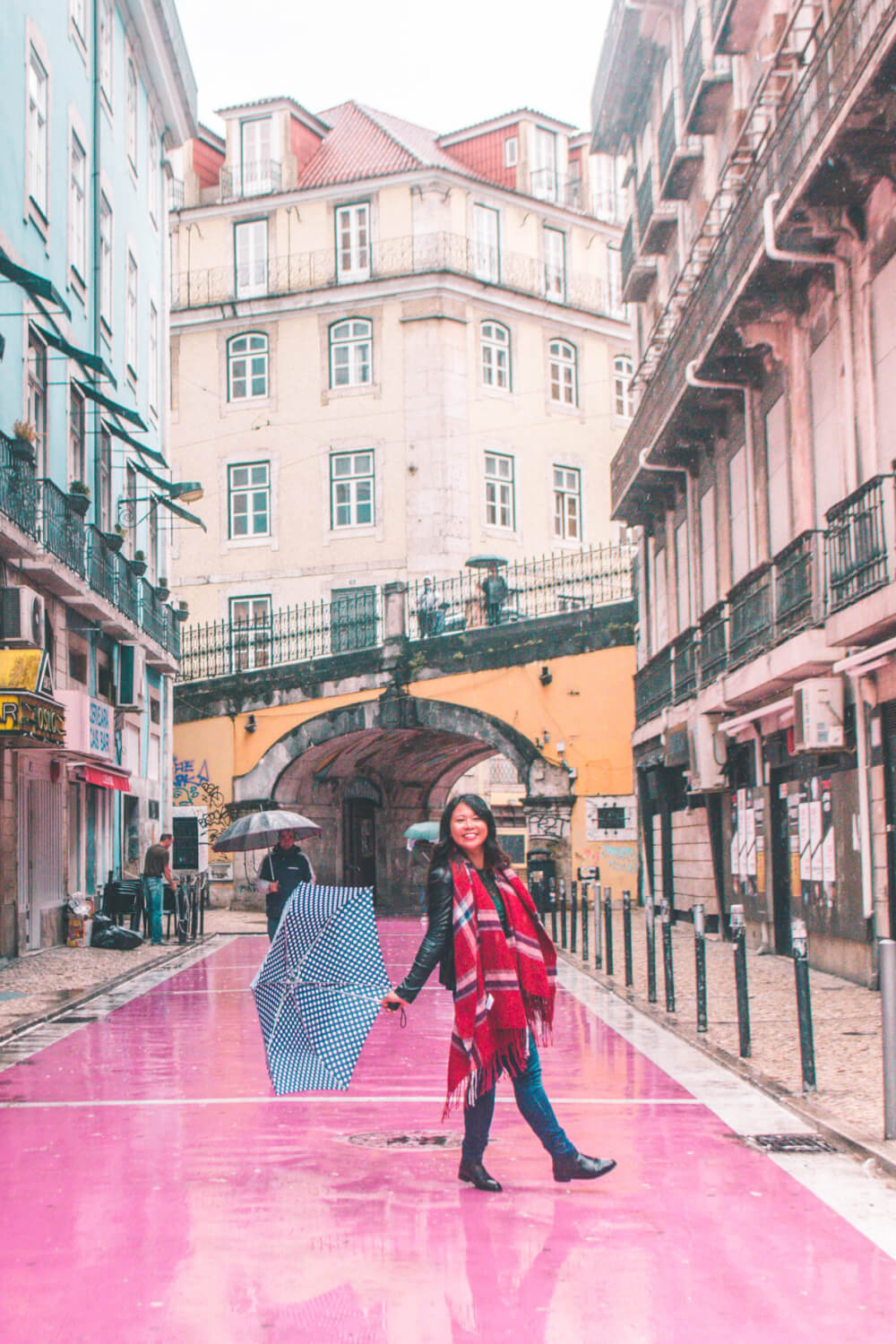
7. Beware that there will still be crowds in shoulder season
On that note though, I don’t want you to underestimate how crowded it can get in Portugal, even in shoulder season.
Portugal may still be seen as an up and coming destination among North American travellers, but it has been a go-to vacation spot among Europeans for YEARS and years and years…
So don’t be surprised when there’s a lot of people around. Even in March. or April. Sadly, there’s no true ‘off-season’ in Portugal these days!
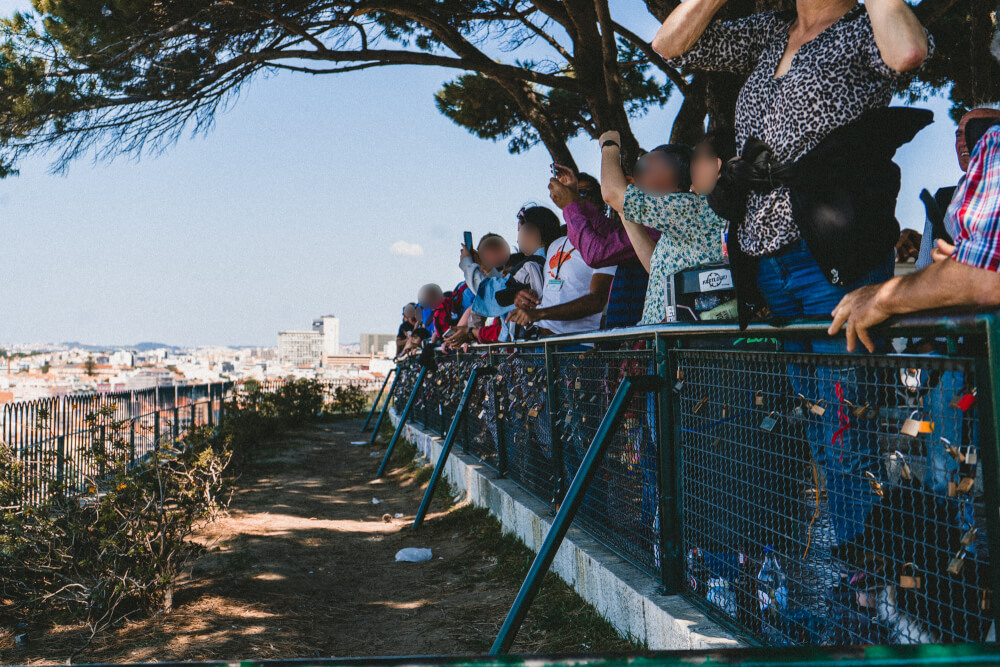
8. Book popular day trip destinations as overnight stays instead
Of course, in spite of the country’s frightening popularity, there are still ways to avoid crowds and outsmart your fellow tourists.
One of my top Portugal travel tips for this is booking popular day trip destinations as an overnight stay instead.
This will allow you to wake up really early to see the busiest sites before the day trip crowds arrive, and then enjoy them properly after they leave.
I did this for instance in Sintra, opting to stay for two nights instead of going as a day trip from Lisbon as most visitors do. The result? I was able to enjoy many of Sintra’s palaces without feeling like I was in a selfie stick mosh pit.
… So, I’d highly recommend doing popular day trips as overnight stays instead. Book early enough and sometimes accommodation in these areas is cheaper than in big cities!

9. Learn some Portuguese basics & have Google Translate handy
For first time visitors to Portugal, an immediate culture shock is often that English is not as widely spoken here as other tourist areas in Europe, especially among older residents.
And while getting with English is usually fine in larger cities, once you venture out into smaller towns, speaking no Portuguese can be a challenge… so I’d advise having Google Translate (one of my must-have Europe apps ) ready to go.
BUT more importantly: at the very least, you should learn how to say hello and thank you. So, memorize these! Tattoo them on your wrists:
- Hello is Olá, but it’s more common to greet according to the time of day so Bom Dia (Bong Dia) for good morning, Boa Tarde (Boa Tarht) for good afternoon and Boa Noite (Boa Noit) for good night
- Thank you in Portuguese is gendered, and the way you say it depends on if YOU are a man or woman. So men say Obrigado, women say Obrigada

10. Note that there’s differences between European and Brazilian Portuguese
Now, if you decide to go all-out and learn some Portuguese for your trip, it’s probably a good idea to make sure you’re learning European Portuguese pronunciation, as opposed to Brazilian Portuguese.
Like with most languages, Portuguese has various accents/dialects/variations, but I’ve heard the difference between European vs. Brazilian Portuguese can actually be quite stark, so to maximize your chances of being understood, try to make sure you’re learning European Portuguese.
One channel I came across that was great for this was Practice Portuguese, so give them a watch.
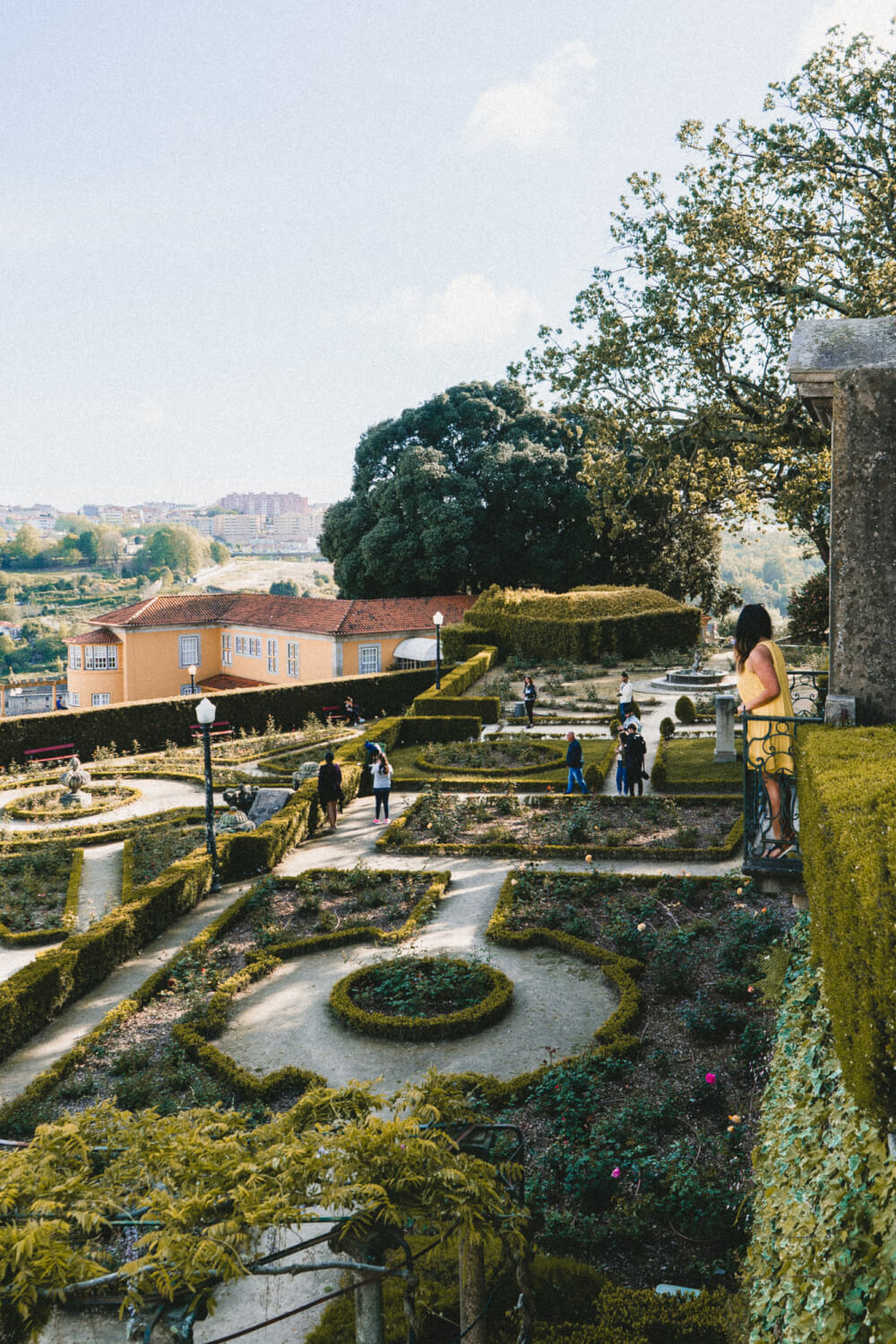
11. And… remember that Portuguese and Spanish aren’t the same
It feels silly that I have to say this, but I’ve anecdotally heard of many visitors busting out Spanish in Portugal, expecting to be understood.
Therefore let me clarify this most obvious Portugal travel tip: remember, in Portugal, they speak Portuguese, which may share some similarities with Spanish, but is an entirely different language of its own.
So keep in mind that while you may be somewhat understood, it’d be pretty rude to just randomly speak Spanish at people. So… let’s all just make a pact right now to not do that.

12. Learn to pronounce destination names in Portuguese
Apart from learning the basics in Portuguese, another important Portugal language tip is to learn how to properly pronounce your destinations in Portuguese.
This will save your life when it comes to asking for directions, because many places are pronounced differently to how they may be pronounced phonetically in English.
I found this video to be super helpful for this purpose.
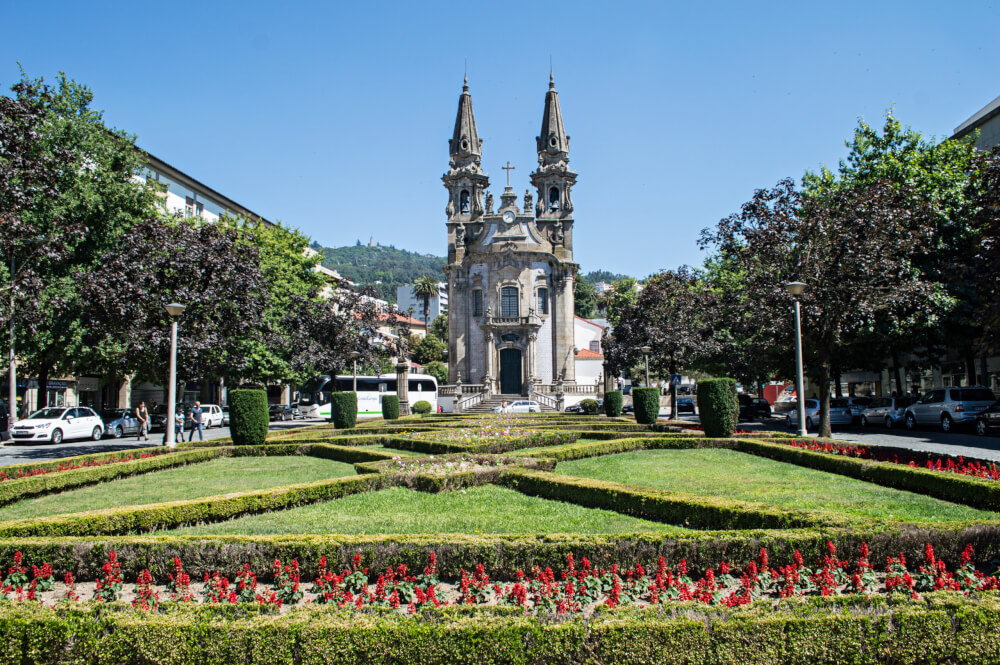
13. Beware of ‘Portuguese Time’
Another cultural difference is to beware of Portuguese time.
Unlike in some central European countries like Germany , Austria or Switzerland, punctuality isn’t really a huge priority in Portugal, and things tend to be more laidback in terms of time.
As a tourist, this probably won’t impact you that much unless you’re making plans with Portuguese friends, but just know that time is definitely a bit more flexible there, and so if you have tours that start a bit later than planned, just don’t be too surprised.
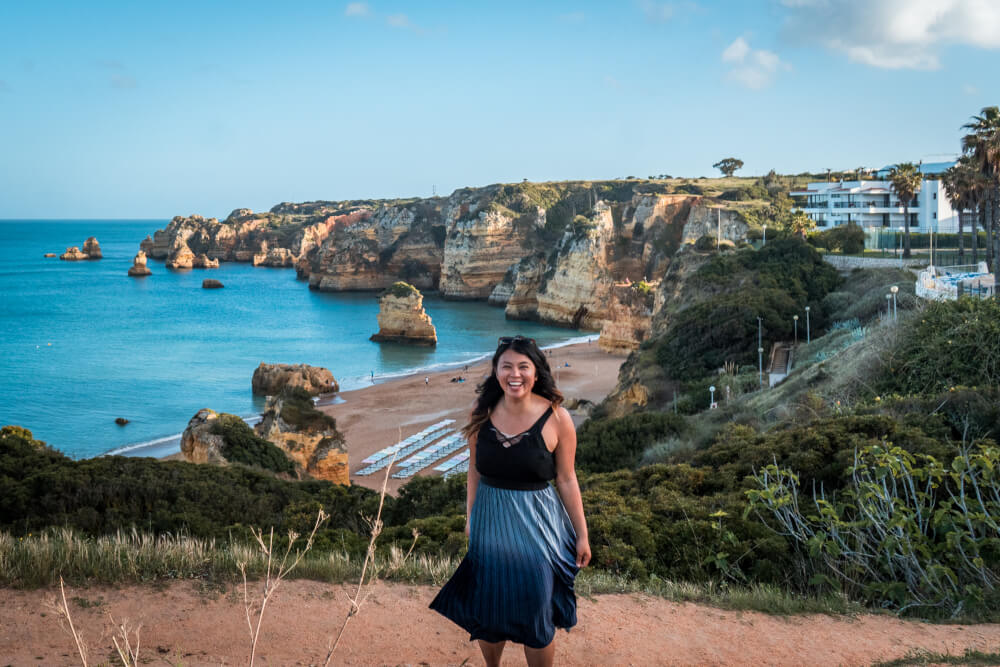
14. Be prepared to walk uphill a LOT
Now onto another Portugal travel tip that pretty photos fail to convey: prepare yourself for the leg workout of your LIFE.
Portugal is overall an incredibly hilly country, so you’ll be encountering plenty of ups and downs during your visit, especially if you visit Lisbon and Porto.
The cobblestones are also very slippery, especially when it rains so make sure you have good, solid footwear. Don’t say I didn’t warn you.
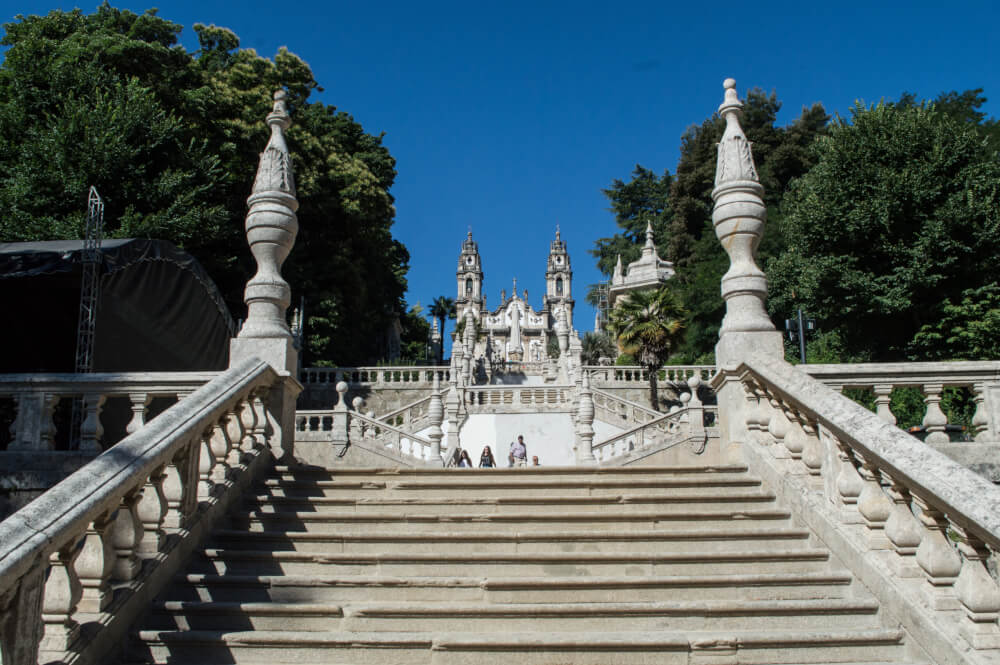
15. Consider attraction passes/cards to save money
If you plan to visit a lot of museums and paid attractions while you’re visiting Portugal, you should also look into attraction passes like the Lisbon Card and the Porto Card which offer you unlimited public transport and also admission to multiple attractions for one set price.
This can work out to a lot of savings, although to be honest, I’ve found many of the best things to do in these cities are free!
Especially if you’re not super into museums, this option may not be worth it, so just crunch the numbers and total up the price for your must-see attractions to see if the pass works out to be cheaper.
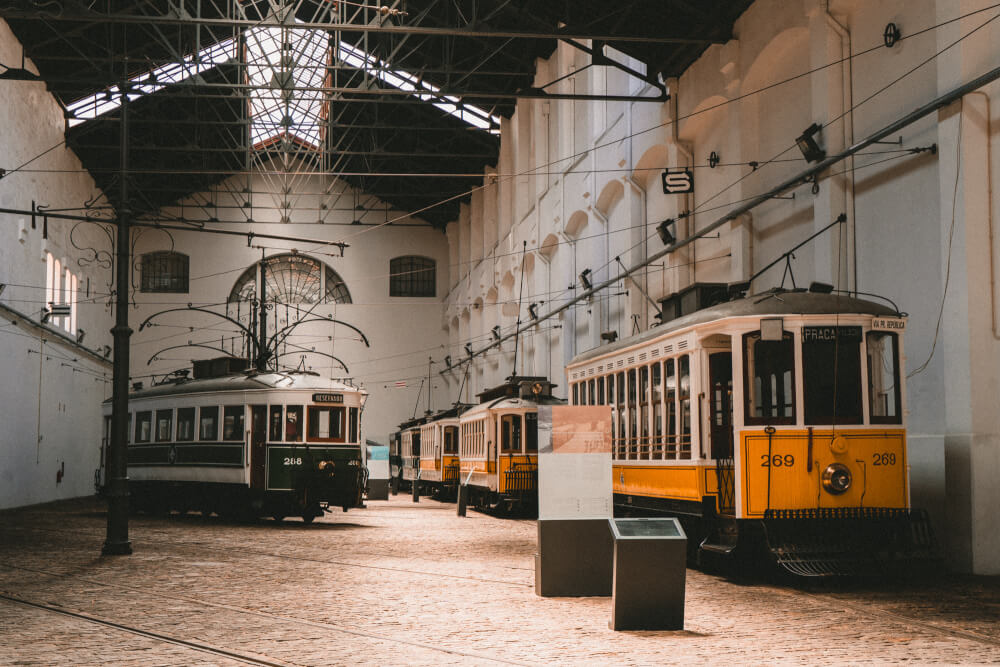
16. Beware of tourist traps
Okay, now it’s time for me to get a little controversial. I love Portugal as a destination, but I have to concede there are a lot of tourist traps (many of which are perpetuated by online guides/influencers) so I’m going to quickly share my opinion on some to be mindful of in the country’s most popular destinations:
Here are some tourist traps in Lisbon to keep in mind:
‘The Pink Street’: In real life, it’s just a street with restaurants and bars, and the pink isn’t nearly as perfect or vibrant as the photos make it look. It’s also usually crowded in the evenings… so don’t get your hopes up too much!
Tram 28: Super congested, super busy, lots of pickpockets, and you can enjoy the views much better if you just walk along the same route.
The Santa Justa Lift: Nice to look at, with great view from the top, but the lines are insanely long and you can easily walk up to the viewpoint for free and not have to wait in line. The best part of this attraction is really just seeing it and enjoying the view, so don’t think it’s a must do to actually ride it.
Here are some tourist traps in Porto to keep in mind:
Libreria Lello: Initially got famous because it was claimed that JK Rowling wrote Harry Potter there or was inspired by it (a claim she has now publicly denied). It is of course still a very pretty bookshop but unless you get there first thing in the morning or just before they close, it will not be magical at all because it is painfully crowded and almost impossible to get these nice photos without people in them because the shop is small. There’s also a 5 euro voucher you have to purchase to get inside, which gives you 5 euros off a purchase, but it’s not free to go in to take a look.
Private Property Viewpoints: Unfortunately, irresponsible Instagrammers have made a habit of taking photos from areas that are private property, so many of the most sought after views in the city aren’t actually open to the public. So, make sure you do your research before you set out!
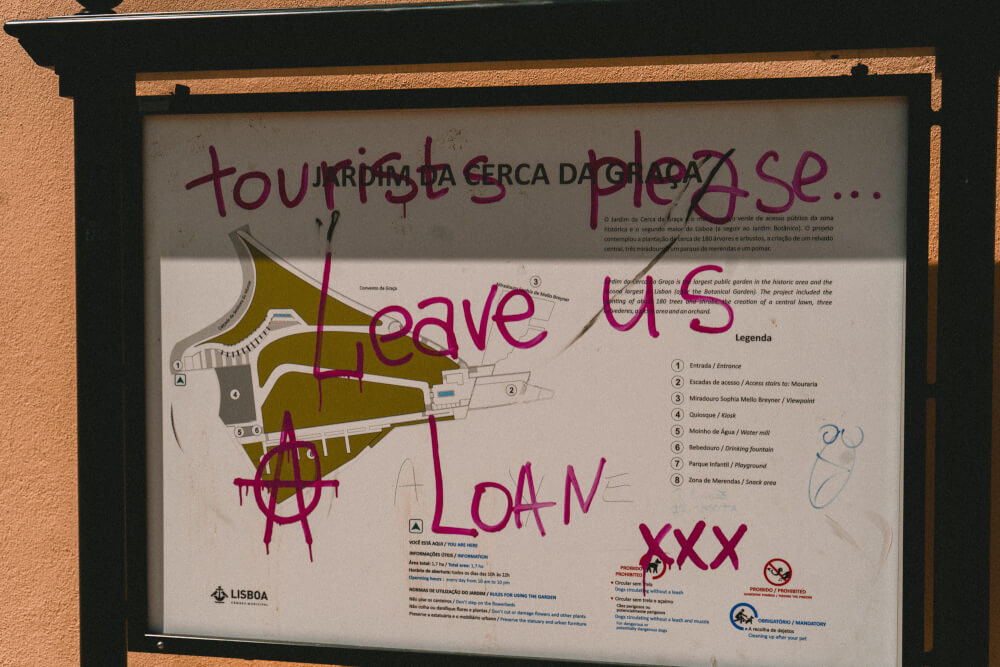
17. Look beyond social media to find unique hidden gems
So, on that note, it’s important to look beyond social media to find fun places to visit and cool activities in Portugal.
Most travel content about Portugal focuses on the same spots over and over, but the flip side of that is there are TONS of cool gems just everywhere that you can kind of discover along the way for yourself.
I would recommend doing research on Portuguese language blogs or check out local Portuguese bloggers to get an inside scoop on more offbeat places because there are so many, and I can’t wait to go back and see more for myself.
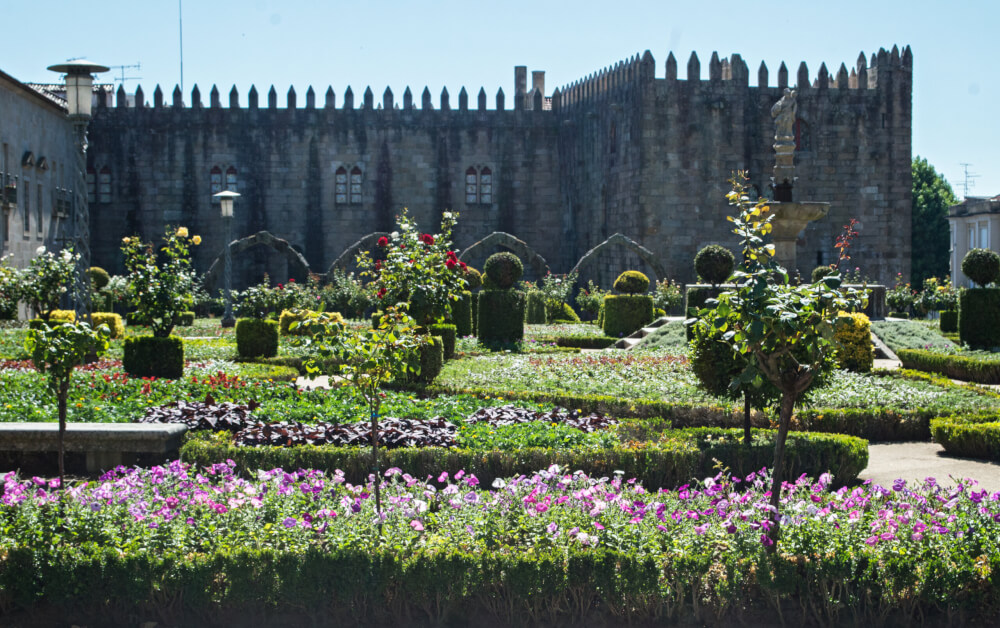
18. Seek out Miradouros everywhere you go
On that note, one really easy way to find beautiful places in Portugal is searching for Miradouros.
This is Portuguese for viewpoints and there are SO many of them especially in Lisbon.
So if you ever feel bored, just search Miradouro and go – guaranteed you’ll find a good view.
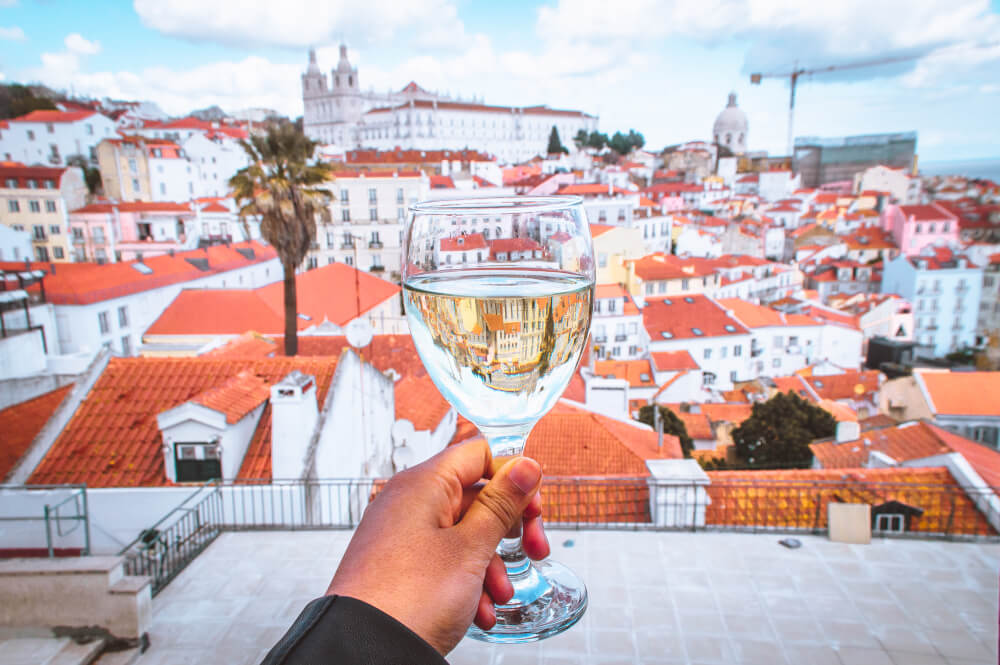
19. Beware that free museum days aren’t free for everyone
A lot of travel guides online have been perpetuating the Portugal travel tip that many museums are free on the first Sunday of each month in Portugal…
BUT it’s important to note that actually when you look at the fine print, many of these offers are only valid for residents of Portugal (e.g. here ) so keep that in mind and double check on official websites before you head out expecting your freebie.
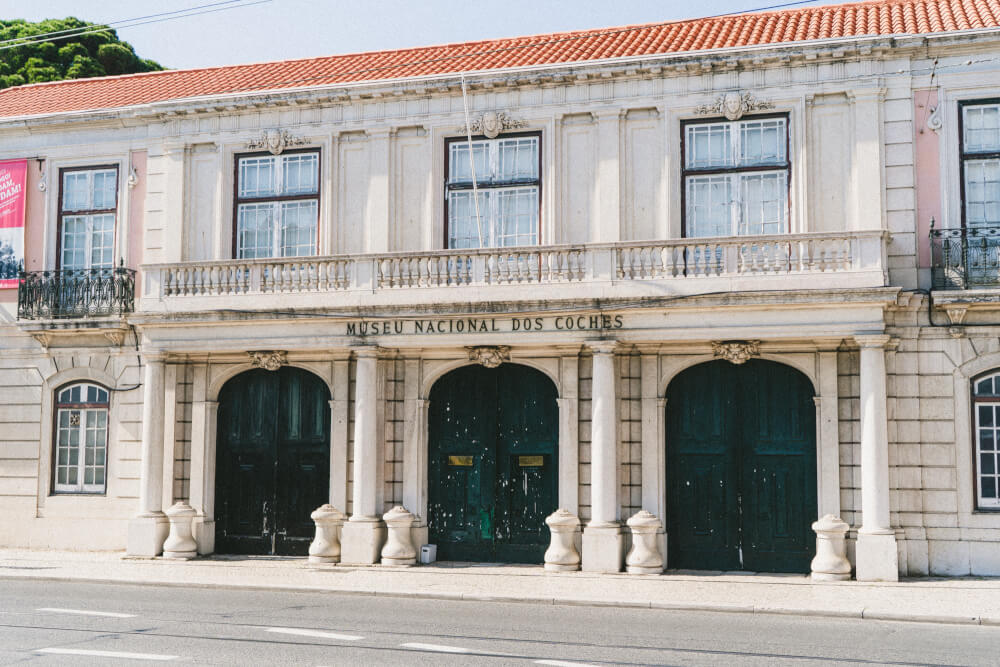
20. Make sure you try Vinho Verde
Moving onto Portugal tips for food and drink – AKA the most delicious and valuable section.
My first recommendation is to try Vinho Verde or green wine. I know it sounds weird, but the ‘green’ part of the wine has less to do with the wine’s colour, and more with its age.
In short, Vinho Verde is a young drinkable wine that’s not aged, and often a little fizzy, making it THE most delicious and refreshing accompaniment for a sunny terrace. I warn you though: this is some dangerously drinkable stuff, and you’ll be swallowing it by the gallon throughout your trip.

21. And avoid ordering Port wine with your meal
On the topic of wine, if you find yourself wanting to try the famous Portuguese Port wine, know that it’s a very sweet dessert wine that is usually enjoyed on its own after a meal (though sometimes before) and not one you sip during your meal.
… So avoid pairing your dinner with Port. That’s not the best way to enjoy it!

22. Research regional specialties before you go
Food-wise, Portuguese cuisine is super hearty and delicious, with many regional specialties depending on where you are in Portugal so be sure to Google the particular must-tries of your destination.
Of course, I can’t resist sharing a few quintessential recommendations.
First off, if you’re by the coast, fresh seafood is abundant and delicious, especially Bacalhau or Codfish which is available in literally hundreds of ways, including Pastéis de Bacalhau which are deep fried balls of potato and cod. So good!
In Porto, one very gluttonous must-try is the incomparable Francesinha – a thick sandwich stuffed with all kinds of meat and cheese then topped with more melted cheese, a dreamy sauce and often a fried egg.
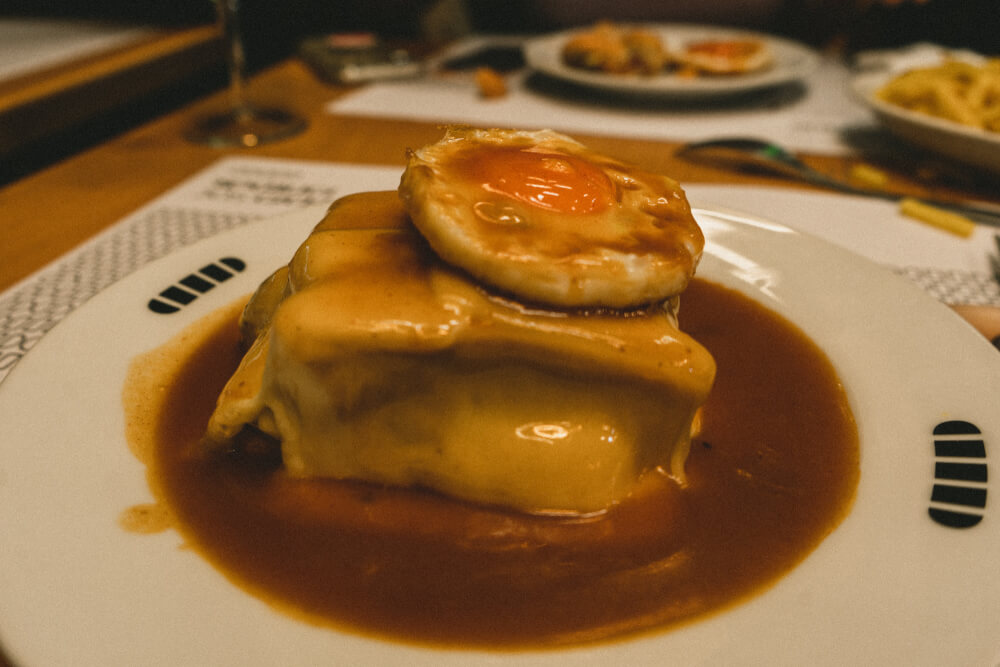
And, a specialty of Belem and Lisbon is the almighty Pastel de Nata. These are egg custard pastries that come in a crispy crust. They are absolutely incredible, and sure to be one of the highlights of your trip (and possibly life).

23. Consider ordering Petiscos to sample a variety of flavours
Not sure where to begin with Portugese cuisine? A great way to try a lot is by ordering Petiscos, which are small shareable bites similar to Tapas.
Of course, what is served as Petiscos can vary regionally as well, so be sure to do some research or ask for local recommendations, but overall, ordering a bunch can be a nice way to try a lot of different dishes and it can also be a more affordable alternative to getting full main dishes as well.
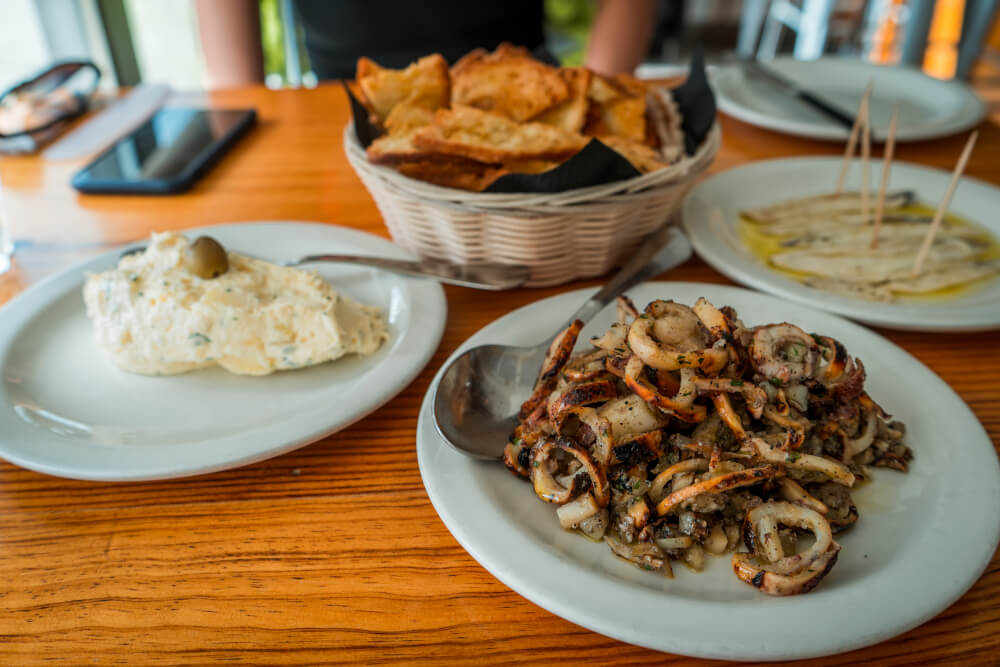
24. Prepare for late meal times
In terms of dining out, there are a few things you should know. First off – mealtimes in Portugal may be later than you’re used to.
It’s not uncommon for dinner time to be around 8 or 9pm or even later. Meals often last longer here too, taking several hours, so don’t feel any need to rush. Remember, Portuguese time is relaaaaaxed and fluid.
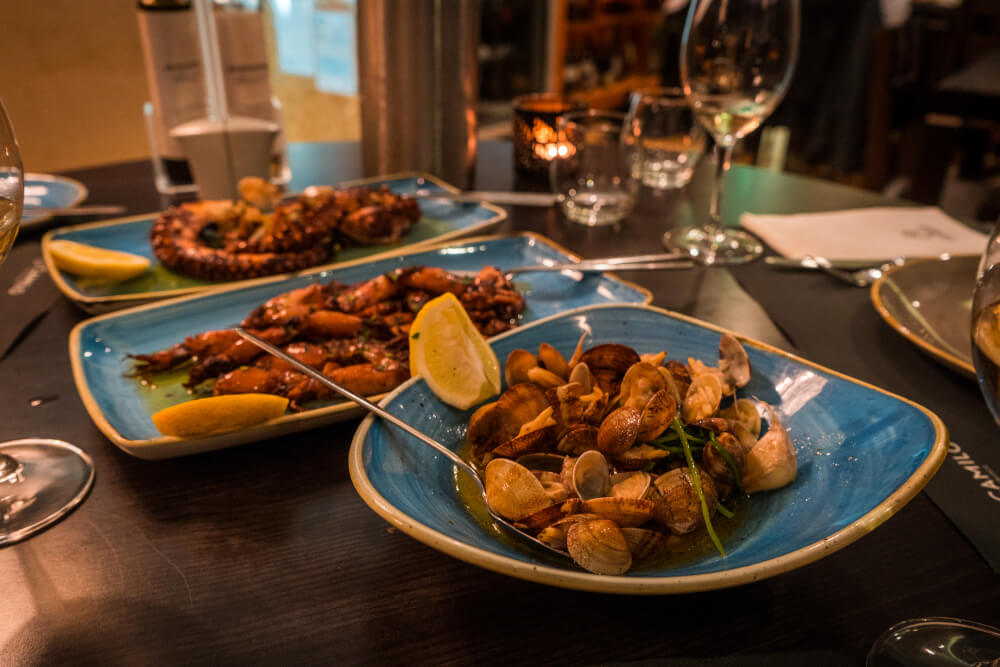
25. Do not expect continual service in restaurants
Another Portugal must-know is you should not expect continual service in restaurants here.
Often smaller local restaurants (or their kitchens) will be closed in the late afternoon to early evening, so from 2 or 3pm until 7pm, during which they only have some snack items or might not be open at all.
In larger cities, you’ll probably still find some places open but often these will be the ones that cater more to tourists.
So, keep these timings in mind so you can manage your hanger accordingly.

26. Learn how to spot tourist trap restaurants in Portugal
Speaking of restaurants that cater to tourists, there are a few easy ways to spot touristy restaurants in Portugal.
The first is if they’re in a particularly touristy area near a big attraction, you can probably expect prices to at least be a bit higher, and the value for money to be worse. A huge red flag is any place where there’s a host actively trying to get you to eat at their restaurant, as well as places with huge pictures or where the menu is a bunch of languages.
Often you can escape these by just walking a few blocks away from the main sights so be sure to look around a bit before committing.
Or if you want to enjoy the atmosphere because sometimes these touristy restaurants do have some great views and locations, just pop in for a drink, rather than a full meal.
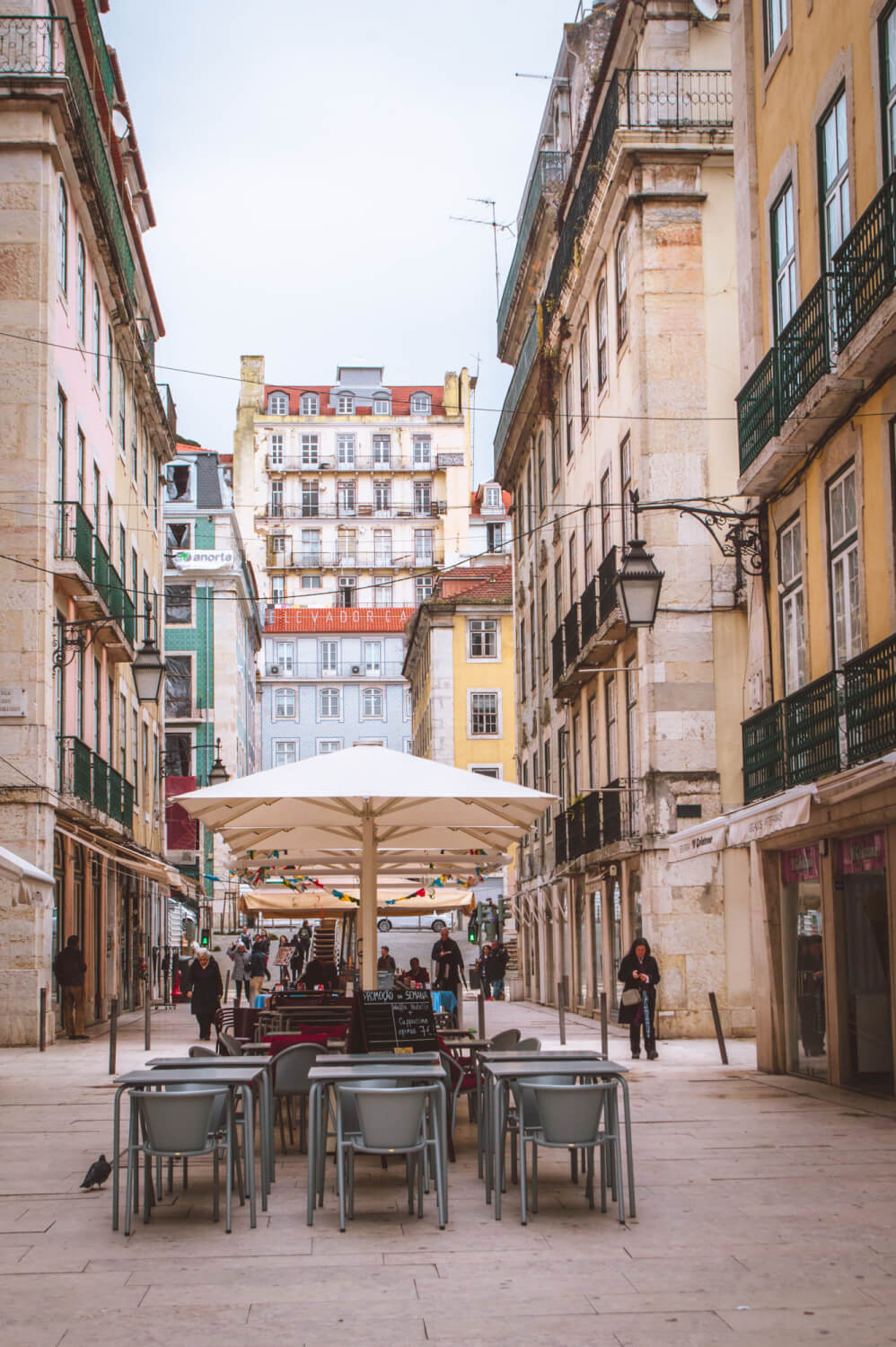
27. Know that your table snacks will probably cost extra
Another important Portugal must-know is that often when you arrive at a restaurant, there will be snacks like olives or bread put on the table.
To the surprise of many first time visitors, these aren’t actually included and come at an extra cost, known as “Couvert”, which is usually 1-2 euros per person.
Just know this isn’t a scam, it’s just a cultural difference in the way they charge for things so keep that in mind if you’re eating at a restaurant, and feel free to say ‘no thank you’ if you don’t want any, and you will not be charged for them. The price of the Couvert is also usually listed on the menu, so you can double check the cost before committing.
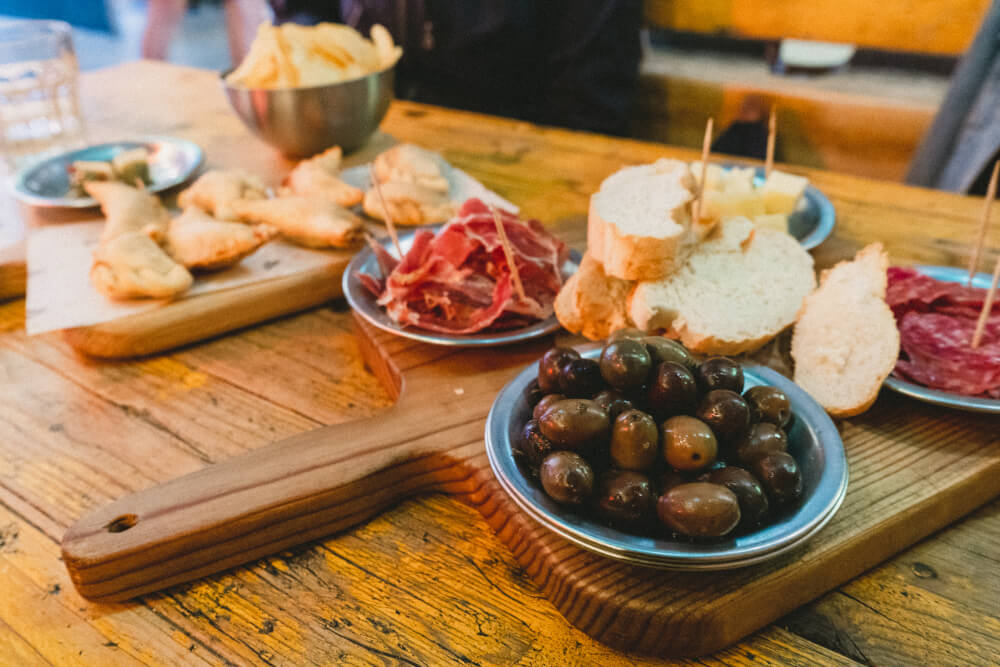
28. Learn Portuguese tipping etiquette
Tips aren’t expected in Portugal to the same extent as in North America, but if you want to, usually rounding up or doing 10 percent is fine.

29. Bring cash (in smaller denominations)
Another important Portugal must-know once you arrive is that you should make sure you have cash on you.
While many places are taking card now, paying with cash is still the norm in Portugal, especially with smaller bills. The smaller the denominations you can get the better, because I’ve found that smaller places like cafes don’t like to break large bills. Ideally, keep to ten euro bills or below.
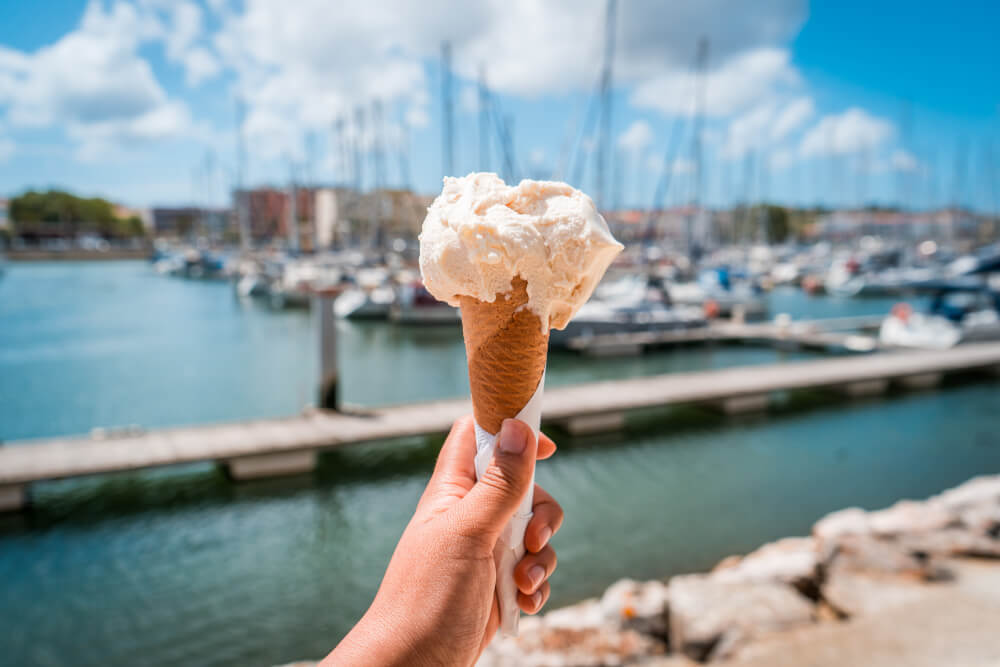
30. Don’t carry too much cash at once
That said, do not bring too much cash out with you at once, especially in touristy and busy areas in Lisbon, because pickpockets can be a an issue.
I’ve only been pickpocketed twice in my life and Lisbon was one of them so I’m still a bit sore about that.
So, go by my rule of thumb, which is to not carry more cash than you can stand to lose.
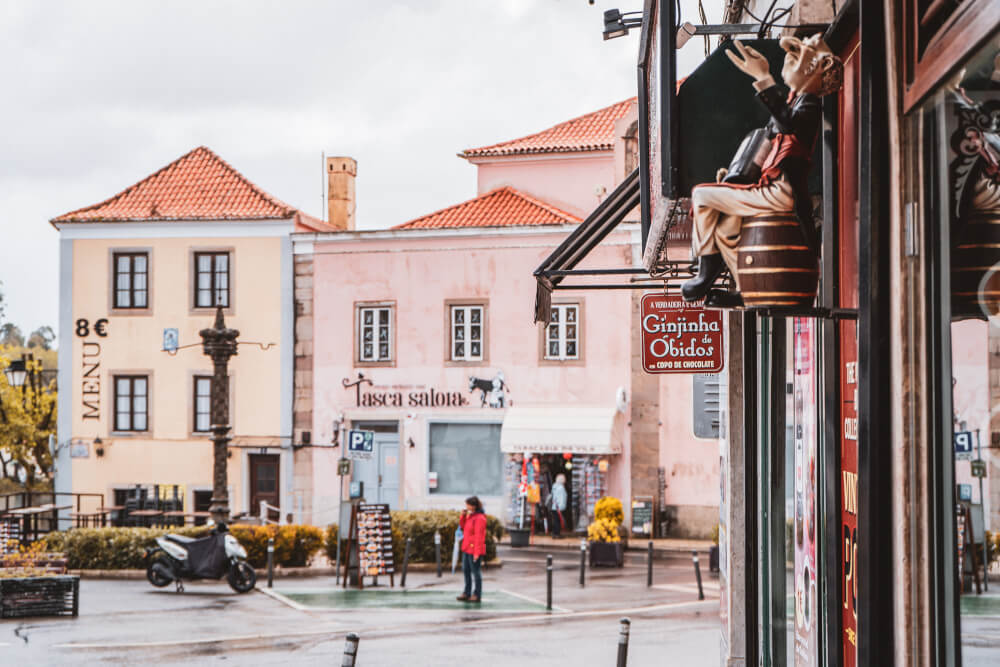
31. Beware of sketchy dealers
Another scam to look out for is dealers offering to sell you ‘illicit substances’ when you’re just out and about, minding your own business on the street.
This is of course mainly an issue in high-traffic tourist areas, as they always target silly tourists who don’t know better.
Here’s how it works: someone will come up to you and ask if you want something innocent like sunglasses, then they’ll follow up with whether or not you want said illicit substances. Apart from the fact that this already sounds sketchy, they’re also not selling real illicit substances, so no matter what, make sure the answer is no.

32. Be mindful of later opening times
Another thing to be mindful of when visiting Portugal is opening times.
(I’m talking of course about actual shops and restaurants, not those aforementioned dealers)
Overall, things run on a later schedule in Portugal relative to most of central Europe, so you can expect supermarkets to not open until 8am and close later as well, usually at 9 or 10pm.
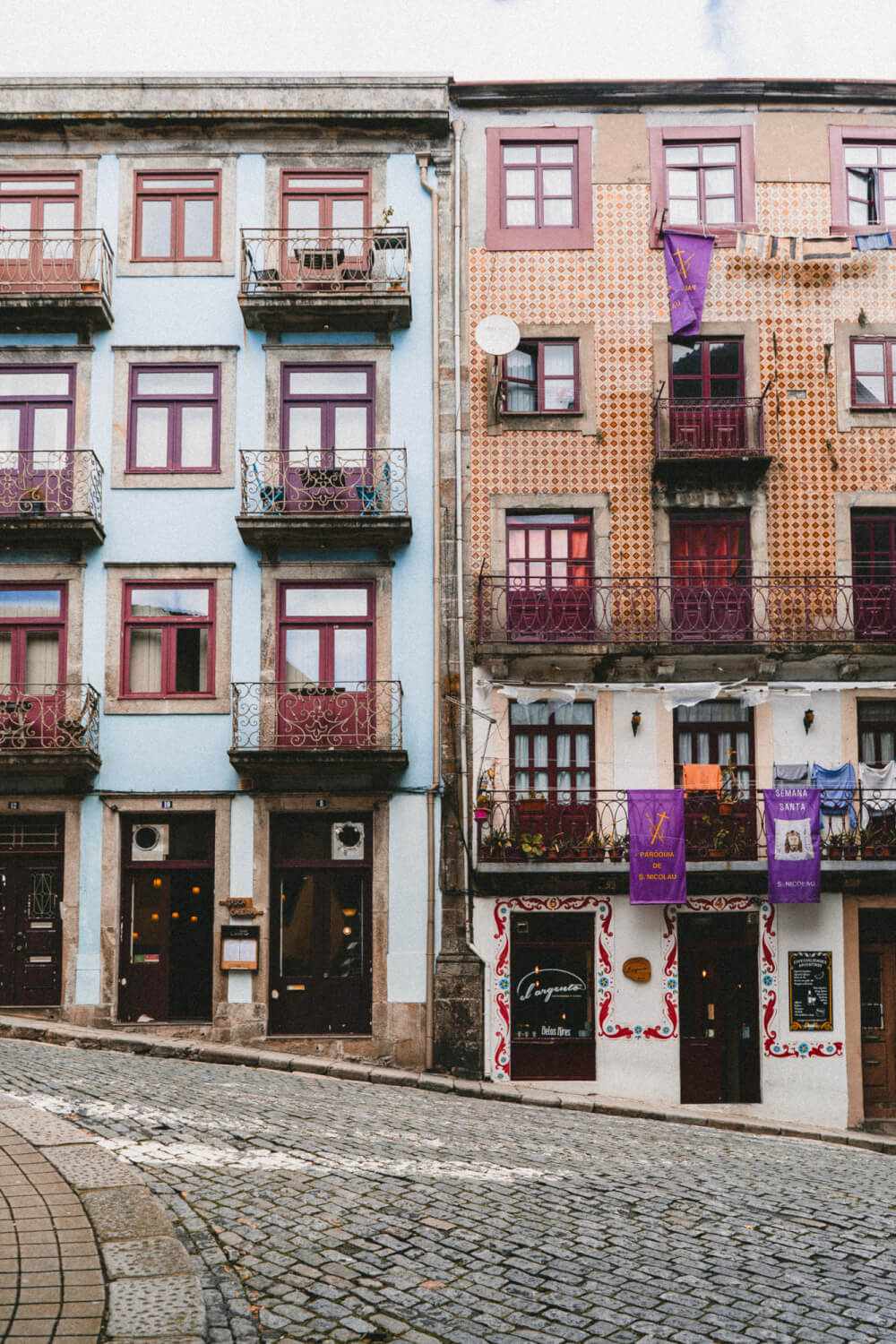
33. Pack warmer layers no matter when you visit
Okay final Portugal packing tip for you, be sure to pack some warmer layers, even if you’re going in the summer because the wind in Portugal (particularly along the coast) is vicious .
No – seriously. My trauma can attest! Portuguese wind can be really biting, especially when temperatures drop at night, so having at least one warm layer in your suitcase is a must.
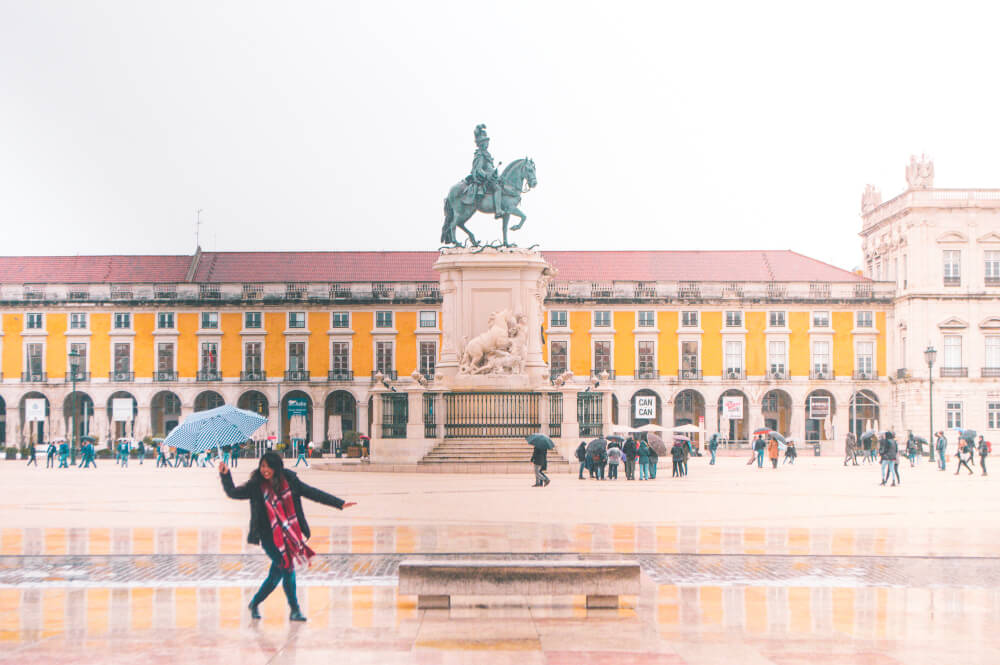
I hope this list of Portugal Travel Tips was helpful!
Congratulations on making it through the longest ever list of Portuguese travel tips. I admit this was already a VERY long list of tips for Portugal, but if you have any more questions, let me know in the comments.
My Go-To Travel Favourites:
🧳 Eagle Creek: My favourite packing cubes
💳 Wise: For FREE travel friendly credit cards
🍯 Airalo: My go-to eSIM
🏨 Booking.com: For searching hotels
📷 Sony A7IV: My (amazing) camera
✈️ Google Flights : For finding flight deals
🌎 WorldNomads: For travel insurance
🎉 GetYourGuide: For booking activities
1 thought on “30+ Portugal Travel Tips for First Timers & Must Knows Before You Go”
Thank you! I enjoyed the common sense approach. This was very helpful.
Leave a Comment Cancel reply
By using this form you agree with the storage and handling of your data by this website. *

Portugal Travel Tips
Last Updated: September 18, 2024
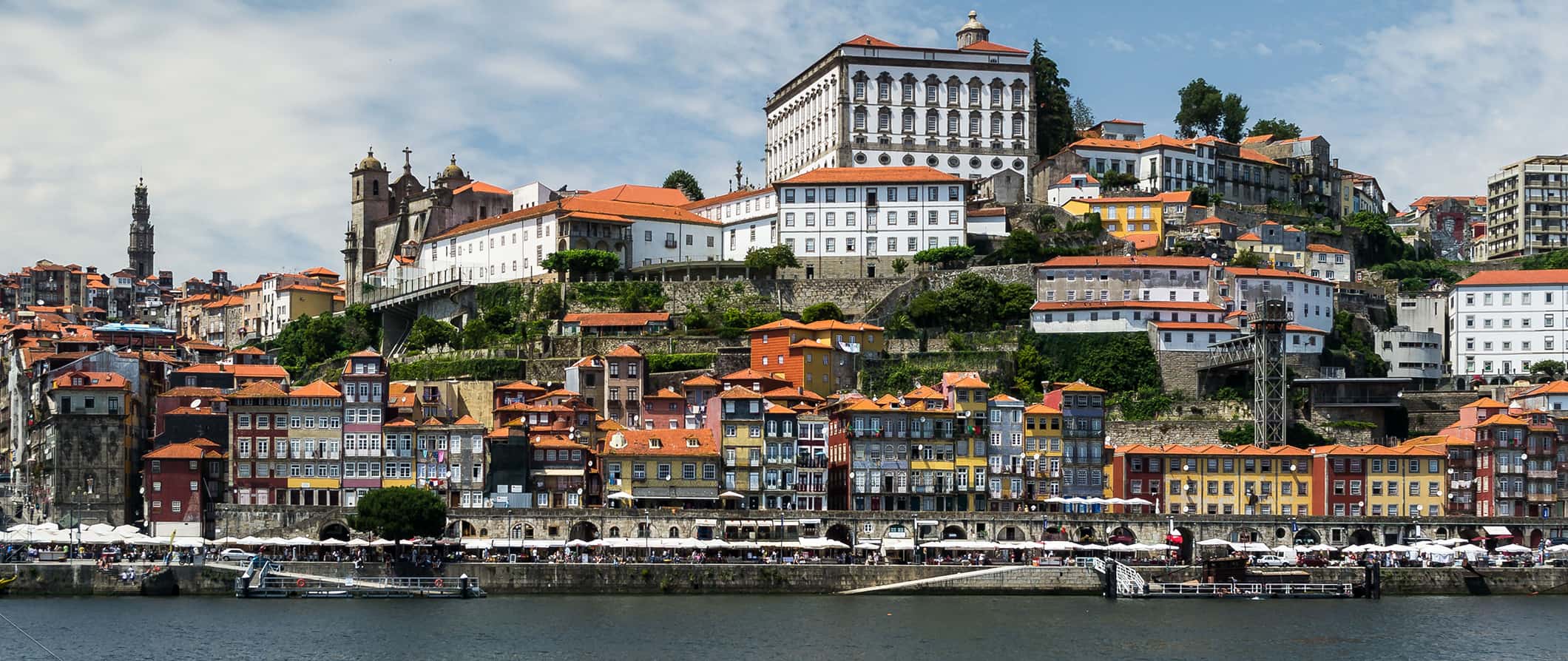
Portugal is a country blessed with stunning beaches, a rugged coastline, cosmopolitan cities, and incredible weather. Throw in great food, plentiful wine, and cheap prices, and it makes for a perfect — and underrated — holiday spot.
I’ve been to Portugal many times over the years and I never tire of it . It’s one of the most unappreciated countries in Europe and sees a fraction of the tourists that its neighbors do.
Sure, in recent years Lisbon has become a hub for digital nomads, expats, and retirees thanks to its low cost of living. But, in the rest of the country, not much has changed.
Best of all, fewer crowds mean a better, more local experience that won’t break the bank.
This Portugal travel guide can help you plan your trip, save money, and make the most of your time in this stunning and underrated European gem!
Table of Contents
- Things to See and Do
- How to Stay Safe
- Where to Stay
- Typical Costs
- Suggested Budget
- Money-Saving Tips
- How to Get Around
- Best Places to Book Your Trip
- Related Blogs on Portugal
Click Here for City Guides
Top 5 things to see and do in portugal.
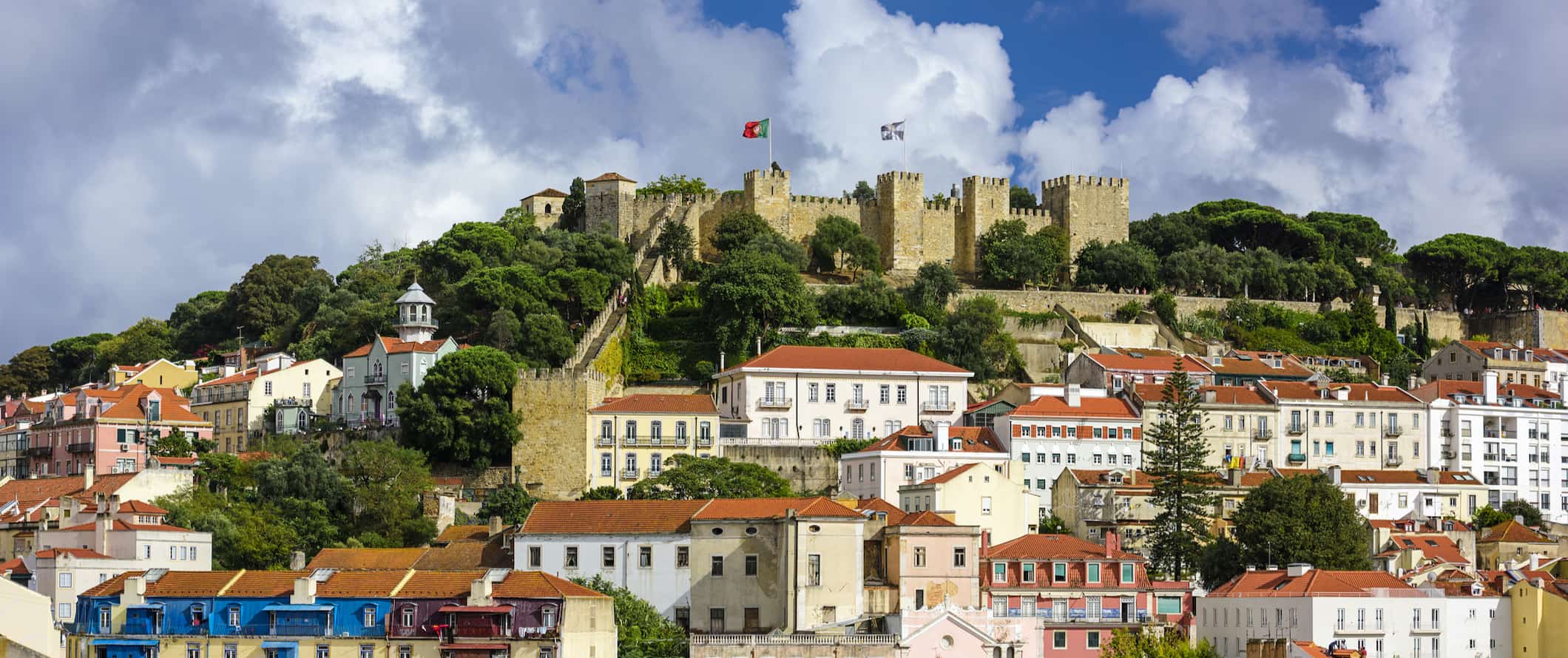
1. Admire Lisbon
Lisbon is gorgeous. I instantly fell in love with it. It has mystique, history, and great food. Take a trip to the Castle of St. George, see the 16th-century UNESCO Belem Tower, admire the churches (specifically the Sé de Lisboa Cathedral), listen to some traditional Fado music, and enjoy the delicious cuisine. It’s one of the most affordable and underrated capitals in Europe!
2. Visit Batalha Monastery
Batalha is a town located just 90 minutes by car from Lisbon. The town is home to Batalha Monastery, officially known as the Monastery of Saint Mary of the Victory. Built in 1388, it’s one of Europe’s greatest Gothic masterpieces and makes for a popular day trip from Lisbon. The monastery took 131 years to build and is now a UNESCO World Heritage Site. Walking through the gigantic gothic doorway and seeing the towering interior (which is lined with 16th-century stained-glass windows) is absolutely breathtaking. Admission is 6 EUR, but you can also purchase a combo ticket to see The Convent of Christ in Tomar and The Abbey of Santa Maria for 15 EUR.
3. Explore the Azores
These 9 islands lie 1,500 kilometers (930 miles) from Lisbon in the Atlantic Ocean. Each of the islands offers a slow-paced way of life, unique wildlife, and stunning beaches. These islands are very off the beaten track and a good “out of the way” place to go. São Miguel is great for hiking and road trips, Pico has great wine, and São Jorge has incredible nature, but you can’t go wrong with any of the islands here!
4. Party in Lagos
Lagos is the place people go to party in Portugal. It’s an excellent destination to soak up the sun. During the summer, this is one of Europe’s premier party destinations for young travelers. there are also incredible beaches, great surfing, and lots of historic churches here. The city is also home to Europe’s first slave market, a sobering sight that dates back to 1444.
5. Enjoy Porto
Porto is one of Portugal’s most colorful cities. Spend some time getting lost and meandering the narrow alleyways and steep staircases that lead to the scenic Douro River. Hop on a river cruise, visit the iconic Lello & Irmão bookstore, tour the museums, and visit the surrounding Duoro Valley and its many vineyards (this is the region where port wine comes from, hence the name). It’s also one of the main launching points for the famous Camino Portugues hike that leads to Santiago de Compostella in Spain (which takes 10-14 days, though you can definitely just do a day hike or a smaller section of the trail).
Other Things to See and Do in Portugal
1. journey to evora.
One of Portugal’s many UNESCO World Heritage Sites, Evora is a small town that offers an array of beautiful and historic buildings. Located 90 minutes east of Lisbon, Evora’s most famous landmark is the Temple of Diana, a Roman temple and UNESCO site from the 1st century. But there is also the Praça do Giraldo, the town’s main square, which is a charming spot to people-watch and embrace the local pace of life. This is small-town Portugal at its best.
2. See the Religious Monuments in Braga
Located one hour north of Porto, the beautiful city of Braga boasts numerous Baroque monuments, including one of the country’s best-known sights: the Bom Jesus Sanctuary (a Catholic shrine and pilgrimage site). The old and the new city are connected by the main square, Praça da Republica, which is a great place for a stroll. The city’s cathedral is also very much worth a visit, as it is the country’s oldest (construction started in 1509).
3. See the Abbey of Santa Maria
Located between Lisbon and Porto, the Abbey of Santa Maria is Europe’s largest Cistercian building (the Cistercians are a Catholic order of monks and nuns, founded in 1098). You can wander around the abbey at your leisure to learn more about its cloisters, dormitories, library, and more. The church is free to enter but the monastery costs 6 EUR. You can save money by purchasing a combo ticket to the Convent of Christ in Tomar and the Batalha Monastery for 15 EUR.
4. Head to Sintra
Lord Byron, an English poet writing in the 18th century, said that Sintra was “perhaps in every respect the most delightful [place] in Europe.” If you are visiting Lisbon, you should definitely make an effort to come here to see its palaces, wonderful views, and museum collections. It’s one of the most beautiful places in the entire country. The train takes about an hour from Lisbon and costs under 5 EUR.
5. Learn about the Knights Templar in Tomar
The big attraction in the town of Tomar is the Templar Castle and Convent of Christ. It was the headquarters for the Knights Templar in the 12th century (they were a Catholic military order founded in 1118 that fought in the Crusades). The castle, a UNESCO World Heritage Site, was an important defensive stronghold against the encroaching Moors (Muslims from North Africa who eventually conquered parts of Spain and Portugal). Admission is 6 EUR or 15 EUR with a combo ticket.
6. Hit the water
Aveiro, located 72 kilometers (45 miles) south of Porto, lies on what’s known as the Silver Coast. This small university town has a historic center built on canals, giving rise to its nickname “the Venice of Portugal.” The winds here create good opportunities for windsurfing and surfing too. You can rent surfboards for as little as 15 EUR per day, while kitesurfing and windsurfing rentals around 50 EUR. If you want lessons, most two-day courses cost around 130 EUR.
7. Get lost in Coimbra
Another university city, Coimbra is located between Lisbon and Portugal and is home to one of the world’s oldest universities (the university was founded in 1290 and moved to Coimbra in 1537). There is a famous and beautiful old library that you can tour, but the real thing to do in Coimbra is just wander through its many historic streets. There are plenty of churches and gardens to take in as you stroll around soaking up the history. It’s a postcard-perfect destination.
8. Attend a Fado performance
Fado is a local type of music that originated in Lisbon. It’s a rather haunting, mournful style often focused on the hardships of the poor or life at sea. The music first appeared in the 19th century and was popular with the working class (especially sailors). The word “fado” likely stems from the Latin word for fate, which is why many of the songs focus on the inevitability of misfortune and suffering. While melancholic, the music is also beautiful and poetic.
9. Check out Faro
Faro is a common starting point for tours of the Algarve region, a southern region brimming with great beaches, tasty seafood, and plenty of tourists. Faro itself isn’t a beach city, but has a lovely old town and is a great place to spend a day before you explore the coast. Don’t miss the cathedral and the municipal museum to learn more about the city.
10. Stand at the edge of Europe
Cape Sagres is the most southwestern point on the European continent. It was here that Henry the Navigator, one of Portugal’s most revered figures during its empire, had his famous navigation school. He was one of the central figures to kick start the Age of Discovery in the 15th century that put Portugal on the map (literally). His development of lighter caravel ships allowed explorations in West Africa, which also launched the slave trade.
11. Try a Pastéis de nata
This pastry is a Portuguese staple. You’ll find these delicious custard-filled tarts at every bakery. They’re a must for an authentic food experience and cost around 1 EUR.
12. Walk the Templar Stairs
Located in Sintra, Quinta da Regaleira is a UNESCO World Heritage Site composed of several historic buildings, including a huge palace and chapel. But the highlight is the Initiation Wells, two massive wells that stretch far underground. They were built by the Templars for their initiation rituals. Would-be knights would have to travel down a winding staircase into the massive wells blindfolded and navigate a labyrinth before coming back to the light. Today, you can tour the wells and explore them yourself. Admission is 10 EUR.
13. Hike the Camino
The Camino Portugues (The Portuguese Way) is a pilgrimage trail that stretches from Lisbon to Santiago de Compostela in Spain. It’s the second most popular Camino, after the main French Way, though it sees a fraction of pilgrims compared to the main route. Most hikers start in Porto, with the 280 kilometers (173 miles) journey taking around 10-14 days, though it’s also possible to start in Lisbon for a longer trek.
For more information on specific cities in Portugal, check out these guides:
- Lagos Travel Guide
- Lisbon Travel Guide
- Porto Travel Guide
How to Stay Safe in Portugal
Portugal is very safe for backpacking and solo travel as violent attacks are uncommon. Pickpocketing is the most common crime and can occur in touristy areas and on public transportation. Be aware of your surroundings when you’re in markets, on busy streets, and when using the metro. Always keep your valuables secure and out of sight just to be safe.
Drugs here have been decriminalized, but it’s best to avoid them as selling drugs is still illegal. If approached and offered drugs, politely decline and continue on your way
You won’t find a lot of travel scams in the country but read this article on common travel scams to avoid just to be safe.
Solo female travelers should generally feel safe here, however, the standard precautions apply (never leave your drink unattended at the bar, don’t walk home alone at night if intoxicated, etc.).
If you experience an emergency, dial 112 for assistance.
Remember: always trust your gut instinct. If a taxi driver seems shady, stop the cab and get out. If your hotel is seedier than you thought, get out of there. You have every right to remove yourself from the situation. Make copies of your personal documents, including your passport and ID. Forward your itinerary along to loved ones so they’ll know where you are.
The most important piece of advice I can offer is to purchase good travel insurance. Travel insurance will protect you against illness, injury, theft, and cancellations. It’s comprehensive protection in case anything goes wrong. I never go on a trip without it as I’ve had to use it many times in the past. You can use the widget below to find the policy right for you:
Where to Stay in Portugal
Budget accommodation is plentiful in Portugal. Here are my suggested places to stay:
- Pilot Design Hostel & Bar (Porto)
- Lookout! Lisbon Hostel (Lisbon)
- Lisboa Central Hostel (Lisbon)
- Yes! Lisbon Hostel (Lisbon)
- Rising Cock Party Hostel (Lagos)
- Gold Coast Calm Hostel (Lagos)
- Casa D’Alagao (Faro)
- HI Hostel Faro (Faro)
- Rivoli Cinema Hostel (Porto)
- Gallery Hostel (Porto)
Portugal Travel Costs
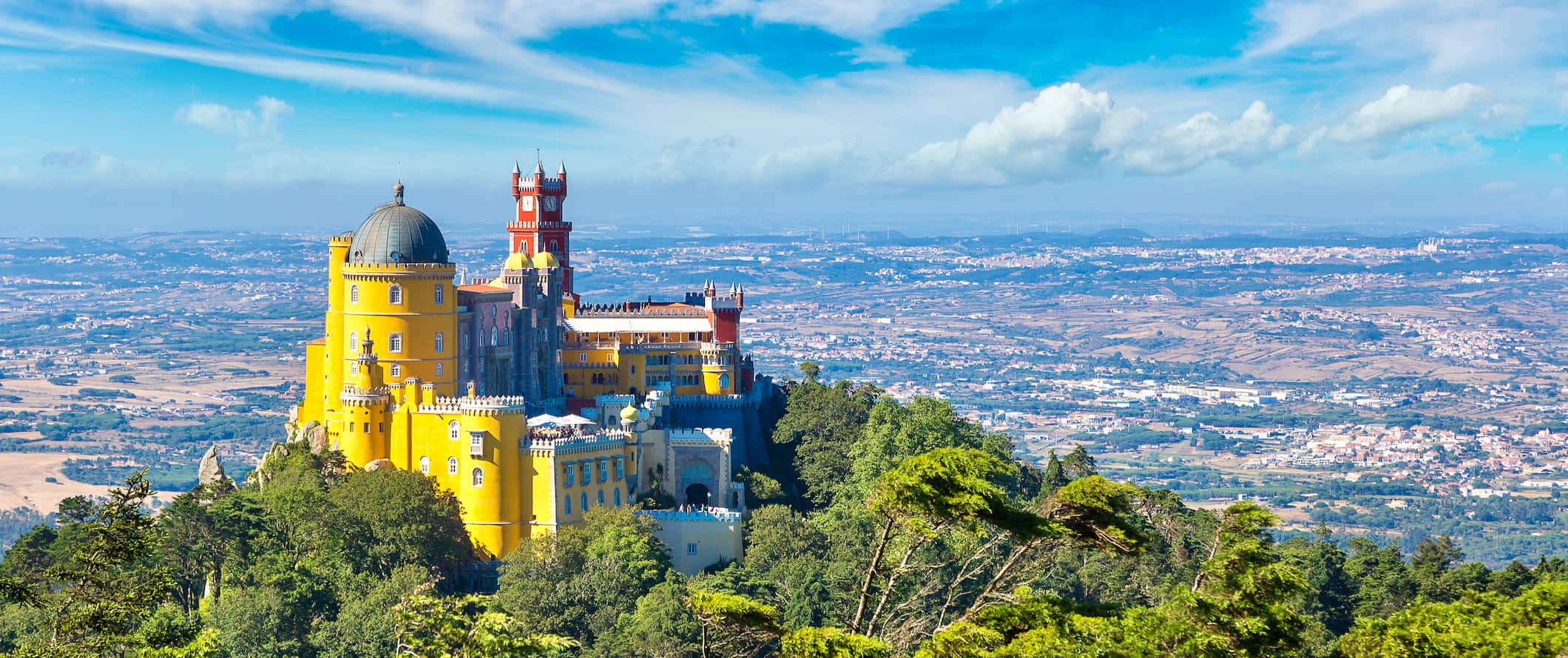
Accommodation
- Hostel dorms – 15-25 EUR per night
- Hostel private rooms – 50-100 EUR per night
- Budget hotels – 40-75 EUR per night
- Airbnb private rooms – 30-50 EUR per night
- Airbnb apartments – 100 EUR per night
- Campsite – 10-20 EUR per night
- Pre-made sandwiches – 8-10 EUR
- Sit-down restaurants – 5-20 EUR
- Fast food (think McDonald’s) – 8-10 EUR
- Beer – 3 EUR
- Cappuccino/latte – 2.50 EUR
- Bottled water – 1 EUR
- Groceries for a week – 35-45 EUR
Portugal Suggested Budgets
Backpacker – 45 eur per day.
You’ll be staying in a hostel dorm room, cooking all of your meals, limiting your drinking, using public transportation to get around, and sticking to free activities like free walking tours and enjoying the beaches. If you plan on drinking, add 5-15 EUR per day to your budget.
Midrange – 125 EUR Per Day
On a midrange budget, you can stay in a private Airbnb or private hostel room. You’ll be able to eat at cheap local restaurants and cook some meals, use public transportation and take the occasional taxi, visit museums and take some guided tours, and enjoy some drinks at the bar.
Upscale – 235 EUR Per Day
On a “luxury” budget, you can stay in a hotel, eat out for every meal, drink what you want, rent a car to explore the region, and visit as many museums and attractions as you’d like. This is just the ground floor for luxury though — you can easily spend more!
Portugal Travel Guide: Money-Saving Tips
For the most part, Portugal is an incredibly affordable destination. Food, accommodation, wine – it’s all very cheap (especially when compared to other EU countries). As long as you’re not splurging on a ton of booze or eating at the overpriced tourist restaurants, you’ll find it easy to save big while still enjoying yourself. Here are a few more ways to save money in Portugal:
Bring a water bottle – The tap water here is safe to drink so bring a reusable water bottle to save money and reduce your plastic use. LifeStraw is my go-to brand as their bottles have built-in filters to ensure your water is always clean and safe.
Look for free museum visits – Some museums are free on Sundays. Check with the local tourism board or the museum’s website for more information on free/discounted hours.
Skip the taxis – Taxis add up so if you’re on a budget, skip the taxis and use the metro or bus system to go where you need to.
Say “no” to bread – When eating out, a selection of bread and olives may be brought to your table before your meal. These aren’t free, so just say no if you’re on a budget.
Stay at a pensão – These family-run inns offer decent lodgings for very little money and are a great alternative to hotels.
Get a tourist card – Certain cities, like Porto and Lisbon, offer tourist cards that provide unlimited access to public transportation (normally for one, two, or three days) and free or discounted access to museums and monuments. If you plan to see lots of sites, be sure to go to the local tourism office and pick up one of these cards!
Stay with a local – If you plan ahead, you can usually find Couchsurfing hosts all throughout the country. This way, you not only have a free place to stay but you can connect with a local who can share their insider tips and advice. Just send your requests early in the summer.
Cook your meals – Restaurants here are cheap, but eating out all the time adds up. Visit the local market to stock up on groceries and cook a few meals. You’ll save a ton!
How to Get Around in Portugal
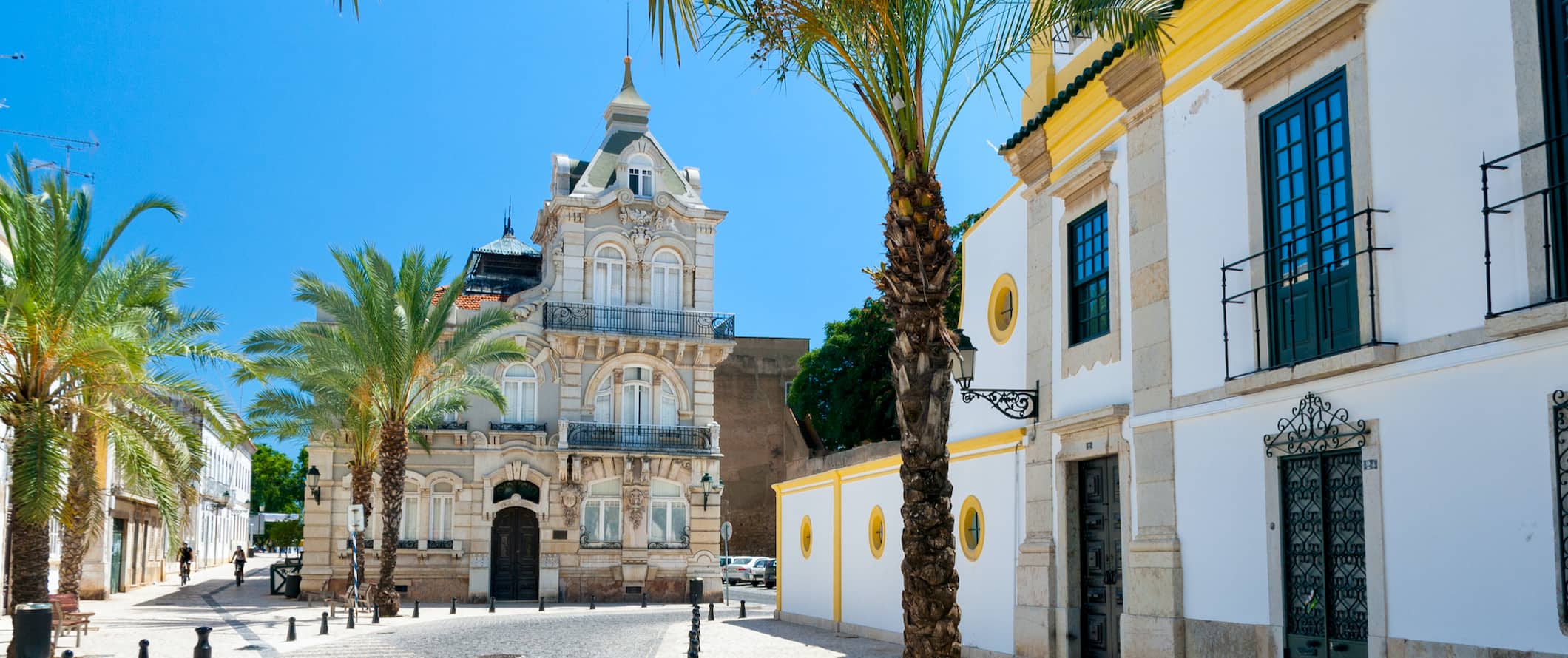
Public transportation – Larger cities like Porto and Lisbon have comprehensive public transit, including trains, trams, and buses. Tickets generally cost 1.20-1.50 EUR.
Train – Portugal has a great rail system. Tickets are affordable, with a ride from Porto to Lisbon costing around 25 EUR. Even the high-speed rail is affordable (unlike in many other European countries); it’s about the same price between Porto and Lisbon as the regular train. A train trip between Braga (in the far north) to Faro (at the southern tip) costs between 65-75 EUR.
Bus – Buses are the cheapest way to explore, and they’re also not super time-consuming since Portugal isn’t a huge country. A cross-country bus from Lisbon to Lagos costs between 15-20 EUR, while an eight-hour journey from Braga to Faro costs around 30 EUR.
Lisbon is the main hub for budget-friendly Flixbus routes around the country. It’s the cheapest way to get from Portugal and into the rest of Europe. A bus to Madrid, Spain costs around 30 EUR.
Flying – Flying is the best way to get to the Azores, though it’s likely not worth it for getting around the mainland. A flight from Lisbon to the Azores costs as little as 50 EUR, while Lisbon to Madeira starts at about 40 EUR. TAP Air is Portugal’s official airline.
Taxis – Taxis start at 3.50 EUR and go up by about .80 EUR per kilometer. Skip them if you can as they add up fast!
Ridesharing – Uber is available in Portugal’s larger cities but it’s not much cheaper than taxis. I’d still skip ridesharing altogether if you’re on a budget.
Bike rental – Locals like to get around by bike and bike rentals are available in all the major cities. You can rent a basic city bike for around 10-15 EUR per day.
Car rental – Car rentals cost as little as 25 EUR per day for a multi-day rental. It’s a super affordable way to explore if you have someone to split the cost with (especially in the Azores). Drivers need to be at least 18. For the best rental car deals, use Discover Cars
Hitchhiking – Hitchhiking in Portugal is relatively easy, though it’s not super common. You’ll have the best chances sticking close to the coast as that’s where most traffic is. Make sure to plan for the weather and bring lots of water and a hat as it can get warm. For more tips and advice, check out Hitchwiki .
When to Go to Portugal
Peak season in Portugal is during the summer months of June-August. Temperatures hover around 23°C (74°F) and popular destinations like Porto and Lisbon experience an influx of visitors. Prices increase during this time as well. But the overall atmosphere and weather are great, so it’s still worth visiting during peak season.
Personally, I think the best time to visit Portugal is the shoulder season in the spring and fall (April-May and September-October). Temperatures range from 18-22°C (65-71°F) so it’s still warm enough to explore and enjoy the outdoors. There aren’t as many crowds and prices are cheaper, making it an ideal time for budget travelers.
Winter is from November to February. It gets cold and tourist crowds thin out considerably. Temperatures vary quite a bit from place to place, but overall, the temperature averages around 12°C (53°F). I’d avoid visiting in the winter if you can, however, if you’re on the continent already Portugal is one of the warmer places to spend the winter.
Portugal Travel Guide: The Best Booking Resources
These are my favorite companies to use when I travel. They consistently have the best deals, offer world-class customer service and great value, and overall, are better than their competitors. They are the companies I use the most and are always the starting point in my search for travel deals.
- Skyscanner – Skyscanner is my favorite flight search engine. They search small websites and budget airlines that larger search sites tend to miss. They are hands down the number one place to start.
- Hostelworld – This is the best hostel accommodation site out there with the largest inventory, best search interface, and widest availability.
- Booking.com – The best all around booking site that constantly provides the cheapest and lowest rates. They have the widest selection of budget accommodation. In all my tests, they’ve always had the cheapest rates out of all the booking websites.
- HostelPass – This new card gives you up to 20% off hostels throughout Europe. It’s a great way to save money. They’re constantly adding new hostels too. I’ve always wanted something like this and glad it finallt exists.
- Get Your Guide – Get Your Guide is a huge online marketplace for tours and excursions. They have tons of tour options available in cities all around the world, including everything from cooking classes, walking tours, street art lessons, and more!
- The Man in Seat 61 – This website is the ultimate guide to train travel anywhere in the world. They have the most comprehensive information on routes, times, prices, and train conditions. If you are planning a long train journey or some epic train trip, consult this site.
- Rome2Rio – This website allows you to see how to get from point A to point B the best and cheapest way possible. It will give you all the bus, train, plane, or boat routes that can get you there as well as how much they cost.
- FlixBus – Flixbus has routes between 20 European countries with prices starting as low 5 EUR! Their buses include WiFi, electrical outlets, a free checked bag.
- SafetyWing – Safety Wing offers convenient and affordable plans tailored to digital nomads and long-term travelers. They have cheap monthly plans, great customer service, and an easy-to-use claims process that makes it perfect for those on the road.
- LifeStraw – My go-to company for reusable water bottles with built-in filters so you can ensure your drinking water is always clean and safe.
- Unbound Merino – They make lightweight, durable, easy-to-clean travel clothing.
- Top Travel Credit Cards – Points are the best way to cut down travel expenses. Here’s my favorite point earning credit cards so you can get free travel!
- BlaBlaCar – BlaBlaCar is a ridesharing website that lets you share rides with vetted local drivers by pitching in for gas. You simply request a seat, they approve, and off you go! It’s a cheaper and more interesting way to travel than by bus or train!
GO DEEPER: Nomadic Matt’s In-Depth Budget Guide to Europe!

There’s a lot of free information online but do you want to spend days searching for information? Prob not! That’s why guidebooks exist.
While I have a lot of free tips on Europe, I also wrote an entire book that goes into great detail on everything you need to plan a trip here on a budget! You’ll get suggested itineraries, budgets, even more ways to save money, my favorite restaurants, prices, practical information (i.e. phone numbers, websites, prices, safety advice, etc etc), and cultural tips.
I’ll give the insider view of Europe that I got from years of traveling and living here! The downloadable guide can be used on your Kindle, iPad, phone, or computer so you can have it with you when you go. Click here to learn more about my book on Europe!
Portugal Travel Guide: Related Articles
Want more tips for your trip? Check out all the articles I’ve written on Portugal travel and continue planning your trip:

That Time I Went to Portugal and Fell Madly in Love With It
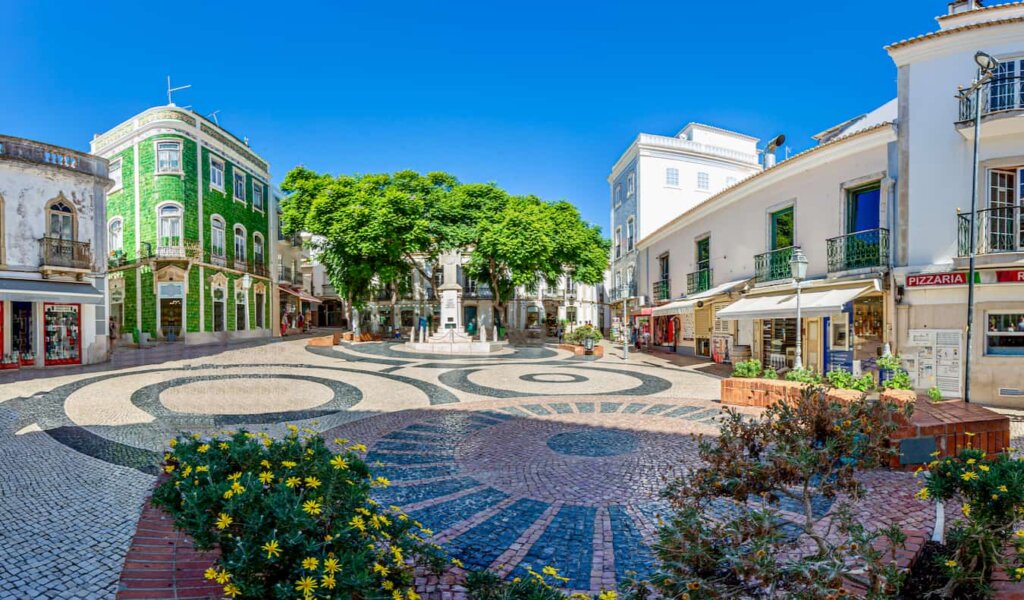
The 4 Best Hostels in Lagos, Portugal
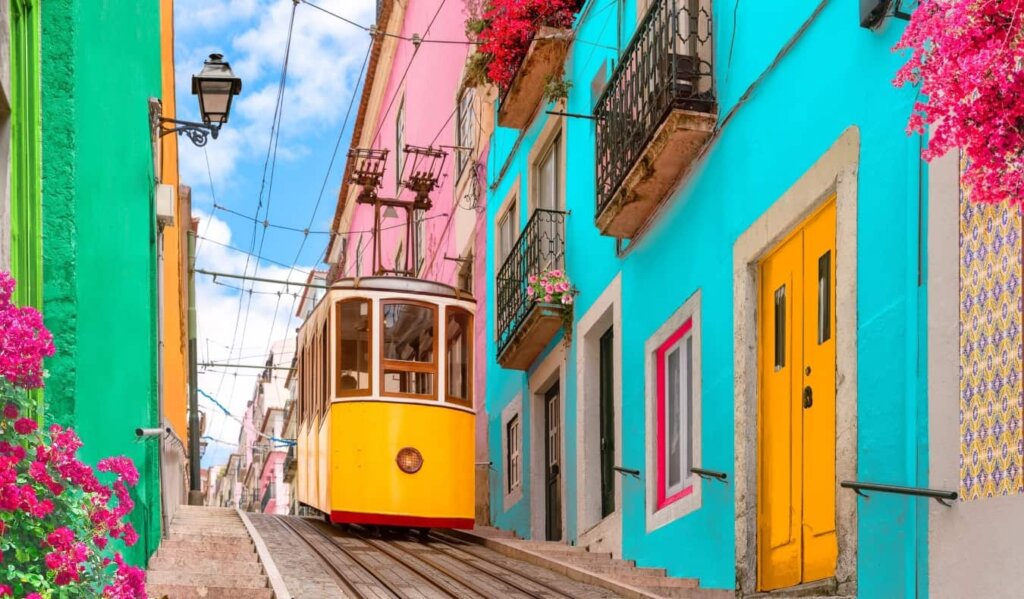
The Best Walking Tours in Lisbon
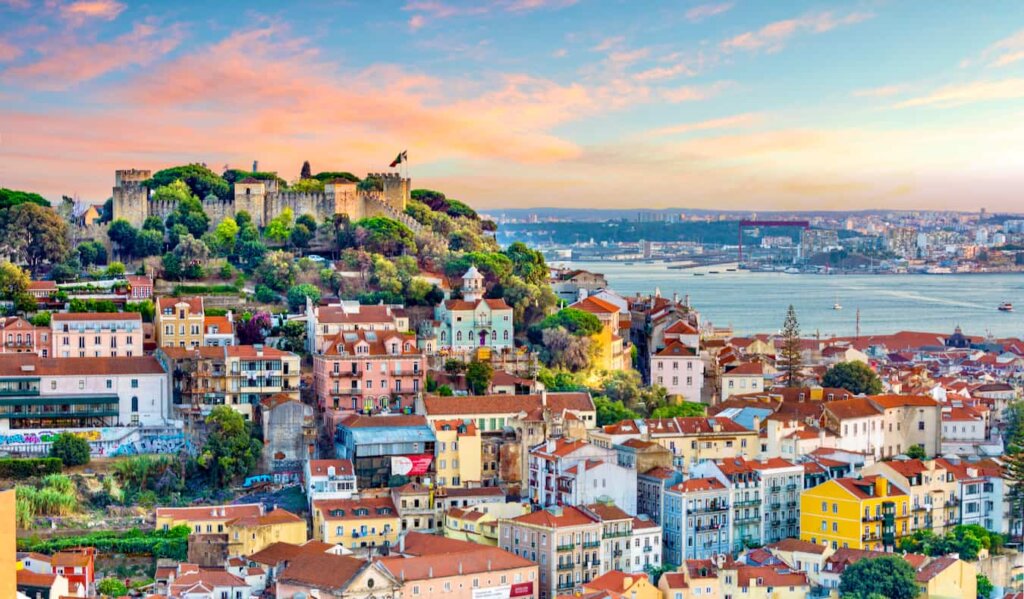
The 9 Best Hostels in Lisbon
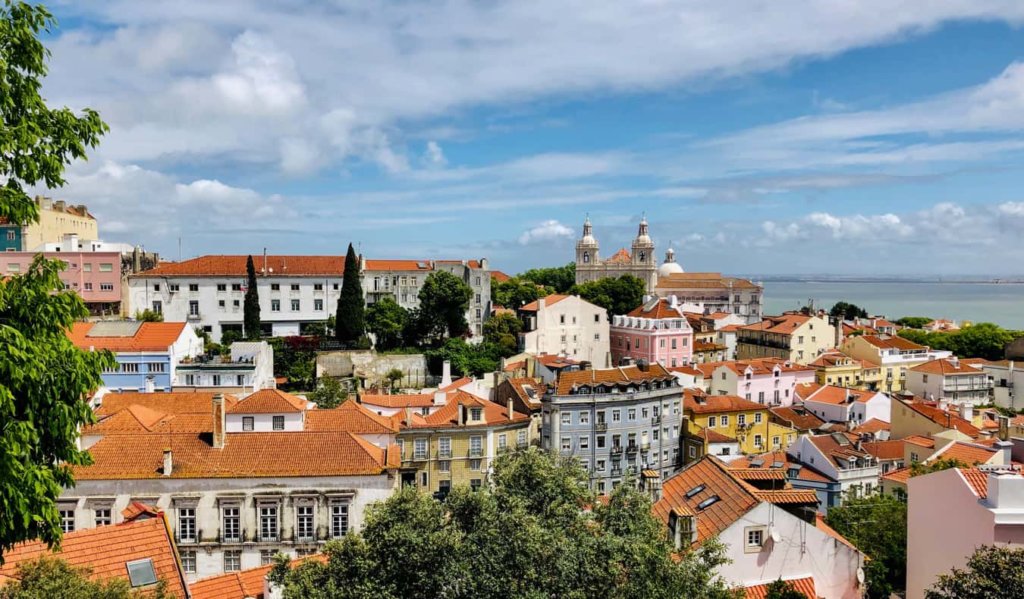
Where to Stay in Lisbon: The Best Neighborhoods for Your Visit
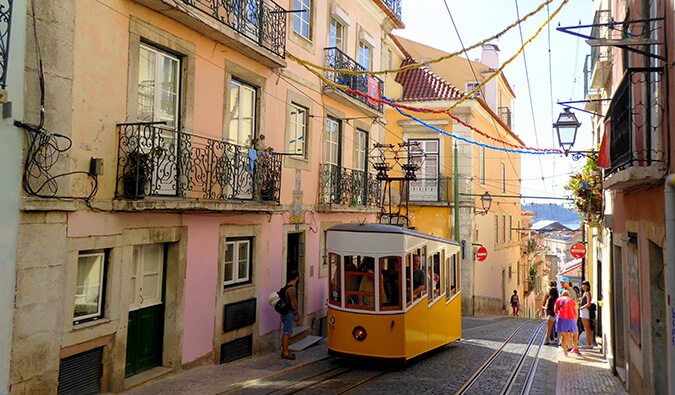
Lisbon: Even Better the Second Time
Get your free travel starter kit.
Enter your email and get planning cheatsheets including a step by step checklist, packing list, tips cheat sheet, and more so you can plan like a pro!

- Where To Stay
- Transportation
- Booking Resources
- Related Blogs
🙌 Awesome, you're subscribed!
Thanks for subscribing! Look out for your first newsletter in your inbox soon!
Get us in your inbox
Sign up to our newsletter for the latest and greatest from your city and beyond
By entering your email address you agree to our Terms of Use and Privacy Policy and consent to receive emails from Time Out about news, events, offers and partner promotions.
Awesome, you're subscribed!
The best things in life are free.
Sign up for our email to enjoy your city without spending a thing (as well as some options when you’re feeling flush).
Déjà vu! We already have this email. Try another?
Love the mag?
Our newsletter hand-delivers the best bits to your inbox. Sign up to unlock our digital magazines and also receive the latest news, events, offers and partner promotions.
- Los Angeles

Ten days in Portugal: the ultimate itinerary
Hit up stunning cities, laidback beach towns and amazing food aplenty on this ten-day tour of Portugal’s greatest spots
For a small country, Portugal punches well above its weight when it comes to food, history, unforgettable places and one-off experiences. We asked Lisbon local Lucy Bryson for her expert tips on the best way to spend ten days exploring the best of Portugal. And although a whistlestop tour of ten days isn’t nearly enough to see everything great the country has to offer, it’s just about enough to get a flavour – and leave you hankering for more.
The good news for travellers pressed for time (and budget) is that much of the country is well served by public transport. T rains and buses are largely reliable, comfortable, and affordable. The bad news is that your ten-day adventure will only give you a couple of days each in Lisbon and Porto – two of Europe’s greatest city-break destinations – and you’ll miss out entirely on harder-to-reach inland destinations, not to mention the outlying Portuguese islands of Madeira and the Azores . But what’s a time-strapped traveller to do? You’ll just have to come back again soon.
RECOMMENDED:
📍 The best things to do in Portugal 🏖 The best beaches in Portugal
Been there, done that? Think again, my friend.
The perfect ten-day Portugal itinerary
Day 1: porto.

Porto is one of Europe’s most photogenic cities, and its modern international airport is a quick metro ride away from the city centre, making it a great place to start your trip.
Get your bearings
The best way to get to know Porto is on foot. As you leave the suburbs and head towards the city centre, workaday residential streets give way to increasingly attractive public squares leading downhill to the grand galleries, pavement cafés and religious buildings of the historic centre – a UNESCO World Heritage site.
Peep into São Bento railway station to admire the beautiful, azulejo tile - covered interior, and wind your way through the crowds on Rua das Flores shopping street to reach steep cobbled paths leading down to the insanely picturesque Ribeira (riverfront).
This is the home of port, so stop for a glass and a bite to eat at one of the many colourful cafés: Escondidinho do Barredo is a good call for bolinhos de bacalhau and other traditional tapas. Then stroll by the river to reach the giant face mural by revered Portuguese street artist Vhils. It’s right next to Armazén – a colourful arts, antiques and curiosities warehouse fronted by a pavement café-bar that’s perfect for people-watching over a glass or two as the sun dips over the Douro river.
Where to stay
Music lovers would be wise to make their base at MOUCO , a strikingly modern venue combining hotel rooms (complete with record players and your choice of vinyl from the music library) with a live music venue, restaurant, and vibey bar with DJ sessions.
READ MORE: The best things to do in Porto
Day 2: Porto and Vila Nova da Gaia

Put on trainers with a good grip (you’ll be tackling a lot of steep cobbled streets) and fuel up with the bountiful hotel breakfast buffet – though coffee purists might prefer to get their caffeine kicks at highly-regarded Combi Coffee Roasters , 15 minutes’ walk away from MOUCO en route to town.
Go downtown
Once you’re back in the city centre, check out the major downtown sights of the Cathedral and Clérigos Tower. Be prepared to join a giant queue if you want to visit Livraria Lello, the bookshop which reportedly inspired JK Rowling while she was writing the first Harry Potter book. Recover from your sightseeing adventures with a coffee or something stronger at Base Porto, an open-air bar virtually at the foot of the Clérigos tower.
If it’s getting close to lunchtime, dive into Good Things Will Happen Soon . L ess than 15 minutes’ walk away, it’s a kooky-chic crafts store and café, where light meals and snacks (including veggie and gluten-free options) are served in a secret garden.
Head downhill to the river and cross the wrought iron Luis I bridge to Vila Nova da Gaia , Porto’s equally stunning sister city across the bay. Port wine cellars abound here – we recommend avoiding the riverfront crowds and heading instead to Poças, the 1918-founded family-run lodge tucked away on a backstreet.
Enjoy the views over the Douro to the colourful townhouses of the Ribeira and Porto’s stunning skyline with a sundown drink by the water, then head back to Porto for dinner and drinks at one of the trendy haunts along Rua do Cedofeita: Catraio Craft Beer and Bar is a good place to start.
READ MORE: The best things to do Vila Nova de Gaia
Day 3: Porto to Aveiro

Hop on the train to a charming lagoon city
It’s a little over an hour’s train ride from Porto to Aveiro, the self-proclaimed ‘Venice of Portugal’. Trains run roughly every half hour, and standard tickets cost less than €4 . You’ll be leaving from the functional-looking Campanhã station rather than the beautifully-tiled São Bento , but don’t worry: Aveiro’s 1860s train station has its own impressive azulejos.
Okay, so Aveiro is not quite Venice – but as you glide along in an elegant, brightly-painted moliceiro canal boat, checking out the art nouveau architecture lining the river while you drift towards the flamingo-filled salt flats on the outskirts of town, you won’t want to be anywhere else.
Art nouveau is everywhere in Aveiro, and once you’re back on dry land the best place to check it out is the riverfront Museu de Arte Nova , itself housed in a photo-worthy Belle Époque building. Afterwards, try traditional ovos moles (shell-shaped pastries with sweet fillings) at Confeitaria Peixinho before grabbing a drink at any of the cheap and cheerful bar-restaurants in downtown.
It’s a quick cab ride from the train station to the compact centre and the famous canals, where plenty of canalside Airbnbs make for an affordable place to stay.
Day 4: Aveiro to Nazaré

Ride the bus to a famous surf town
Sitting across the road from the railway station on the eastern edge of town, Aveiro’s coach station is served by comfortable long-distance coaches. It’s a ride of around one hour 40 minutes ( €8 , three direct buses daily with Rede Expresso ) to the coastal village of Nazaré, famously home to some of the biggest waves on the planet.
You’ll need to visit during ‘Big Waves season’ (October-March) to see them reach truly monstrous proportions, but surfers visiting at other times of year will find the waves more manageable. If you want to give it a go, Nazaré Surf School offers equipment rental, plus lessons for those that need them.
Explore the centre of town with its low-key, laidback bars and restaurants serving delicious fish and petiscos. Or if you’re f eeling flush, Pangeia is a more upmarket dining experience.
Nazaré is the perfect mix of surfer chic and small-town charm, and offers a wealth of cosy, unpretentious and inexpensive beachside lodgings. Try the apartments from By the Beach .
Day 5: Nazaré to Lisbon

Catch a coach to the Portuguese capital
After soaking in the small-town vibes of Nazaré, it’s time to board the Rede Expresso bus again to the Portuguese capital – a ride of roughly two hours. Coaches make the trip from Nazaré at regular intervals from 6.50am to 8pm, at €8-€12 . It’s wise to board early to make the most of all that Lisbon’s seductive capital has to offer. Coaches from Nazaré generally arrive at Lisbon’s Sete Rios station, which is a metro ride away from the main sights.
Get lost in Lisbon
Drop your bags at your lodgings and slip into your kicks-with-grips to explore the labyrinth of streets making up Alfama, Bairro Alto and Principe Real. Stop at Pica-Pau for lunch, or take a petiscos tour with Devour Tours for a quick-fire peek into under-the-radar drinking and dining spots.
After dark, visit cool hub Arrios for seemingly endless nightlife options – we recommend starting out with negronis and record-browsing at Amor Records. After midnight, Bairro Alto and Cais do Sodré ’s ‘Pink Street’ throng with bar-hopping revellers.
The city is home to any number of big-name luxury hotels, but for a more personal service, look to boutique charmers like the brand new Hotel das Amoreiras , where the friendly staff, beautifully presented breakfasts and leafy location away from the tourist trail make for a warm introduction to the city. For budget lodgings close to the action, look to Airbnb for options like this smart apartment in Alfama .
READ MORE: The best things to do in Lisbon
Day 6: Lisbon and Cascais or Sintra

Take a day trip to coast or country
Shake off a heavy head and make a beeline for coffee and some of the best pastéis de nata in Lisbon at Manteigaria . You’ll find a branch at foodie haven Time Out Market , handily located for taking the coastal train (€3.50) from Cais do Sodré out to the beach resorts of Estoril and Cascais, half an hour out of town .
In Cascais, stop for lunch at one of the lively outdoor bars and cafes on the pedestrianised ‘Yellow Street’ and grab a cab out to Guincho to catch some surf – or just admire the dramatic landscape of cliffs and crashing waves.
If the weather’s less than perfect or you prefer fairytale castles to beach towns, head for the romantic, mist-swathed mountain escape of Sintra instead. Trains take around 35 minutes and depart from Lisbon’s handsome Rossio station. Don’t miss the Disney-esque Pena Palace .
Back to the city
After sunset, get the train back to Lisbon and jump off at Alcântara to explore the hip LX Factory complex , before heading back to Cais do Sodré for a saucily-styled cocktail at Pensão Amor , or laidback DJ sets and excellent burgers at Collect .
READ MORE: The best nightlife in Lisbon
Day 7: Lisbon to Sesimbra and Arrabida

Catch a bus to Sesimbra
South of the river in Lisbon, you can catch a bus from Sete Rios station (don’t confuse it with the long-distance coach station next door) to Sesimbra . It takes around 45 minutes and costs € 4.50.
While away the day on Portugal’s best beaches
Sesimbra has idyllic sandy beaches and some of the best seafood in Portugal, making it an ideal spot for lunch. Don’t miss Pescador for cosy vibes and sea views or Tasca do Isaias for the best grilled fish in town.
The town sits in a sheltered bay at the foot of the Arrabida Natural Park , famed for its adventure sports and some of the most beautiful beaches in Portugal . The beach at Portinho da Arrabida is spectacular, but can only be reached by car – you could try booking a local taxi. Alternatively, hike down to the sandy and secluded Praia do Ribeiro do Cavalo.
Return in time for light meals and the best margaritas in town at the always-lively Black Coffee , or vegan treats with a sea view at Leaves Cafe.
Hotel do Mar offers stylish beachfront lodgings if your budget allows, while Vila Epicurea , in nearby Meco, has organic meals, yoga dome, and a pool with views to die for. And Airbnb has plenty of affordable rooms and apartments round here: this one comes with gorgeous ocean views .
Day 8: Sesimbra to Comporta and Sines

Get the bus to the sunny Alentejo region
From Sesimbra’s centrally-located bus station, it’s a 45-minute ride ( € 4.50) to the coastal city of Setubal . The city’s handsome central square is worth a peek, but as time is of the essence, you’ll want to head to the downtown ferry terminal to catch the ferry over to Troia ( €5.30). Y ou might spot the Sado Estuary’s famous dolphins as you cross the waters.
This is the entry point to the sun-baked Alentejo region, famed for its handsome historic towns and its relatively underexplored beaches. Buses are infrequent, but it’s just a ten-minute cab ride to the uber-chic Alentejo beach town of Comporta .
Everybody from Madonna to Mourinho has been spotted here, so s ee what all the fuss is about with lunch and celeb-spotting on the white sands. (Stock up on local wine and picnic goodies if you don’t fancy forking out A-lister restaurant prices.) Then jump back on the bus for the two-hour trip to the Alentejo beach town of Sines ( €15) . While it’s famed for its surf and simple seafood restaurants, it’s also a good place to try the famous local black pig at welcoming spots like O Castelo.
For affordable beachfront lodgings with gorgeous views in Sines, try Hotel Valeiro .
Day 9: Sines to Lagos

Catch a coach to the Algarve
There’s just one coach a day from Sines to the Algarve beach town of Lagos – it costs €1 4.50 and departs at 10am. That gives you plenty of time for a buffet with a beach view at the hotel, before the 10-minute walk to the Rede Expressos bus stop.
You’ll arrive in Lagos at around 12.40pm, and the bus station is only a ten-minute walk from the handsome old town. After the relatively relaxed vibes of Sines and Comporta, Lagos has a buzz to its drinking and dining scene – which shades easily into late-night partying, if that’s your bag.
After a lunch downtown (try steak or small plates with cocktails on the rooftop at the centrally-located Casa do Prego ) it’s high time for a swim and a nap on the beach. While there are arguably (even) more beautiful beaches further out of town, you’re just a few minutes’ walk from the soft sands and eye-catching rock formations of Praia da Batata . For post-beach drinking and dining, go for craft beers, rooftop cocktails and late-night DJ sets at Peppers Bar&Kitchen , which is lively without being lairy.
For an affordable base close to the town centre action, this Airbnb apartment is a good option, while the more upscale Cascade Wellness Resort will be a welcome option for travellers in need of a little R&R away from the nightlife noise.
Day 10: Lagos to Faro

Faro , the Algarve’s regional capital, is home to the region’s international airport, so this may be where you say goodbye to Portugal.
Board a train to the Algarve’s capital
There are regular trains to Faro from Lagos railway station, which take one hour 45 minutes and cost €7.50.
More than just a jumping-off point, Faro has its own charms. Take a stroll around the attractive marina before admiring the gleaming whitewashed buildings of the old town, stopping to admire the cathedral and for traditional local dishes next door at Tertulia Algarvia .
After dark, be sure to seek out the somewhat hidden Madalena : a vibrant bar and cultural centre occupying a building that began life as a medieval hermitage. Today, it’s all about artfully crafted cocktails, a leafy terrace and DJ sets and a relaxed vibe, making it the perfect spot for a last night out in Portugal.
Base yourself at a centrally located guest house such as the welcoming Casa da Valentina : the perfect spot for your last night in Portugal.
[image] [title]
Discover Time Out original video
- Press office
- Investor relations
- Work for Time Out
- Editorial guidelines
- Privacy notice
- Do not sell my information
- Cookie policy
- Accessibility statement
- Terms of use
- Modern slavery statement
- Manage cookies
- Advertising
- Time Out Market

The Ultimate 10 Days in Portugal Itinerary

Planning a trip to Portugal and don’t know where to start? I have my ultimate 10 days in Portugal itinerary that I’ve put together. After my fourth trip to Portugal, I’ve absolutely fallen in love with this country.
I’ve take the very best of all of my trips, all my travel tips for Portugal , and have put them in a single place. There is so much to do in Portugal, from the city to the countryside. I think one of the best ways to experience Portugal is to spend a few days in the city and then get out to visit the greater region.

Now, while I’ve done Lisbon three separate times, I always find myself wanting to spend a bit more time exploring. While I love the city, Portugal has a lot to discover that is under 2 hours drive from the city. That’s what I love most about this Portugal itinerary. You don’t have to travel long distances to see a wide variety of places.

So I’ve pulled together all of my Portugal trips into a single, condensed itinerary to help plan your trip. Read on to find where to stay, how to plan your time, and all the tips. This is my ultimate 10 days in Portugal itinerary.
Short on Time? Here is the Ultimate Portugal Itinerary for 10 Days:
Stop 1: lisbon and nearby day trips — 4 nights.
- Hotel Das Amoreiras or Memmo Principe Real , for the best Principal Real hotels
- The Lumiares or Lisboa Pessoa Hotel , for the best Bairro Alto hotels
- Memmo Alfama , for the best Alfama hotel
Stop 2: Evora — 2 nights
- Octant Evora , for the best overall hotel
Stop 3: Comporta — 3 nights
- Sublime Comporta , for the best overall hotel
Travel Tip: The best way to explore Portugal is by driving yourself. We use Discover Cars for our rental cars in Europe, choose full coverage insurance, and opt for trusted companies like Alamo, Hertz, or Sixt. Renting a car and driving in Portugal is quite easy. Book your car with Discover Cars here .
What to Know Before Choosing Your Itinerary

How Much Time is Really Needed to Visit Portugal?
This is the top question always asked — how much is needed? I always recommend a minimum of a single week for Portugal. 10 days is not enough but will give you the right amount of time to visit a few things slowly. Lisbon alone takes three full days to properly see, and even a few more if you do day trips.
What is the Best Way to See Portugal?
When it comes to Lisbon and closeby places, by foot or public transport. To see the greater regions of Portugal, you will need a rental car. I’ve rented cars all over Europe, and by far, Portugal has been one of the cheapest yet. So ditch the car for cities like Lisbon or Porto, and take it to the beaches and countryside.
What Do I Need to Know About Renting a Car in Portugal?
You’re likely going to get a rental car in Portugal to do some portion of this itinerary. It’s easy to drive around, and recommended for ease. When deciding on a rental car:
- Do use Discover Cars to Book — They have the best rates and options for rentals, you can add full insurance at a reasonable rate, and more. This is my trusted site for booking.
- There are Toll Roads —Super simple solution: ask the rental car company to turn on the electronic transponder. You’ll get billed at the end and you don’t have to worry about having euros on you.
- Extra Drivers Cost More — If two of you drive, you’ll need to pay an additional driver fee by day. For Sixt, it was 10 euros daily.
- There is an Airport Surcharge — Each company has a different fee, but you’ll likely spend an additional 25 euros to pick up at the airport, which is no biggie since there is a major convenience in doing so.
What’s the Best Airport to Fly Into for Portugal?
If you’re coming international from the US, I always recommend Lisbon. You’re going to want to see the city anyways, and the flight options are the best. It also puts you at a great starting point for this itinerary.
How I Structured this 10 day Portugal itinerary
When I started honing on the best places and regions of Portugal to recommend, I had one thing in mind: slow, intentional travel. I wanted the logistics of the itinerary to make sense, cut down on travel time, and be practical.
This entire trip is essentially a loop beginning in Lisbon, and I’ve included a few extension ideas for places to visit. I’ve chosen destinations in Portugal that I feel aren’t always top of mind. They are incredible, beautiful, and often fewer in crowds (well, except Lisbon, but that’s a must see!).
The 10 Day Portugal Itinerary — Lisbon to Alentejo to Comporta
Stop 1: lisbon & nearby day trips.

Recommended Time: 4 nights
Getting into lisbon from the airport.
When it comes to getting into the city from Lisbon Airport, I always recommend either taking an Uber or pre-booking a transfer. I typically do an affordable pre-booked transfer for ease , and the drive time is around 20-30 minutes pending the time of day.
Where to Stay in Lisbon
I have a few favorite hotels in Lisbon, and neighborhoods. In Principe Real, I love Hotel Das Amoreiras or Memmo Principe Real . My go-to’s in Bairro Alto are The Lumiares or Lisboa Pessoa Hotel . In the Alfama, I love the Memmo Alfama for its location in the heart of the neighborhood.
For my full list of recommendations, read my guide on the best boutique hotels in Lisbon !
My Favorite Things to Do in Lisbon

- Soak in Views from the Miradouros — The city is full of them, and it’s one of the best way to get oriented. My personal favorite is Miradouro de São Pedro de Alcântara .
- Shop Local — The shopping is some of the best in Lisbon. I love shops like EmbaiXada , Claus Porto , Bernardo Atelier Lisboa , and A Vida Portuguesa .
- Stroll the Neighborhoods — Enjoy a quiet walk through the Alfama or even Bairro Alto, both have stunning views of the city. Stop into A Brasileira for the oldest coffee shop in town and cross the street to Livraria Bertrand – Chiado
- Take a Food Tour — These are such a great way to eat your way through Lisbon. I’d recommend this small group tour , this one with the reputable Eating Europe group , or this 17 tastings one.
- Visit the Belem Tower — It’s well worth pre-booking tickets and spending a chunk of time strolling around and taking in the views, and it’s right near Jeronimos Monastery . This walking tour is also a great way to experience both the Tower and the Monastery.
- Tour Jeronimos Monastery — Pre-book tickets to Jeronimos Monastery, the lines are usually for the chapel, which is beautiful but can also be viewed from above with a ticket to the conclaves (can’t be missed). I found myself loving an hour or two to stroll around.
- See MAAT Museum — One of my favorite museums in Lisbon to visit along the waterfront. Pre-book tickets here .
- Spend an Afternoon at LX Factory — They converted a ton of industrial factories into shops and restaurants, and there’s quite a few things to enjoy here. Find a rooftop bar, restaurants, and a wonderful book store too.
- Tour Ajuda National Palace — If you’re looking for grandeur and decorative art, come into the 19th-century palace where the royal residence once lived. Pre-book tickets here .
The Best Restaurants in Lisbon

- Time Out Market Lisboa — this food hall has everything you could want. If you want a good, no-res meal, come here.
- Magnolia — The it-girl right now of Lisbon, come in for any meal. The space is warm and inviting, and the food is it. *Reservation required
- Pica-Pau — This is where I’d go for traditional Portuguese food done highly well. Good spot to try bacalhau. *Reservation required
- Belcanto — Chef Jose Avillez runs the food scene in town and if you’re looking for fine dining, this is the one I’d book. *Reservation required
- Bairro Do Avillez — Several restaurants in one, this is where Chef Jose Avillez has several options for dining. I always love Minibar but wasn’t impressed last trip so I’d stick with Taberna in the front. *Reservation required
- Prado — for best farm to table cooking, this is where I’d come in for do big share plates with friends. *Reservation required
- A Cevicheria — One of the best ceviches in town, I go here every trip. *Reservation required
- Pasteis de Belem — If you want to skip the line, just past by the left and ask for a seat (much shorter than take away).
The Best Coffee Shops in Lisbon
- Hello, Kristof
- Copenhagen Coffee Lab & Bakery
Where to Take a Day Trip From Lisbon

There are so many wonderful day trips I have done over the years and I’ll share a few to consider for your trip. Any of these can typically be done by public transport, but a group tour may be good option too.
- Sintra — The most obvious day trip that one must do is Sintra. It’s home to magical castles and ancient times. Tour places like Castelo dos Mouros, Palacio Nacional da pena, Palacio Nacional de Sintra , and more (you need tickets in advance for all). And of course there is the traditional pastry house of Casa Piriquita which is well worth a visit. You can train there from Lisbon in 40 minutes on the Sintra Line or self-drive in 30 minutes. Some tours to consider are: a full day private tour , half day tour in classic car , or this complete tour full day tour.
- Cascais — Just south of Lisbon is my favorite seaside town of Cascais. Reach it in under 40 minutes by train and have the whole day at the beach and in town. I personally always do this one as I love the change of scenery.
- Ericeira — This is where to go for those who want to go surfing. You can reach it by direct bus in 40 minutes or by car. There is a lot in the small town from boutiques to shops, and the entire beach area.
Sample Itinerary for Lisbon ( My 4-Night Lisbon Itinerary here )
- Day 1 — Get settled in town. Walk your neighborhood. Get a coffee. Dinner at Timeout Market for ease.
- Day 2 — Explore Alfama and the city center. Get a coffee at A Brasilieira and ride a cable car. Have lunch at A Cevicheria. See the miradouros, shop local. Eat dinner at one of Chez Jose Avillez’ restaurants.
- Day 3 — Spend the morning to early afternoon out in Sintra or Cascais. Late afternoon at LX Factory and eat dinner at one of the restaurants there.
- Day 4 — Belem Tower in the morning, stop by Pasteis de Belem for breakfast. Tour the Jeronimos Monastery and then walk along the waterfront to the MAAT. Lunch at Magnolia. Cruise around Bairro Alto and the neighborhood. Dinner at Prado.
Stop 2: Evora

Recommended Time: 2 nights
Getting to evora from lisbon.
The best way to get to Evora from Lisbon to continue this itinerary is by rental car. I would transfer back to the airport and get your rental car there (or book in town with a drop-off at the airport at the end). I recommend booking with Discover Cars for the best rates and options for rentals. You can also add full insurance at a reasonable rate, and more.
Where to Stay in Evora

You have a few choices for accommodations in Evora, but I think the best it to be out in the countryside. I stayed at Octant Evora and enjoyed the natural setting. Some other hotels to consider as well are Imani Country House , Convento do Espinheiro , or L’AND Vineyards .
My Favorite Things to Do in Evora

- See the Historical Sights — You can spend all day walking on foot going from one historic sights to the next. Stop into the Roman Temple of Évora , see the Chapel of the Bones , and definitely go into the Cathedral of Evora (climb the stairs to the rooftop!)
- Do Some Local Shopping — There are several local boutiques in town like Oxalá , O Cesto Artesanato , and Livraria Fonte de Letras . Get things like olive oil, cork products, and more.
- Go Wine Tasting in The Valley — With several wineries within reach, I’d spend an afternoon at one of them like Fitapreta Vinhos or even L’AND Vineyards .
For more Evora recommendations, don’t miss my full guide to Evora, Portugal !
Where to Eat in Evora

- Botequim da Mouraria — One of the best meals of my last trip, line up early for open to get a seat at this 8-person bar. All dishes made by the owner and chef, this is where to come for the classics.
- Fialho — The spot to come for all the classics like roasted lamb and local cheeses. *Reservation required
- Dom Joaquim — Great local spot for elevated dining, it’s one of the most popular restaurants in town. *Reservation required
- Cavalariça Évora — Though there is one in Comporta, the Cavalariça Group opened doors in Evora. I’d pop in for a leisurely lunch here. *Reservation required
Things to Do Nearby Evora

- Visit the Village of Monsaraz — I would spend a full day exploring the valley, going all the way out to Monsaraz. The small hilltop village is so stunning, and well worth a couple of hours.
- Shop Ceramics in Corval — Known as one of the best ceramic towns in Portugal, I’d come here to shop at the “olarias” in the town. I loved Olaria Tavares .
- Stop at São Lourenço do Barrocal for Lunch — Out in the valley is the prestigious hotel , and well worth stopping for lunch at their tavern restaurant . Idyllic views, this was one of my favorite things I did.
- Visit the Village of Montemor-o-Novo — On your way from Lisbon, I’d pop into the historic town to stroll the streets and tour its ancient castle at the top.
Sample Itinerary for Evora
- Day 5 — Drive Lisbon to Evora, stop in Montemor-o-Novo along the way. Spend the whole day in Evora, see all the sights, eat lunch at Botequim da Mouraria or Cavalariça. Check into hotel, relax. Dinner at Dom Joaquim.
- Day 6 — Depart to tour the valley. Stop in Corval to shop pottery. Go to Monsaraz to tour village. Eat lunch at São Lourenço do Barrocal. Head out to the wineries like Fitapreta. Come back to Evora for a dinner at one of the local restaurants.
Stop 3: Comporta

Recommended Time: 3 nights
Getting to comporta from evora.
On your morning out of Evora, leave mid-morning to make the 1.5-2 hour drive out to the coast. It’s a leisurely drive, make sure your car is full on gas. The roads are easy to navigate, windy at times, but straightforward.
Where to Stay in Comporta

There is no more prestigious property than Sublime Comporta . It’s luxurious, super well done, has all of the amenities. So if you’re looking to splurge, I would book in there. I’d consider other properties like Spatia Comporta , Quinta da Comporta , and AlmaLusa Comporta .
My Favorite Things to Do in Comporta

- Spend time at the beach . There’s not a more better way than to just be at the beach in Comporta. The main ones are Praia da Comporta , Praia do Pego , Praia da Torre , and Praia do Carvalhal .
- Relax poolside. Book in a few hours to just stay at your property and enjoy.
- Shop town. Comporta town has a few small local shops for home and lifestyle goods. Stop into Rice – Marta Mantero , Lavanda , and Mercearia Gomes .
- Drive down to the village of Melides. This up-and-coming town has a lot to offer. From its main beach to the iconic Hotel Vermelho which was opened by Christian Louboutin, you could spend a half day here. I’d shop at Vida Dura , eat lunch at the hotel, and stroll the town.
- Go Horseback Riding. With Cavalos na Areia , you embark on a 1.5 hour horseback tour down to the beach with a guide.
For more Comporta recommendations, don’t miss my full guide to Comporta !
Where to Eat in Comporta

- Sublime Comporta Beach Club — This was my favorite spot for a beachside meal. Order the paella and enjoy the sunset views. *Reservation required
- Cavalariça — One of the best meals in town. I really loved how paired down yet elegant this meal was.
- ALMO Café — Stop in here for lunch at least one day, the outdoor patio is lovely. *Reservation required
- Sal — Another classic, I’ve been here several years ago and it was just as packed as last time. *Reservation required
Sample Itinerary for Comporta
- Day 7 — Drive from Evora to Comporta in the mid-morning. Stop in town for lunch at ALMO Café. Head to hotel and check in to enjoy for the night. Sunset dinner at Sal or Sublime Beach Club.
- Day 8 — Slow morning at the hotel. Stop into Mercearia Gomes to pick up things for a picnic. Spend day at the beach. Dinner at Cavalariça.
- Day 9 — Head down to Melides. Spend morning at beach. Lunch in town at the Hotel Vermelho, shop at Pura Vida. Afternoon at pool or horseback riding. Dinner at at Sal or Sublime Beach Club.
- Day 10 — Check out and head back to Lisbon for flight home — or continue on to another destination.

If You Have More Time
For more beaches & small towns.
If you have more time to spend in Portugal and want to make it a 2 week itinerary, you easily could. From Comporta, I would continue on to the Algarves. It’s the most obvious choice for ease and you can drive down the coast in a few hours. Towns like Faro, Albufeira, Lagos, and Sagres are popular. You will need car.
For Small City & Wine Region
If you wanted to head north for a small city and wineries, I would return you car to Lisbon Airport or Lisbon Train station and go to Porto. Porto is another lovely region to visit. From there a few nights in Porto is lovely with a visit to the Douro Valley. You can get there by direct train from Lisbon so you could skip the car.
Save This Post for Later on Pinterest

PS — Are You Booking a Trip Soon? Use My Booking Checklist!
These are the sites I use most to book my own trips. Using the links below is a great way to support Bon Traveler’s travel journalism at no extra cost to you . If you need help organizing your itinerary, get my free travel itinerary template here .
1. Book Your Flights
I use Skyscanner to find the best flights. It searches 100s of airlines and websites across the globe to ensure you’re not missing out on any route options or deals.
2. Book Your Accommodations
I use Booking.com for hotels and guest houses. They have the biggest inventory and consistently offer the best rates.
3. Book Your Tours & Experiences
I use Viator or Get Your Guide to find the best tours and experiences. They are my favorite tour search engines. I always check both as their inventory varies depending on the destination.
4. Book Your Rental Car
Self-driving is the best way to explore most destinations. I use Discover Cars for our rental cars, select full coverage insurance, and opt for a reputable company like Alamo, Hertz, or Sixt.
5. Don’t Forget Airport Lounge Access
I use Priority Pass to gain access to 1,400+ VIP lounges and airport experiences worldwide. The Priority Pass app is the first thing I check when I have a layover. I’ve been a member for over a decade, and having a comfortable place to relax before and between flights makes air travel so much more enjoyable.
6. Don’t Forget Travel Insurance
I never leave the country without travel insurance. It provides comprehensive protection in case anything goes wrong (ie. illness, injury, theft, and cancelations, etc.). I use it frequently for my travels to stay protected.
My favorite companies that offer the best coverage and rates are:
- World Nomads (best for all-around)
- Safety Wing (best for frequent travelers)
Xx, Jessica
Related Posts

A Road Trip Guide to California’s Wild North Coast

The Ultimate 7-Day French Riviera Itinerary

The Ultimate London 3-Day Itinerary
Write a comment cancel reply.
Save my name, email, and website in this browser for the next time I comment.
- Cayman Islands
- Dominican Republic
- Puerto Rico
- South Dakota
- Washington DC
- Czech Republic
- Netherlands
- Switzerland
- French Polynesia
- Travel Tips
- Family Travel
- Accommodations
- Packing Lists
- Photography Tips
- Northern California Guide
- San Francisco
- Lightroom Presets
- Rent Our Home For Photoshoots
- California Map
Type above and press Enter to search. Press Esc to cancel.
- How To Travel And Get...
How to Travel and Get Around in Portugal

Portugal is a small country that’s easy to travel through; even a road trip from the north near Spain to the southern Algarve region can be done in one day. There are also many public transportation routes that travel daily to each region, so renting a car isn’t always necessary.
Visit Portugal stress-free by joining Culture Trip’s specially curated nine-day Portugal adventure , which includes Lisbon, Porto, the Douro Valley and much more – led by our local insider.
Travelling by plane
There are three main airports in Portugal: the Porto airport in the north, the Lisbon Portela airport for travel to the centre region, and the Faro airport in the Algarve. The Lisbon airport is the primary entrance when coming from another country, but sometimes deals can be found for flights landing in Porto.
The national airline, TAP Air Portugal, often offers great prices when travelling internally, in addition to low prices and a variety of flight packages when you’re going abraod. Among their offers is the Stopover Programme, which lets passengers flying to Europe from the USA , Canada and Brazil add a free stop in Portugal on the way, for up to five days. Ryanair and EasyJet are two other low-cost options that also fly to (and through) Portugal.
Even when flying to the Azores and Madeira Island, there’s usually a deal you can find, and the Lisbon airport is the easiest departure point. Flights travel directly from Lisbon to Ponta Delgada (São Miguel), Lajes (Terceira), Horta (Faial) and Santa Cruz (Madeira). Depending on which island you’re heading to, a flight can last from 1.5 to 2.5 hours.
Travelling by train

Mainland Portugal has a great train system that travels daily to multiple parts of the country and within city limits. In Lisbon, the main stations include (but are not limited to) Oriente, Santa Apolonia, and Cais do Sodré; these are the stations that take you away from the capital. Anyone wanting to go to Sintra should hop on a train from the beautiful Rossio station , located at the Restauradores metro stop.
Train times can be purchased online. It’s also fine to wait and buy your ticket at the station before leaving. In some cases, for instance, when leaving from rural towns, tickets are purchased on the train. Ticket prices in Portugal are fairly average for southern Europe, and crossing the country usually costs between €20 and €30 (prices increase for high-speed trains). When travelling within a city, a one-way ticket costs less than €2.

Become a Culture Tripper!
Sign up to our newsletter to save up to $1,058 on our unique trips..
See privacy policy .
Travelling by bus
Exploring by bus is the least expensive option and doesn’t take much longer than the train (sometimes, the bus can actually be quicker). It’s also an easy way to reach rural centres and small villages.
The main website for finding bus routes is Rede-Expressos. The bus stations usually have an office where tickets can be purchased, but there are situations when tickets are purchased from the driver, too. The best thing to do is ask someone where the ticket office is when reaching the station (called a bilhetaria). Although it’s not necessary to speak Portuguese fluently to travel solo, it’s good to have a basic understanding and to know a few key phrases .
Travel by tram

This is only an option when in Lisbon or Porto, but it’s certainly an unforgettable way to explore (and avoid hiking the hills).
Travelling by car

Of course, renting a car is always a possibility (unless you live in Portugal and already own one). This can actually be the most expensive option when moving from one region to another, especially when tolls are taken into consideration (make sure to have your coins handy), but it’s also a great way to see as much as possible.
Each city has their own taxi companies with pick-ups near central locations like bus and train stops. Also, applications like Cabify make calling a car easier, cheaper (normally costing less than a taxi) and more convenient.

The Best Live Music Experience You Can Have With Culture Trip

10 Most Stunning Beaches in Portugal

The 10 Coolest Neighbourhoods in Lisbon

The Most Beautiful Wine Regions You Can Visit With Culture Trip

The 12 Best Things to Do with Family in Portugal

The 26 Most Stunning Coastal Towns in Portugal

Why Portugal is the Perfect Place for Golfers of All Levels

Best Places to See in Portugal

The Top Things to See and Do in Serra da Estrela, Portugal

The 17 Most Beautiful Towns in Portugal

The 10 Most Beautiful Castles in Portugal

The 11 Most Underrated Places to Visit in Portugal
Culture Trip Fall Sale
Save up to $1,058 on our unique small-group trips! Limited spots.

- Post ID: 1520843
- Sponsored? No
- View Payload
- Best Time to Visit
- Weather & Climate
- One-Week Itinerary
- Driving Tips
- Places to Visit
- Islands to Visit
- Douro Valley
- Peneda-Geres National Park
- Best Things to Do
- Foods to Try
- Most Beautiful Beaches
- Top Road Trips
- Things to Do with Kids
- Search Please fill out this field.
- Newsletters
- Destinations
One Week in Portugal: The Perfect Itinerary
:max_bytes(150000):strip_icc():format(webp)/Marlaonbeachwaikiki-560d420707834c9dabfd17c07edb68d3.jpg)
Portugal is a delightful country, featuring exquisite beauty and fun surprises at every turn. Despite its relatively compact size (especially compared to its next-door neighbor, Spain), Portugal is home to an abundance of intriguing ancient sites, historical landmarks, heavenly beaches , picturesque mountains, stunning wine country, and more. It’s tempting to remain in one region, as there is plenty to see and do in each destination, but the country is exceptionally tourist-friendly to those who wish to explore several areas.
Overall, when visiting, it’s most convenient to rent a car . The good news for drivers is that the highways in Portugal are well-paved and easy to navigate. Best of all, traffic jams are rare, unless you find yourself in the center of a busy area at rush hour.
If you have a week in Portugal, this itinerary will guide you from Southern points around Lisbon up to Porto in the North. Tip: Most of these destinations are day trips from the major cities, so you can avoid switching hotels daily.
Day One: Lisbon
Portugal’s capital, Lisbon, is the country’s largest city with an array of beautiful architecture and scenic vantage points situated around the town’s distinctive neighborhoods. Surrounded by seven hills, the downtown area of Lisbon is an ideal area to explore on foot, as most streets are lined with restaurants, retail stores, and outdoor cafes. Begin your Lisbon exploration by strolling around (or take a famous city tram car) from the central plaza, Praça do Comércio uphill to the majestic São Jorge Castle in the quaint Alfama neighborhood, which is a worthwhile tourist attraction and offers exceptional city views from its grounds.
There’s also plenty of shopping around this area, and you can purchase a variety of locally-made items, including sardines and other fish in colorful tins, cork products, Portuguese tiles, and of course, locally-produced wines. You don’t need to venture far to see some of the most impressive attractions. There are several museums nearby the city center, including the National Azulejos Museum , featuring exquisite and unique examples of classic Portuguese tiles and the expansive Calouste Gulbenkian art museum with thousands of paintings, sculptures, and artifacts.
After working up an appetite soaking in the sights, you’ll want to enjoy some local cuisine. In recent years, Lisbon has become quite the foodie town, and there are many great places to experience traditional as well as modern fare. Award-winning chef José Avillez heads up the Michelin-starred Belcanto , but he also owns several other casual restaurants in town, each featuring diverse and clever concepts—so any of these are excellent choices for a memorable meal.
Although Lisbon is an extremely walkable city, if you’re planning to explore on foot, be sure to wear sneakers or your flattest, most comfortable shoes, as the beautifully designed mosaic sidewalks here are often very steep and slippery.
Day Two: Setubal
Situated only about twenty minutes outside of Lisbon, the industrial port city of Setubal is a quick day trip from the city that features a historic fishing village. It’s a noticeable slower pace than busy Lisbon, and it’s fun to meander around the charming pedestrian shopping area that winds around the old town and the harbor.
When visiting, you’ll feel like a local as you peruse the area’s iconic fish and produce market, Mercado do Livramento, which is considered the best in the country. It's legendary for its architecture as well as its fresh offerings (although it usually closes by 1 p.m.). While in the area, be sure to stop and admire the Convento de Jesus and the Museu de Setúbal, a church featuring Portuguese gothic architecture.
Most impressive, Setubal is situated on the Sadu Estuary, an unassuming locale that’s known for its wild dolphins that reside in the surrounding waters. If you’re a nature lover, you’ll adore this fascinating pod of dolphins has been protected and studied for years, and most importantly, respected by the locals. In the afternoon, take a boat ride to (possibly) see the dolphins . You’ll notice that the tours follow strict rules and regulations, such as keeping a distance from the dolphins and not allowing too many visits per day. It’s an exciting experience, as the guides are familiar with this family of dolphins and share knowledge of their habitat, health, and history.
If you have time, check out a local beach, or have a meal at one of the many restaurants along the harbor, as these local spots serve up fresh seafood dishes daily.
Day Three: Cascais
Start your day by heading to the beach! This popular resort area is located about 30 minutes west of Lisbon and well-known for its gorgeous coastline and golden sand beaches. On summer weekends, it’s best to arrive early, but it’s a quick trip by car. (If you prefer not to drive, it’s also a comfortable train ride or ferry from the center of Lisbon). Once you arrive, pick up a free (yes, free!) bicycle near the center of town to explore the area—look for the signs that point to “Bicas.” It’s fun to pedal along the coastal pathway and admire the panoramic views along the ocean (and yes, you can rent a lock, too).
At Cascais, as there are many great spots for sunbathing, surfing, or just hanging out by the shore. Three beaches are protected and just steps from the city center (Praia da Conceição, Praia da Duquesa, and Praia da Poça), and all of these are ideal for swimming. In the heart of Cascais, visitors will find the main “boardwalk” with many shops, restaurants, and taverns. The area features narrow, winding pedestrian walkways, so if you prefer to stay out of the sun, you can spend hours meandering through the town.
But Cascais offers more than beaches. After a morning playing in the waves, visitors can explore the Museum Quarter that’s home to an exceptional destination, the Castro Guimarães art museum , which is situated on a sprawling estate encircled by fountains and colorful gardens. Also, the Casa de Santa Maria is not to be missed. This coastal villa is adjacent to a lighthouse and was constructed in the early 1900s as a summer home for royalty, and showcases classic painted Portuguese tiles.
Day Four: Evora
Less than a two-hour drive from Lisbon and Cascais is the capital of Portugal’s expansive Alentejo region, Evora, a charming medieval city that’s home to many historical monuments, churches, and ancient artifacts. Located in the South-central part of the country, Evora is a walled city and a UNESCO World Heritage site, so there are plenty of intriguing tourist attractions to tour while you’re here.
Start by taking in a few of the most enthralling sights in town, which are located within steps of each other, including the surprisingly intact Roman Temple of Diana. Across the street is the Se Cathedral with its asymmetrical towers and nearby is the gothic style church of St. Francis and its macabre yet fascinating “bone chapel” that’s creative from thousands of human skeletons.
Afterward, enjoy a lighter activity, such as shopping. Although you might be tempted to try and see all the sights, be sure to take a break and browse some of the stores (keep in mind that most close in the early evening). The Alentejo region is known for its cork trees and cork products, so be sure to head to the quaint shops that offer these authentic handicrafts—and you can purchase everything from clothing, handbags, jewelry, and much more at reasonable prices. This region is also famous for its wines, so be sure to sip a varietal or two while enjoying dinner at one of the town’s cozy cafes.
Day Five: Fatima
Fatima, a centrally-located city in Portugal, is about a two-hour drive from Evora. Nearly everyone who visits this destination is here to see the Sanctuary of Fatima, a famous pilgrimage site that honors the place where the Blessed Mother allegedly appeared to three young shepherd children in the early 1800s. This controversial sighting (often called “Miracle of the Sun”) attracts religious visitors as well as tourists of all ages from around the globe.
You can spend an hour or the better part of the day here, as there several churches to visit, a fountain where you can obtain holy water to bring home, and the famous oak tree where there the apparition was first seen. The impressive neoclassical basilica is the central point of this massive complex, and it towers 200 feet above the town. For the casual visitor, Fatima is a fascinating spot to stroll around, even if you’re just interested in learning about the historical elements.
If you want to tour or attend mass, it’s best to plan in advance and be aware of the timing. Note: Keep in mind that Fatima was created to welcome big crowds. On particular festival anniversaries, Fatima gets mobbed by pilgrims—some who arrive on busses and others who walk from miles away—so plan your visit accordingly. It’s most popular on the 12th and 13th days of the month from May until October.
Day Six: Coimbra
On your way up to the northern part of the country, be sure to stop in Coimbra for the afternoon. Located about 90 minutes south of Porto, Coimbra is less than an hour from Fatima and a charming town. A highlight is a visit to the University of Coimbra, the oldest in Portugal. A World Heritage and site, it is perched atop a hill in the middle of the city and encompasses many historical buildings and churches, as well as a massive botanic garden with a forest and bamboo plantation. If you visit during the school year, you’ll find the area to be extremely busy – and students just about everywhere in town.
Harry Potter fans are fascinated by this ancient picturesque town because British author J.K. Rowling spent time here teaching English and was inspired by her surroundings. The Hogwarts school uniform is a version of the university students’ official outfits here—especially the formal black capes worn atop the clothing that gives them a slightly mystical look. And while you’re touring the university, be sure to check out their exquisite library, Bibliotheca Joanina, which resembles the famous library where Harry Potter and friends spend time at Hogwarts. Featuring thousands of books stacked high on polished wood bookshelves, this jaw-dropping structure is worth a visit, whether you’re a bookworm or not.
For sure, Coimbra is a great destination to enjoy even if you’re not an avid Potter enthusiast, as it’s steeped in history and visitors can enjoy plenty of sites, architecture, stunning views, shopping—as well as great cafes and restaurants as well.
Day Seven: Porto
TripSavvy / Christopher Larson
If you thought Lisbon was hilly, wait until you stroll around the steep, undulating streets of Porto, the second-largest city in Portugal. With its dramatic scenery and jaw-dropping riverfront views, along with many narrow, winding streets, Porto is a dreamy destination that encourages visitors to explore.
Start your morning by enjoying breakfast, as you’ll need the energy to hike around the city. Begin by walking over the Dom Luis bridge, an architectural landmark that spans the Duoro River. From this ideal vantage point, you’ll have an exceptional view of the city and get an immediate lay of the land. A few not-to-miss attractions include the Clerigos bell tower that overlooks the city (and yes, you can climb the steps to the top); the Crystal Palace gardens, a sprawling and peaceful oasis, and the spellbinding Church of Saint Francis, also referred to as the “golden” church. It features gothic architecture, and its interior ornate wood carvings are covered in brilliant gold.
If you prefer to stay outside, the beauty of Porto is that it’s home to many small parks and places to rest, so you can enjoy the sights by just meandering around and discovering its understated charms without going to the top tourist spots.
Of course, this is the area where Port wine is made, and you will see it everywhere. If you’re a wine lover, in the afternoon head over to the Vila Nova de Gaia area, grab a bite to eat and enjoy a tasting or two at the Port Houses along the river, such as Calem and Kopke, as they all offer tours and tastings. Most are open to the public, and you can sip and savor for hours, but if you have your heart set on particular Port wine, be sure to make a reservation in advance.
And you’re up for more Harry Potter experiences…Porto has plenty of them. One of the most noteworthy is Livraria Lello, the legendary gorgeous bookstore that is known to have influenced Rowling. Swing by in the afternoon, but if you visit, be sure to pack your patience. During high season, the line of enthusiastic fans stretches for blocks (be sure to purchase your ticket first before cueing up!), and visitors only get a few quick, crowded minutes inside.
For dinner with a view, choose an outdoor table at one of the many restaurants lining the Douro River, against the backdrop of the iconic Dom Luis bridge, which is especially stunning at night. It’s a festive area with plenty of pedestrian traffic—and the cafes serve up an array of local specialties—along with a generous pour of Port wine, of course!
Related Articles
More related articles.
The 11 best places to visit in Portugal

Nov 17, 2023 • 7 min read

From the viewpoints of Lisbon to the beaches of the Algarve, here are the best places to go in Portugal © Gabriel Mello / Getty Images
Lisbon and Porto may get a lot of love, but there's so much more to Portugal than its captivating historic cities.
From golden beaches and mountainous peaks to lush river valleys, every region has its own diverse highlights across this small Iberian nation.
Finding the best places to go here depends largely on your own interests. If you’re after sun-kissed beaches and aquatic adventures, head to the Algarve ; for historic architecture-filled towns with a rich, traditional dining scene , aim for Évora. Start planning your itinerary now with our 11 favorite places to visit in Portugal.
Best for nightlife
Seven iconic hills overlook Lisbon 's postcard-perfect panorama of cobbled alleyways, white-domed cathedrals and grand civic squares – a captivating scene crafted over centuries.
The Portuguese capital is packed with things to do , from browsing galleries (including the Museu Nacional do Azulejo with its trove of ceramic tiles) and exploring castles (such as the hilltop Castelo de São Jorge ) to satisfying your sweet tooth with the city's incredible pastéis de nata (custard tarts).
By night, Lisbon’s party people take over, filling old-school drinking dens, brassy jazz clubs and open-all-night clubs that burst into life once the sun goes down.
Planning tip: Lisbon has an emerging craft beer scene that you can experience at the city's breweries and bars .
Read more: Where locals go on vacation in Portugal
2. douro valley .
Best place to drink wine
One of Portugal’s most beautiful areas lies just east of Porto. Here, the meandering Rio Douro flows past towering hillsides covered by the steeply terraced vineyards that make up Europe’s oldest demarcated wine region. Whether you come by boat, train or car to the Douro Valley , you’ll be rewarded with astonishing views at every turn, especially as you near the lovely village of Pinhão in the heart of the region.
Planning tip: Many travelers dash in on a quick day trip, but to make the most of the region, spend the night at one of the vineyard-surrounded guesthouses in the area, such as Quinta Nova or the Casa Cimeira .

Best hilltop village
Wandering the tangle of ancient streets in the historic town of Óbidos is enchanting at any time of year, but come during one of its festivals and you're in for a special treat. Whether you fancy the idea of a mock-up jousting match at a medieval fair or delving into the written word at Folio – Portugal's biggest international literature festival – you couldn’t ask for a better backdrop.
Best for a fantastical escape
Less than an hour by train from the capital Lisbon, Sintra feels like another world. It's a great day trip away from the city hubbub. Like a setting from a fairy tale, this historic hillside township is sprinkled with stone-walled taverns and lorded over by a multicolored palace .
Forested hillsides form the backdrop to this storybook setting, with imposing castles, mystical gardens, strange mansions and centuries-old monasteries hidden among the trees. The fog that sweeps in by night adds another layer of mystery.
Planning tip: Chilly evenings are best spent by the fire in one of Sintra’s many charming B&Bs.
5. Setúbal Peninsula
Best for wild, cliff-backed beaches
South of Lisbon, the Setúbal Peninsula has long been the weekend playground of Lisboetas (Lisbon residents). A ferry ride, followed by a short bus or bicycle ride, takes you to the Costa da Caparica, a seemingly endless beachfront that gets wilder and less crowded the further south you go. If you want a surf lesson, some downtime on the sands, or a meal overlooking the lapping waves, this is the place to come.
If you’re seeking a bit more solitude, head down to the Parque Natural da Arrábida at the southern end of the peninsula. Here, you'll find cliffs covered with thick vegetation, picturesque coves and beaches such as Praia do Portinho da Arrábida, with fine sand, azure waters, and the ruins of an ancient site that dates back to Roman times.

Best for historical architecture
The heart of the Alentejo region, Évora is one of Portugal’s most beautifully preserved medieval towns, and it's an enchanting place to spend a couple of days. Inside the 14th-century walls, narrow, winding lanes lead to striking monuments, including an elaborate medieval cathedral, Roman ruins and a picturesque town square.
But this isn't a musty museum piece – Évora is also a lively university town, and its many restaurants serve up some excellent, hearty Alentejan cuisine.
Best for urban exploring
It would be hard to dream up a more romantic city than Porto . Portugal’s second-largest urban center is laced with narrow pedestrian lanes, baroque churches and cafe-dotted plazas, leading the eye down to the Douro River and its landmark bridges. Needless to say, there's no shortage of great experiences here . Start in the Ribeira district – a UNESCO World Heritage Site – then cross the bridge to explore centuries-old port wineries in Vila Nova de Gaia , where you can sip the world’s best port.
You can also learn about Porto’s history (both the drink and the city) and other facets of Portuguese identity at the World of Wine , a sprawling complex of museums, restaurants and bars overlooking the city. Though Porto is defined by its air of dignified history, modern architecture, cosmopolitan dining, vibrant nightlife and artistic activity are injecting new life into the city.
8. The Minho
Best for traditional villages and wilderness trails
The Portuguese have a special fondness for the Minho , a verdant region of vineyard-covered valleys, mountainous wilds, isolated beaches and picturesque river towns that seem little changed by time. The gateway to the region is Braga , a city with Roman ruins, a fabled medieval cathedral , and tranquil flower-trimmed plazas sprinkled with outdoor cafes and restaurants.
Further north, you’ll find Parque Nacional da Peneda-Gerês , a vast, rugged wilderness of dramatic peaks, meandering streams and frozen-in-time stone villages. Dozens of hiking trails crisscross the reserve, taking walkers past old Roman roads, castle ruins or sparkling waterfalls.
Planning tip: If you're here in summer, cool down in the idyllic swimming holes – these are among the best places to be in Portugal during the hot weather.

Best for a student vibe
Portugal’s most atmospheric college town, Coimbra , rises steeply from the Rio Mondego, and its handsome medieval quarter houses one of Europe’s oldest universities. Students roam the narrow streets clad in black capes, while the sound of fado (Portugal’s soulful traditional style of music) drifts through the Moorish town gates towards the stained-glass windows of the historic Café Santa Cruz .
Planning tip: Grown-ups may well appreciate the town’s student-driven nightlife and the medieval lanes of the steeply stacked historic center. Visitors with younger kids can keep busy at Portugal dos Pequenitos , a theme park with miniature versions of Portuguese monuments.
10. Parque Natural da Serra da Estrela
Best for hiking and alpine activities in winter
The Serra da Estrela – Portugal’s highest mountain range – is the place to come for rugged scenery, outdoor adventures, and glimpses of a vanishing traditional way of life. Hikers can choose from an expansive network of high-country trails with stupendous vistas, and the region's fascinating mountain villages make perfect bases for outdoor adventures.
At the country’s highest point – the summit of Torre, artificially pushed to 2000m (6561ft) by the addition of a not-so-subtle stone monument – you can slalom down Portugal’s only ski slope. Oh, and did we mention the furry sheepdog puppies that frolic by the roadside? You’ll long to take one home.

11. The Algarve
Best for a relaxing family holiday
Sunseekers have much to celebrate in Portugal. Along the south coast, the Algarve is famed for its gorgeous and varied coastline – you can either join the crowds on the people-packed sands at major resorts or find seaside peace on dramatic wild beaches backed by wind-carved cliffs. Days are spent playing in the waves, taking long oceanfront strolls, or surfing some of Europe's most memorable breaks.
The Algarve is also one of the best places in Portugal for kids . You’ll find family-friendly beaches, water parks and plenty of outdoor adventures (from boating to hidden sea caves to exploring undeveloped islands).
Planning tip: There’s never a bad time to visit this region, with its 300 days of sunshine each year, though you’ll find the best prices and thinnest crowds in winter.
This article was first published Jun 28, 2021 and updated Nov 17, 2023.
Explore related stories

Tips & Advice
Sep 17, 2024 • 12 min read
Visitors to Europe are bowled over by its natural beauty, epic history, rich culture and dazzling diversity. Here are the best places to visit.

Sep 11, 2024 • 7 min read

Sep 4, 2024 • 14 min read

Aug 7, 2024 • 10 min read

Aug 1, 2024 • 5 min read

Jul 31, 2024 • 5 min read

Jul 26, 2024 • 6 min read

Jul 23, 2024 • 6 min read

Jun 28, 2024 • 5 min read

Jun 19, 2024 • 6 min read
Traveling to Portugal: 7 things to know before you go
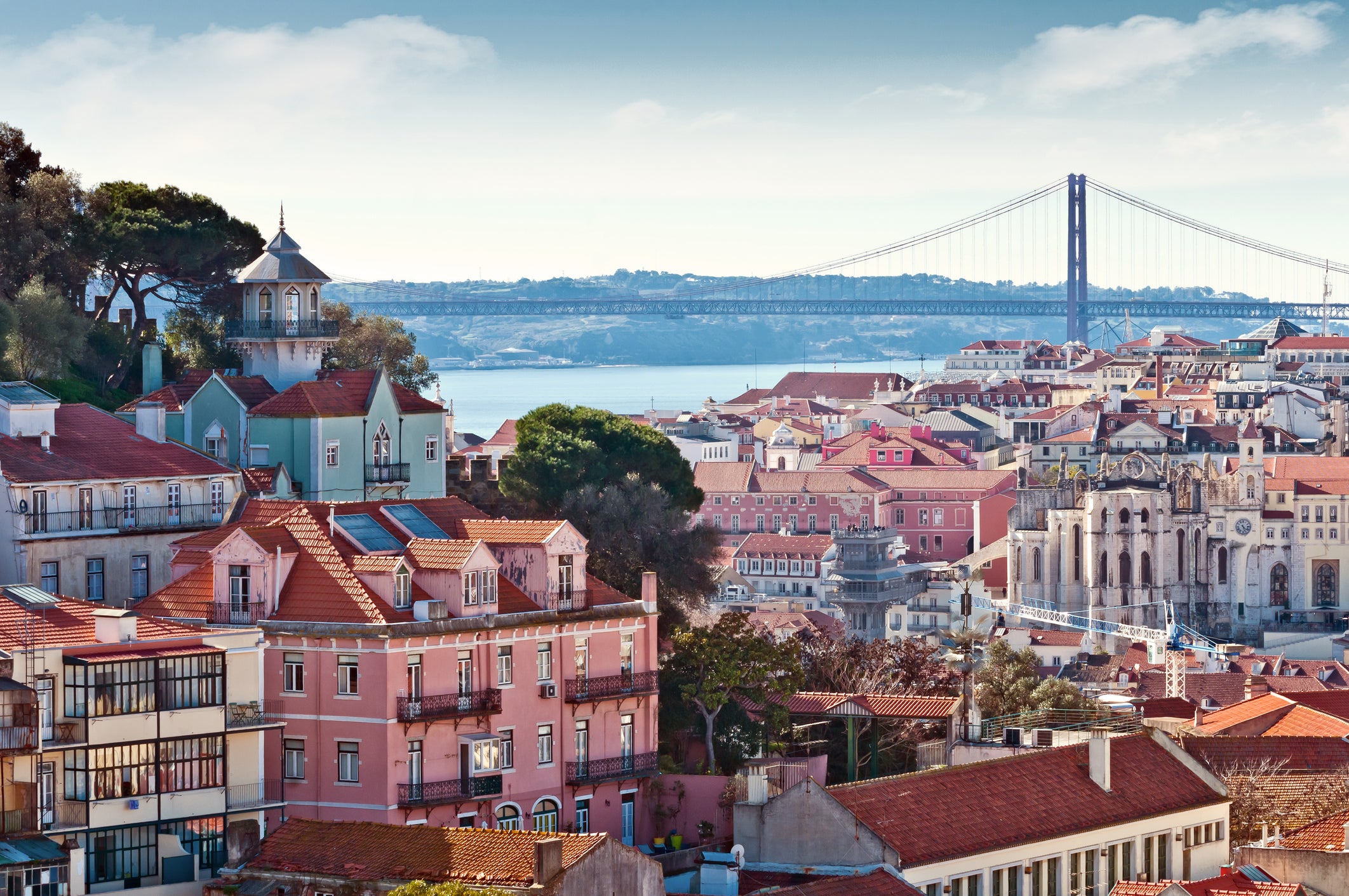
Editor's Note
Chances are you know someone who has traveled to Portugal and is raving about it. After spending two weeks exploring Portugal with my family pre-COVID, I wholeheartedly recommend the country as a great destination for kids when the time comes. But even the best places have pitfalls that come with the highlights, so here is what I encountered while visiting Portugal with kids in tow.
Related: The best credit cards for family travel
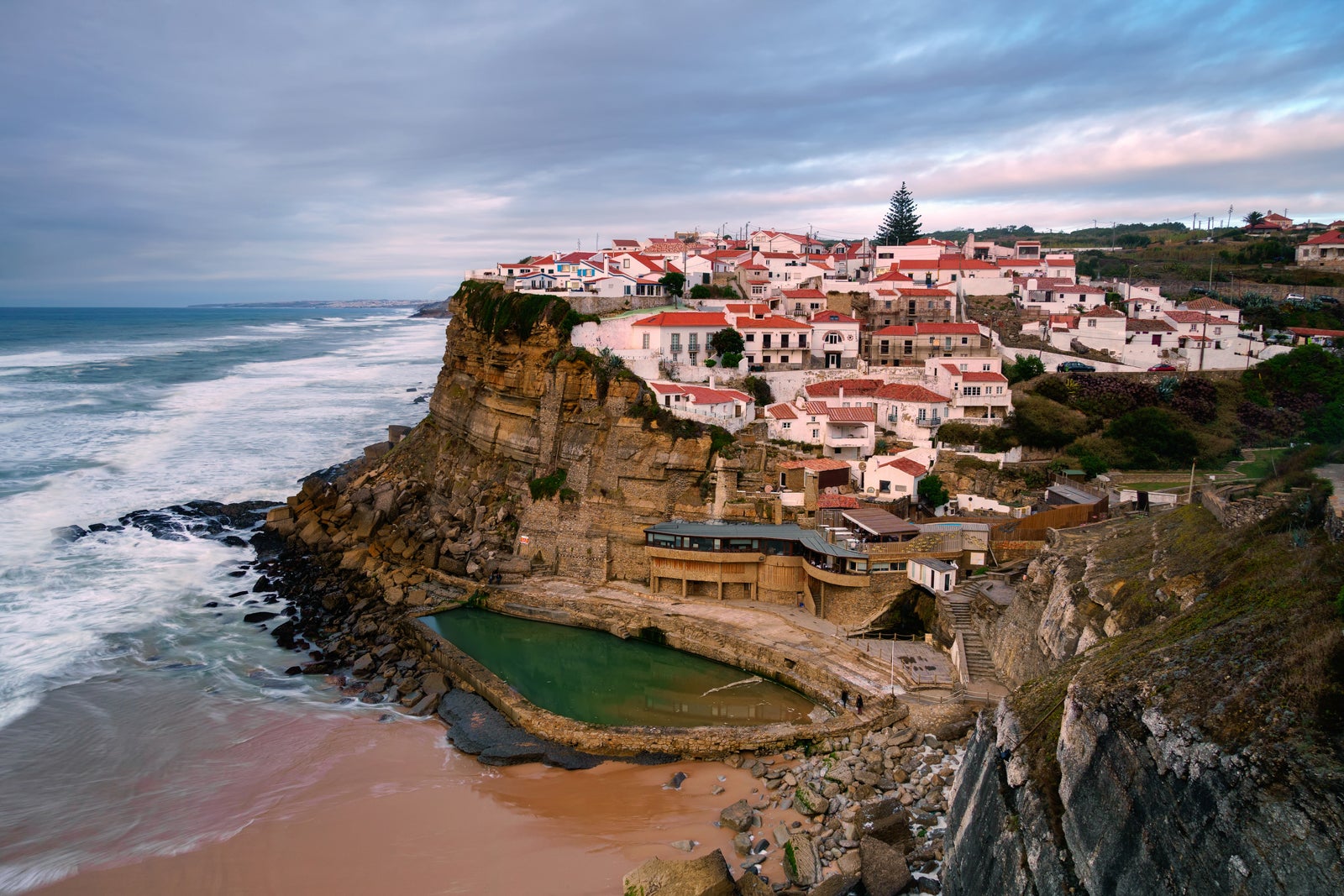
Lisbon is a no-go for strollers
There's a lot about Lisbon to love. It's clean, safe and fun to explore. However, its streets are paved with cobblestones and it is remarkably hilly. Young kids might have trouble keeping up. Consider that one of Lisbon's major neighborhoods is named "Bairro Alto," which literally means "high neighborhood."
This is from a two-hour walking tour of the city, and only records stairs, not hills:

Of course, you don't need to take a two-hour walking tour, but if you are visiting Portugal with an infant, I highly recommend a carrier over a stroller. With a toddler, you might want to limit your plans to neighborhoods that have public elevators and/or bring a stroller that is good with uneven terrain. On the upside, some of the elevators in Portugal, such as the Santa Justa Lift, are attractions in themselves.
Naturally, if an adult in your crew has limited physical abilities, some of these same terrain concerns would transfer to those situations -- so plan logistics accordingly.
We did discover that Ubers were cheap and plentiful. Most rides within the city were less than $7 for Uber X and many were under $12 for Uber Black.
Don't miss the Maritime Museum
A popular Instagram spot in the Belem District of Lisbon is the Monument of Discoveries. It's worth seeing for the view alone.
Read more: 11 best hotels for a beach holiday in Portugal

But our favorite spot was actually across the street at the Maritime Museum (Museu de Marinha). It appealed to our kids much more than other museums as it took visitors through the adventures of Vasco da Gama and other Portuguese explorers. It even had artifacts from da Gama's voyages among its extensive collection. As a traveler, I was obsessed with the historical maps and globes displayed throughout the museum.
Younger kids will especially love the Galliot Pavilion at the end of the museum. There's a huge exhibition hall that houses royal yachts and brigs, fishing vessels and Portuguese ships with lots of room to explore.
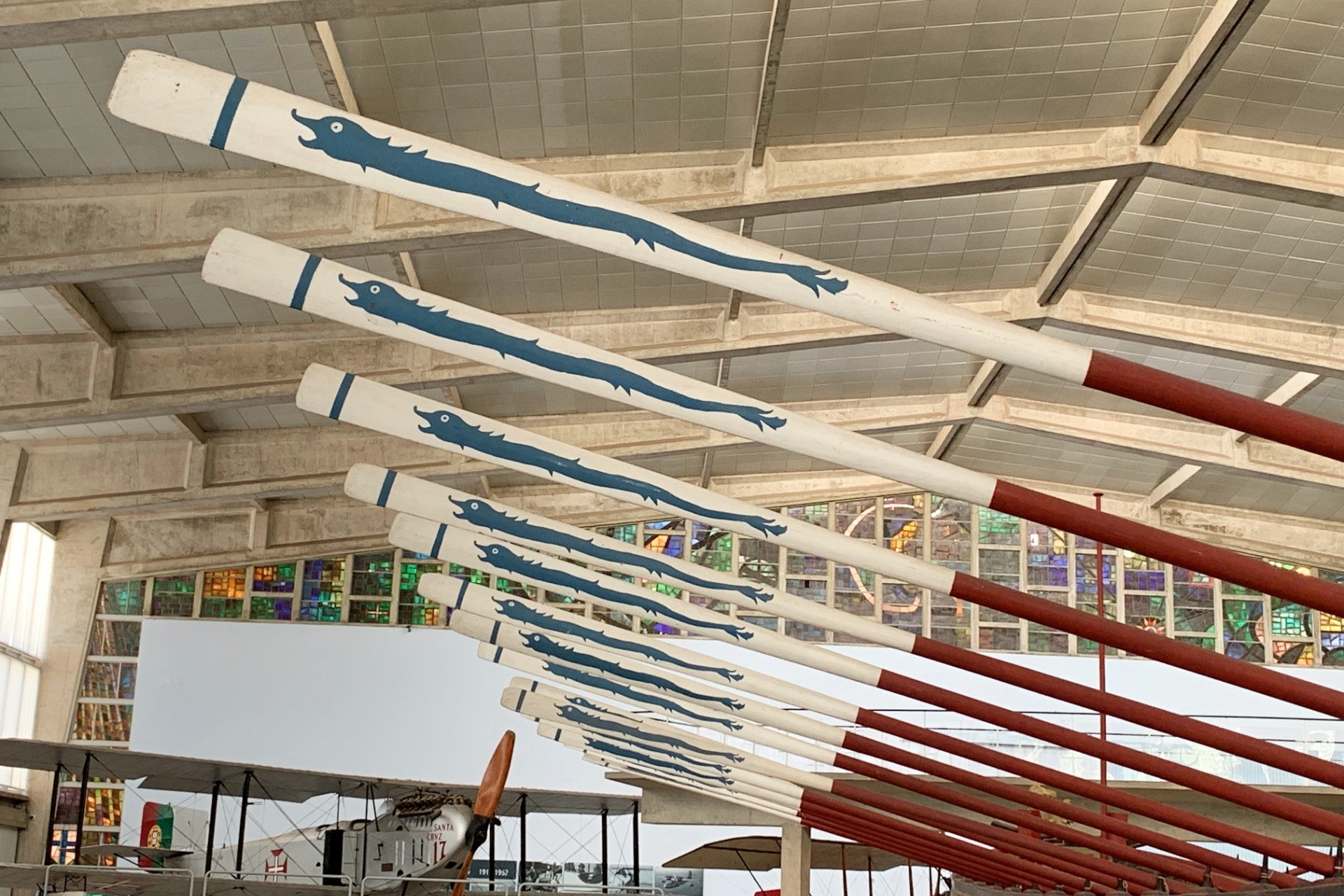
Admission to the Museu de Marinha is $6 for adults and $3 for kids 4–12. The museum is open daily, 10 am to 6 pm, in summer; 10 am to 5 pm in the winter.
Lisbon's famous trams can get crazy crowded
If you have seen photos of Lisbon, you probably know about the iconic yellow trams weaving through the city's distinctive neighborhoods. That's not what we encountered in the days before COVID-19.
Read more: 13 of the most beautiful villages in Portugal
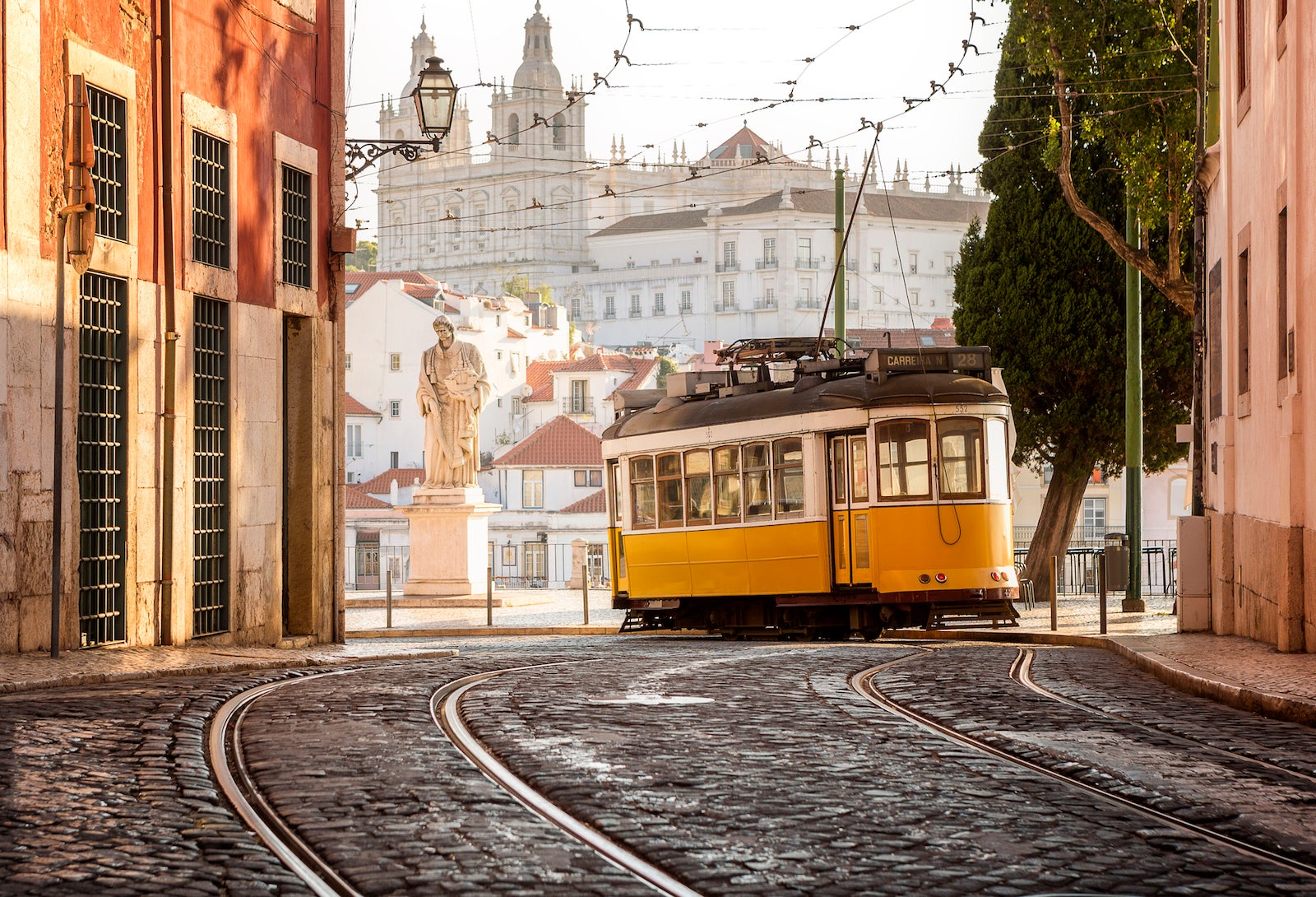
What we saw was a bit more crowded than the postcard image.

I'm not sure when the photos of empty trams are taken, but during an entire week, we never saw a tram that wasn't standing room only. If a future visit is in the cards for you and your family, consider whether or not you'll be able to comfortable social distance before jumping on.
Visit Sintra on a sunny day
Prior to visiting Portugal, everyone we asked told us that we must visit Sintra, mainly because of views like this:

This is another case where our reality was much different from our expectations. I mean, fog happens.

Our moderately cloudy day obscured the views as a misty fog bank enveloped Sintra. We couldn't see the ocean even when we drove just a few yards away. In retrospect, I should have paid more attention and realized that Sintra was a weather-dependent destination because of its location about 25 kilometers (15.5 miles) from Lisbon near the ocean.
The Algarve's water is colder than the Mediterranean
Something to keep in mind if you're an ocean swimmer: Average water temperatures in the Algarve in southern Portugal top out in the low 70s in mid-August. In late June, when we visited, the ocean was 67 degrees according to Sea Temperature , which felt too chilly for more than a toe-dip for us. Those degrees made a huge difference in our ability to swim in the ocean.
If your kids are into building sandcastles and chasing seagulls, the beaches along the Algarve are ideal -- sandy compared to the rocky ones in Mediterranean hot spots. Just keep in mind that you might have to descend a long flight of stairs to get to a spot for your beach towel. Here are some more tips for navigating the Algarve with kids along for the fun .
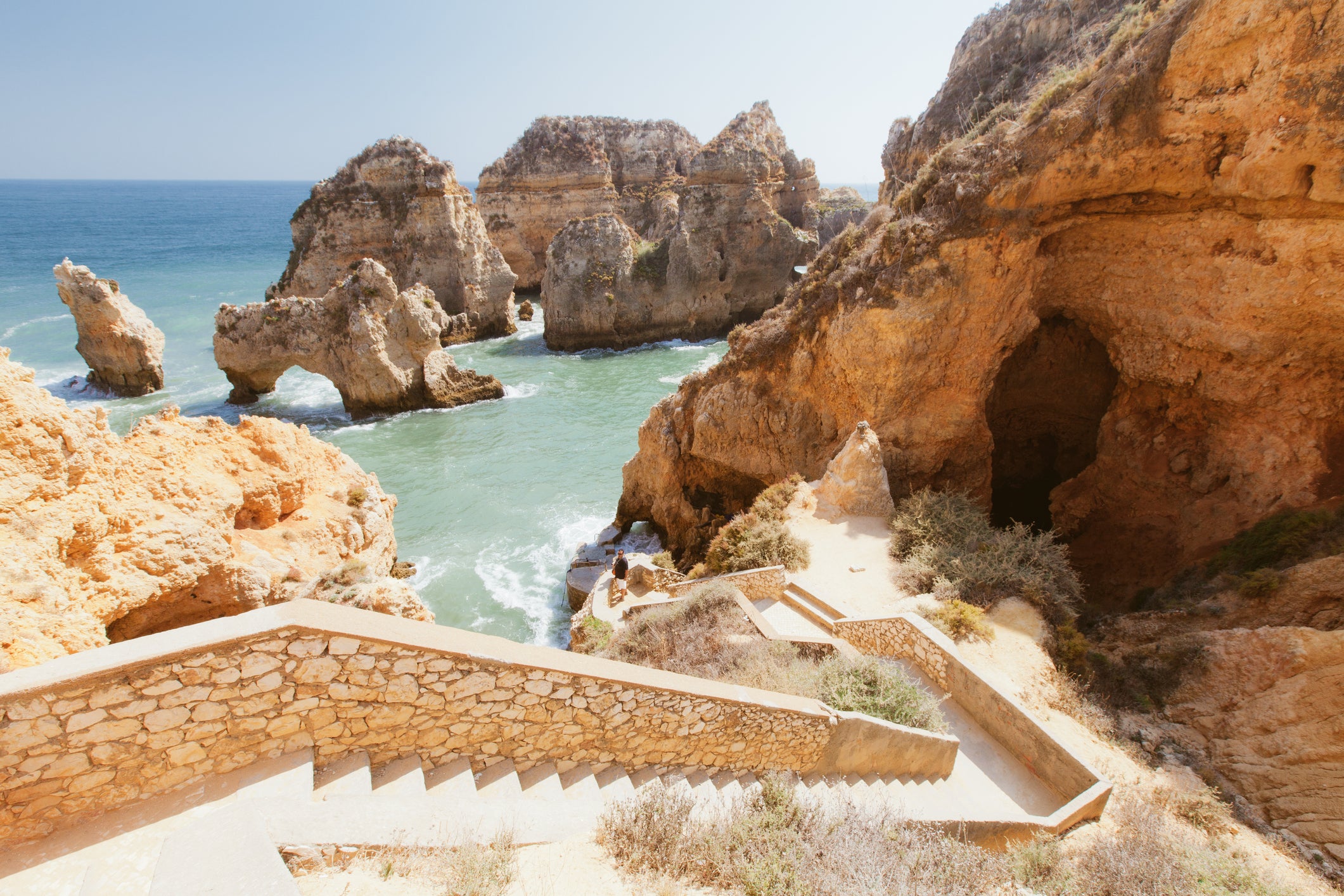
A house with a private pool is surprisingly affordable
TPG wrote about the Pine Cliffs Resort, a great hotel for families or groups of friends. Although it's definitely worth considering, so is renting a house with a private pool . We rented this one for 30% less than a room at Pine Cliffs for a week in June. With three bedrooms, including one in a turret, two patios overlooking the ocean and furnishings that look fresh out of an HGTV shoot, I'd say $254/night (before discounts) was a steal.

It's easier than ever to get to Portugal (in normal times)
Portugal is not currently open to most Americans due to COVID. And, as of Jan. 26, 2021, everyone age two and older traveling to the U.S. from Portugal must show a negative viral COVID-19 test result taken within 72 hours of departure before being allowed to board their flights; documented proof from a licensed healthcare provider of recovery from the virus within the past 90 days will also be accepted.
However, Portugal's pre-COVID popularity has not gone unnoticed by the airlines. TAP Air Portugal has a number of routes including nonstops from Washington, DC, Chicago and San Francisco. TAP is a member of Star Alliance and I've found great availability using United MileagePlus for 30k each way in coach or 70k each way in business class. United is a Chase transfer partner . Air Canada's Aeroplan is another good option if you want to transfer from American Express . TAP tickets include a free stopover in Lisbon or Porto , which can help maximize your travel budget.

Bottom line
Believe the hype: In normal times, Portugal presents tremendous opportunities for a great vacation, though that doesn't mean it is perfect for every single traveler. My teen, who is notoriously hard to please , listed Portugal among his favorite countries. When I asked why, his understated response was simply, "I liked the vibe there." I understood what he meant: Between the maritime history, the expansive vistas and the friendly people, I liked the vibe there, too -- though I'm sure having a private pool didn't hurt.
Read more about planning a vacation to Portugal:
- Tips for Exploring Portugal's Algarve Region With Kids
- Why Families Will Love Marriott's Pine Cliffs Resort in Portugal's Algarve Region
- Portugal Hotels on Points for Families of 4
- Go Here, Not There: European Cities Edition
- The Best Bucket List Points Trips to Beach Destinations
Transportation in Portugal: Find the Best Way to Travel Around the Country
- Share on Facebook
- Share on LinkedIn
- Email this Page
Life in Portugal , Lifestyle and culture
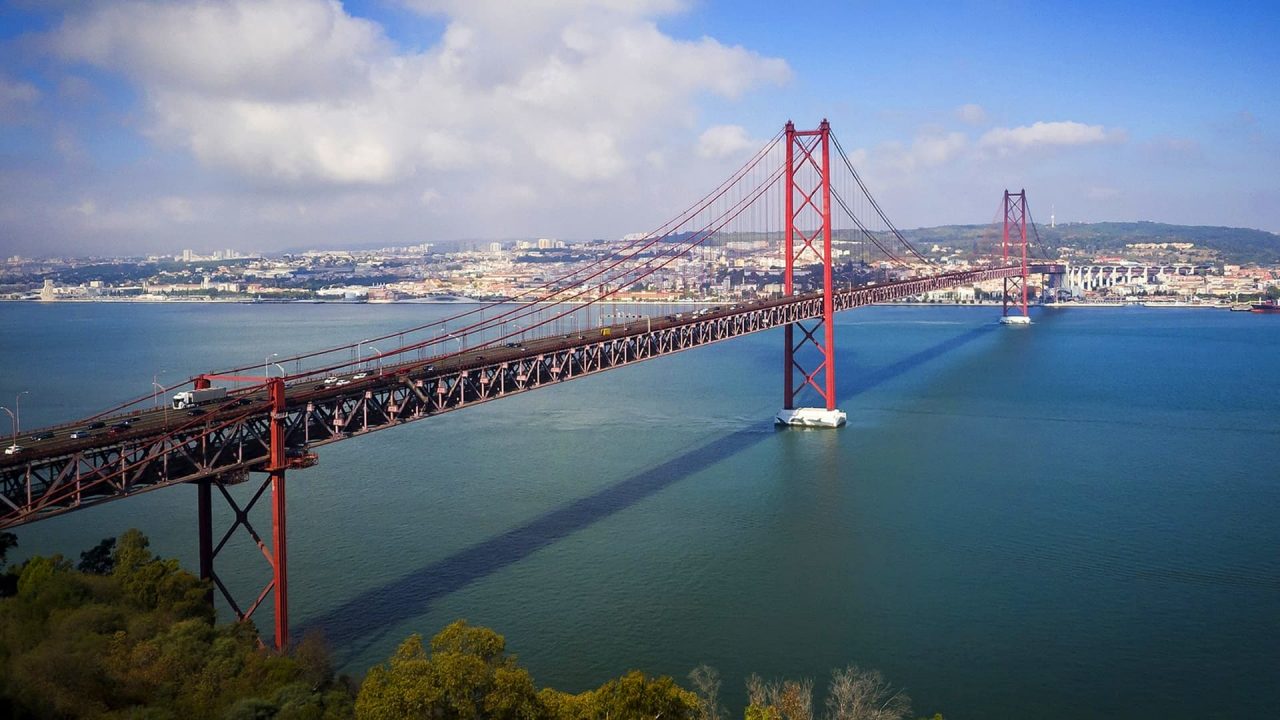
Table of Contents
- How to travel around Portugal by train
- Travelling around Portugal by bus
- Metro in Portugal
- Portugal airports
- Driving in Portugal
- Taking taxi, Uber, Taxify or Cabify in Portugal
- Enjoy your journey with affordable transportation in Portugal
Feeling unsure about how to travel around Portugal? Do you want to find the most cost-effective and most comfortable option? In this article we will talk about what types of public transport you should use depending on your travel needs. Portugal offers a wide variety of transportation services such as trains, buses, trams, metros, taxis, and planes. Public transport in Portugal is safe, clean, mostly reliable and affordable.
Portugal has a broad railway network, making it easy to travel between destinations. Whether you travel to towns in the north or want to see the coastal caves of the Algarve, the reliable train system in Portugal provides a great way to discover the country with picturesque scenery.
Type of trains in Portugal
There are six main types of trains in Portugal:
- InterRegional;
- Intercities (“Intercidades”);
- Alfa Pendular;
- Fertagus; and
Regional (R) is slower and stops frequently. If you are on a budget and not in a hurry to get to your destination, then this type of train will suit you the most. The trains are pretty comfortable and have have air-conditioning. They are second class quality only so sorry, no first class travel here.
Interregional
Interregional (IR) is reasonably fast, running mainly on secondary lines.
Intercidade
Intercidades (IC) is the long distance express train connecting the capital of Lisbon to many other larger Portuguese cities. The trains all have air-conditioning and you can get a first class or a second class seat.
Alfa Pendular
Alfa Pendular (AP) deluxe trains are the fastest way to get around Portugal with speeds of up to 220km per hour (137 miles per hour). It connects all of the major cities in Portugal. They offer a mini bar, meals, wifi, audio and video channels. It is also the priciest option you can choose.

Fertagus (FERT) (website is in Portuguese) is a private operator running suburban trains from Lisbon across the Tagus River (“Tejo”) to Setubal and serves 14 stations. They all have air-conditioning with second class seats only.
Celta (CEL) are international express trains that run between Porto and Vigo with stops at Nine, Viana do Castelo and Valença operating twice a day.
Main train stations in Portugal
Here is a list of the main train stations in Portugal In Lisbon there are:
- Santa Apolónia ;
- Oriente ; and
- Sete Rios .
- Campanhã ; and
- Porto São Bento .
In Coimbra:
- Coimbra (Estação Nova); and
- Coimbra B (Estação Velha).
To see the Comboios de Portugal (CP) train map of Portugal, click here .
Train ticket prices in Portugal
The train transportation in Portugal is very affordable compared to a lot of western European countries. I recently travelled to Porto paying only €25 for one-way on a second class train. If you buy a return ticket you can get 10% discount for long-distance journeys, but only if you book your trip in advance.
Discount train tickets
Comboios de Portugal (CP) (the state-owned railway company) offers various discounts for children, youngsters, senior citizens and more. Here are a few of the options you can take advantage of: Family & Friends 50% discount. Discount applies for weekends for groups of three to nine people. Children half-price. Children under the age of three can travel for free in Portugal and they can enjoy further discounts between the ages of three to 12 years old. Trainsharing up to 50% off. If you travel with a group of three or four people on the Alfa Pendular or Intercidade trains on Tuesday, Wednesday or Thursday, you can get up to 50% discount. Senior citizen 50% off. Discount applies for people aged 65 and above. As long as you provide your age with your ID, you get 50% discount on train prices. Youth ticket 25% discount if you travel with Alfa Pendular or Intercidades tickets up to the age of 25. Find more discounts for specific occasions at the CP website here .
The networks of these bus companies cover most of the country’s main towns and local destinations. Compared to other national bus services in Europe, I found Portugal’s to be clean, comfortable and with a window seat the scenery makes a pleasant journey.
Major bus companies in Portugal
Rede expressos.
Some of the major bus companies have united under Rede Expressos . Their website offers services between almost every major city and smaller towns across Portugal as well as to Spain. You can reserve your trip online. They offer onboard media, free wifi and power sockets. You can travel to Porto or Faro for only €19 even if you don’t book your ticket in advance and you are eligible to get discounts if you have REFLEX Card .
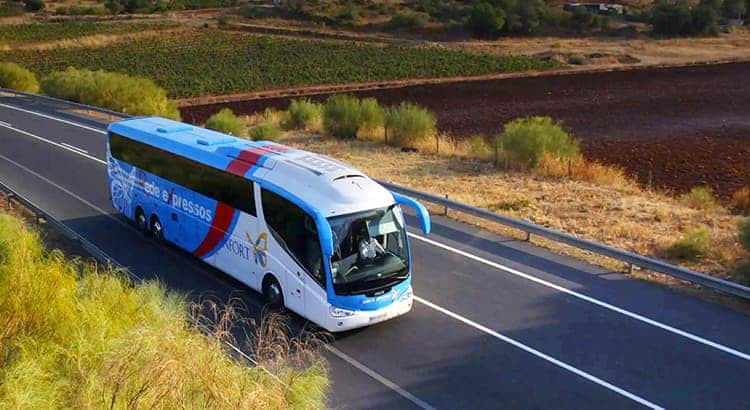
The Rodonorte bus company is serving the north of Portugal with services radiating out of Vila Real. Rodonorte buses connect with:
- Guimarães ;
- Mirandela ;
- Povoa de Varzim;
- Viana do Castelo ; and
The Eva bus company operates in the Algarve region. If you are planning to travel across the whole region, Eva bus offers a very affordable option to accomplish that. With their tourist pass, you are eligible to use vast network of intercity transport. A three-day pass costs €30.40 and a seven-day pass costs €38.
The transportation service in Portugal is quite broad, however only Lisbon and Porto have a metro system. Both are safe, clean and most of the time efficient. During the day, the metros run very regularly, but in the evening you might have to wait up to 10 to 12 minutes to catch one.
Metro in Lisbon
Currently, Lisbon Metro has 56 stations and four lines:
- Red: São Sebastião to Aeroporto.
- Yellow: Odivales to Rato.
- Blue: Amadora este to Baixa Chiado.
- Green: Cais do Sodré to Telheiras.
The Lisbon Metro opens at 6:30 am and closes at 1 am. However, note that some stations close before this time. A single ticket is €1.50 and a daily ticket costs €6.40. At the moment, a monthly Viva card costs €36.70 which is due to decrease in April 2019 to €30. Click here for the Lisbon Metro map.
Metro in Porto
Porto’s Metro has 6 lines and 81 stations.
- Line A (Blue): Estádio do Dragão to Senhor de Matosinhos.
- Line B (Red): Estádio do Dragão to Póvoa de Varzim.
- Line C (Green): Estádio do Dragão to ISMAI.
- Line E (Purple): Estádio do Dragão to Aeroporto.
- Line F (Orange): Fânzeres to Senhora da Hora.
Porto Metro opens every day at 6 am and the last train departs at 1 am. Depending on the time of day, the metro can pass every 4 to 15 minutes. The cheapest ticket is €1.20, and can go up to €5.20 depending on how many zones you need to go through. Click here for the Porto Metro map. Be sure to subscribe to our newsletter for all the best tips about travelling to Portugal.
Mainland Portugal has three international airports, Lisbon, Porto and Faro. These three airports cover the entire country, and provide numerous international routes.
Lisbon Airport
Lisbon Airport is located within the city limits and is connected to the Metro and bus network, making it very convenient to travel to the city centre. The highest number of international flights depart from this airport. In Lisbon, the low-cost airlines arrival is handled by terminal one but passengers depart from terminal two The only way to go from terminal one to two is by a free coach. Have a look at our full guide on Lisbon Airport here.
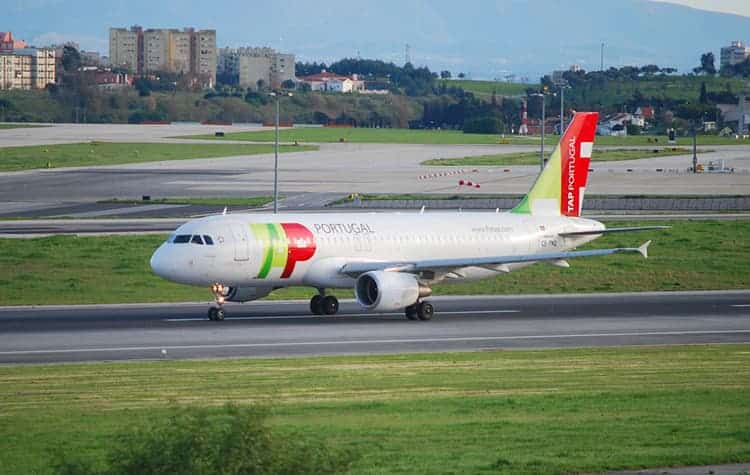
Porto Airport
More and more low-cost airlines travel to Porto and the number of flights from outside of Europe is increasing. The Porto airport is well-connected to the Metro and is easy for onward travel. For more detailed information, read: Porto Airport
Faro Airport (Algarve Airport)
Faro is located in Algarve and is a beloved destination for tourists, especially from the UK. The number of flights and passenger levels fluctuates during the year with most travellers passing through the airport during the summer season. There is almost no public transport from Faro airport, so you should think about the transportation to your accommodation prior to your flight. Fo a full guide on getting to and from Faro Airport read: The Algarve Airport: Tips to Plan Your Trip to The Algarve, Portugal
As I previously mentioned, public transportation in Portugal is very convenient, fast and affordable, however, if you prefer to be more flexible and visit small towns and villages where otherwise you couldn’t get to, driving a car might be the best solution for you. If you decide to rent a car , there are multiple car rental services you can choose from. Rentalcars is a good site where you can compare the prices between companies. With most companies offering free cancellation, you can always get your money back if you spot a better offer or change your plans. Car hire is typically charged per 24-hour period. Whether you travel alone or with family or friends, you will find many options to choose from. You can find small cars for only €11.88 per day. You might find cheap weekly deals, so try to change your search for seven days and see if it’s a better fit for you.
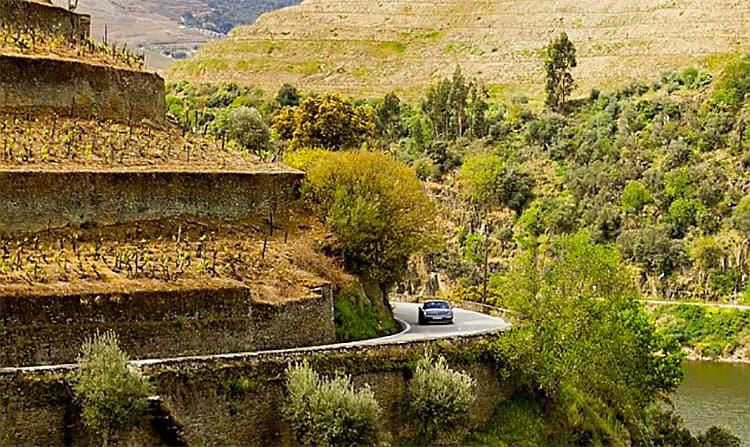
You should also be aware of toll roads in Portugal (website is in Portuguese). This means that you will be expected to pay to drive on certain roads. This is more frequent in the north of Portugal, but it is worth being aware of this for any trip you may take. A car rental should include a chip on the windscreen to allow you to pass through the toll booths quickly. Sometimes they include these costs in the rental price and sometime you have to pay extra at the end. It’s worth asking the car rental company about this when you pick up your car. Also, you should know that petrol/gas costs in Portugal are amongst the top 10 most expensive in Europe.
Taxis in Portugal
Most licensed taxis in Portugal will have a taxi sign on the roof and the driver’s identity will be displayed inside the cab. Lisbon’s taxis are painted black and green or cream. By law, all taxi fares are calculated using a taximeter, so always insist that the metre is running..
Are Lisbon cabs safe?
Yes. All drivers have to be registered and their registration card will be displayed in the car. You might find the driving culture different to what you are used to. But if you are a super cautious person, I would recommend using an app like MyTaxi (website is in Portuguese) where you can see the driver’s profile and reviews from other passengers. The basic Lisbon taxi fare is €0.47 per km, and there is a minimum fare of €3.25 when you get in.
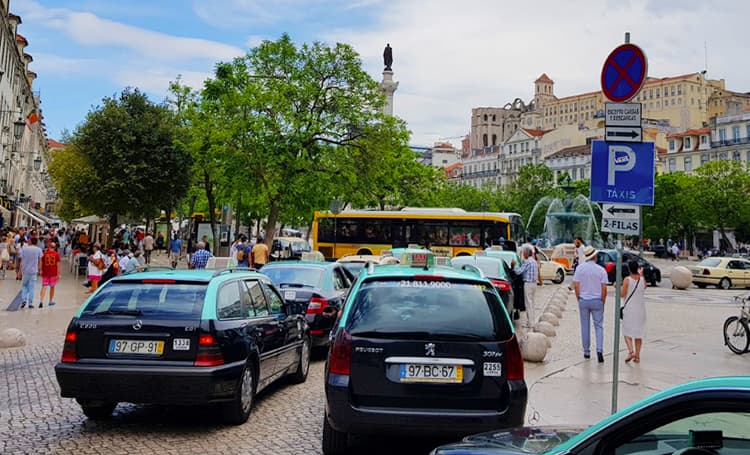
Uber in Portugal
Uber has become a very popular solution to turn to amongst tourists especially. The app is easy to use and the cost of the service is very low unlike in a lot of other European cities. Sometimes I pay only €3 to €4 for a 10 minute trip. Find out more here: Uber in Portugal.
Other alternative taxi hailing apps
Taxify (now called bolt).
Bolt (formerly Taxify) taxi service has become very popular in Portugal, especially in Lisbon. Although they’re only offering €3 free credit to new customers, they’re usually one of the cheapest options overall.
Cabify is only present in Latin America, Spain and Portugal. This service is only available in Lisbon and Porto. The fare is relative cheap at €1.10 per kilometre.
The best way to choose which method to use will be down to your destination. If you travel in between cities on a budget and you are in less of a rush, I would recommend travelling by bus, otherwise upgrading to a faster and more comfortable train is recommended. For more flexibility on your journey and to get to more remote locations, driving a car is the best way. Just be aware of aspects like parking, tolls and fuel. With the beautiful Portuguese scenery, most journeys regardless of method, can be a nice way to sit back and see Portugal on the move. Let us know in the comments below if you have any question on transportation in Portugal.
Related Posts
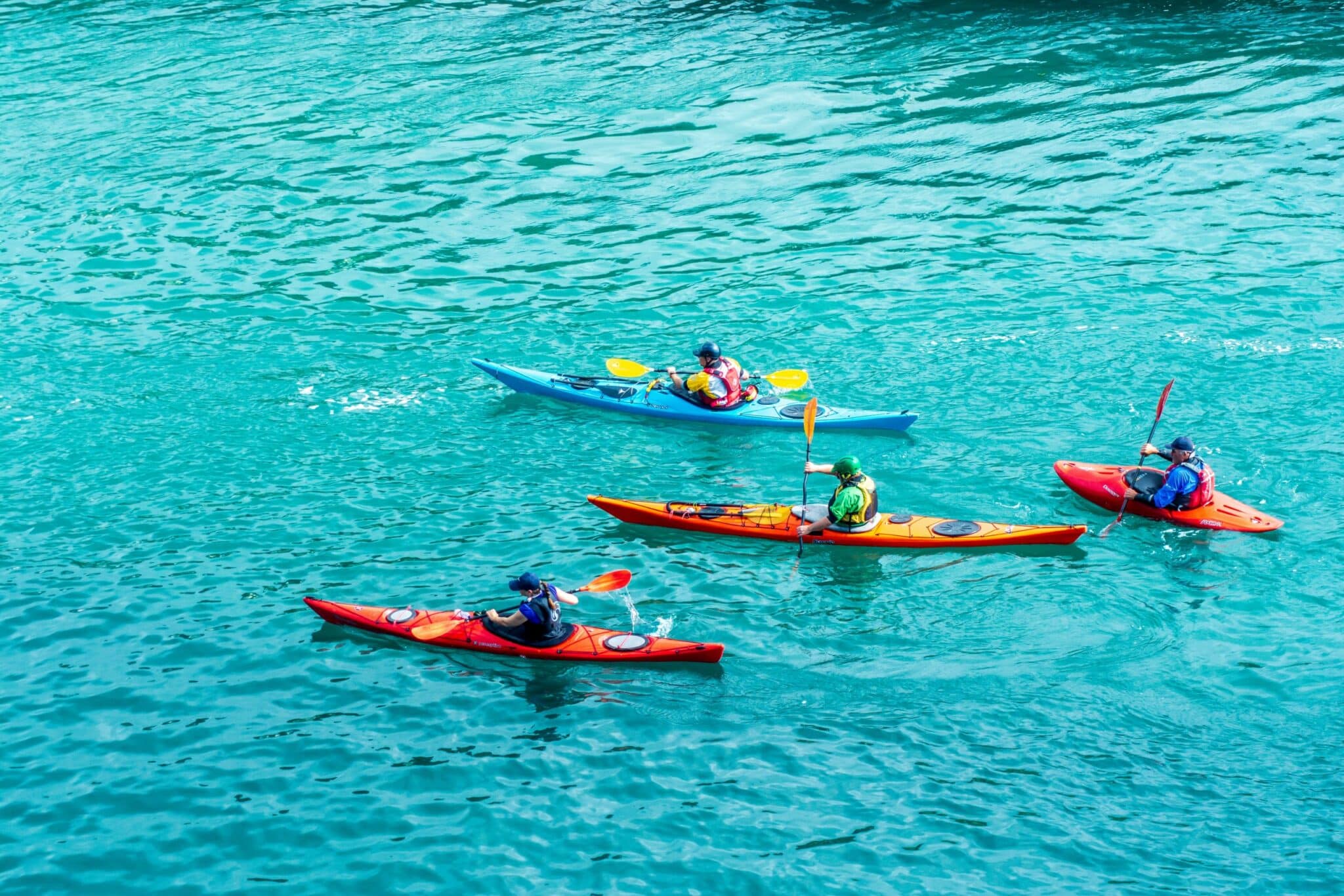
6 Amazing Places To Go Kayaking In Portugal
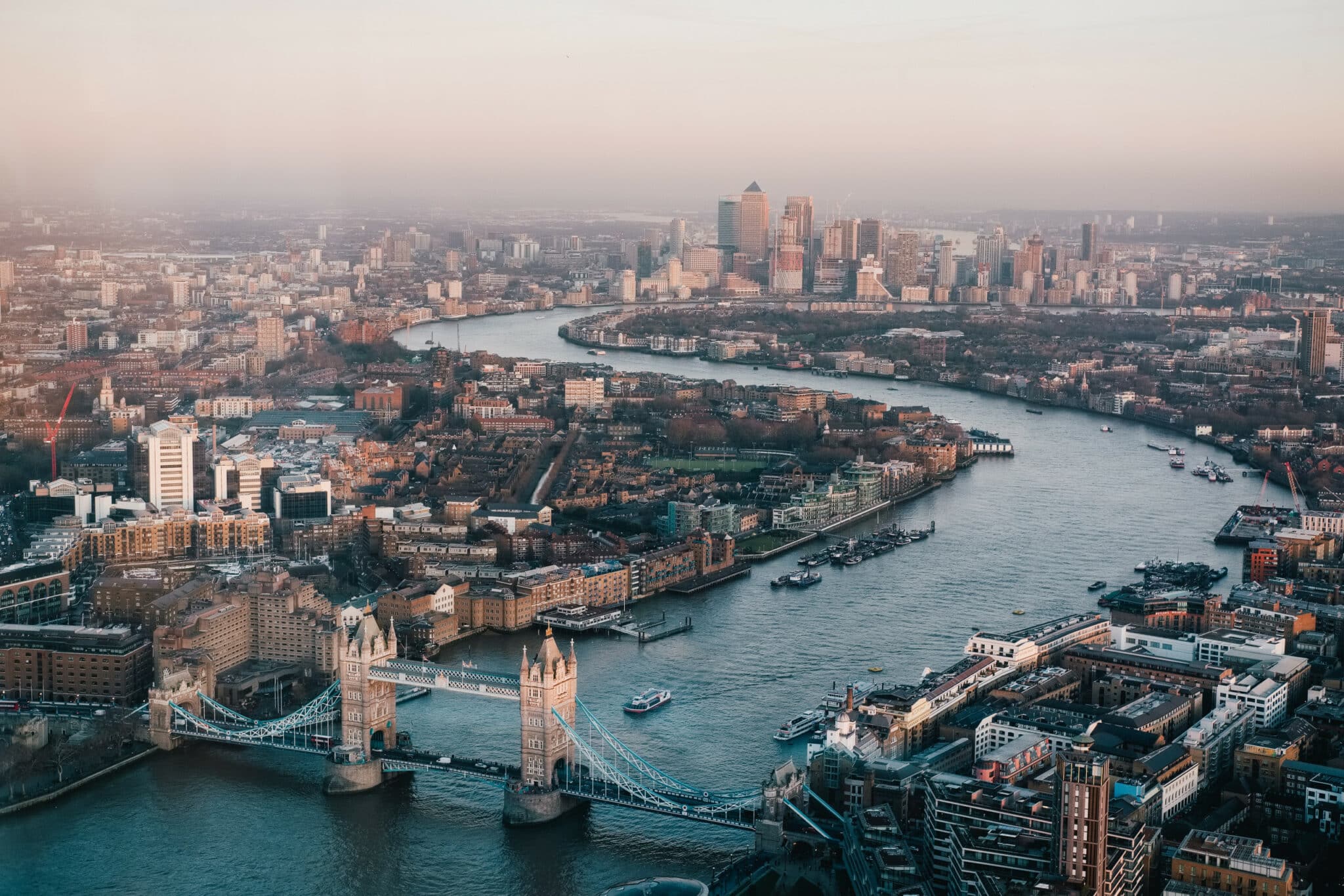
What Requirements Are There For Traveling To UK? Find Out Here
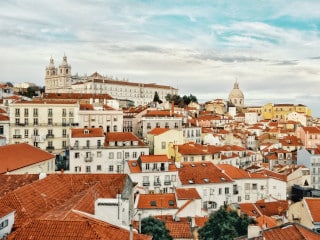
Expat-friendly Portugal ranks 12th in the Quality of Life Index
Your Complete Guide to Carvoeiro in the Algarve, Portugal
by Luísa Santos
Cruises in Portugal: The Top 6 Cruise Holidays You Must Take
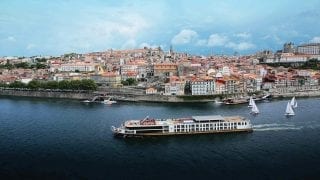
Stay up to date
Join our email list to receive weekly updates on webinars, promotions, announcements, social meet ups and more…
About BePortugal
Life in Portugal
Visit Portugal
Money in Portugal
Stay Connected
Keep up to date with industry insights and latest news.
Copyright © 2024 Expats Portugal
Privacy policy, terms of use.
- Miranda do Douro
- Viana do Castelo
- Corvo, The Crow Island of the Azores
- Faial, The Blue Island of Azores
- Flores, The Yellow Island of Azores
- Graciosa, The White Island of the Azores
- Pico, The Black Island of Azores
- Santa Maria, The Sunshine Island of the Azores
- São Jorge, The Brown Island of Azores
- São Miguel, The Green Island of Azores
- Terceira Island, The Festive Island of Azores
- Central Portugal
- Lisbon and Tagus Valley
- Porto & Northern Portugal
- Portugal Survival Guide
- Entering Portugal
- Guide to Learning Portuguese
- Portugal Holidays
- Average Temperatures in Portugal
- Weather in Portugal
- Portugal Visa Guide
- Golden Visa Portugal
- Portugal Digital Nomad Visa 2023
- D7 Visa Guide
- D2 Visa Guide
- Food & Drink
- History and Culture

19 Best Places to Eat Pastel de Nata in Lisbon
Where to eat the best bifanas in lisbon, get the scoop on the 8 best ice cream shops in porto, where to eat the best bifanas in porto, here’s the scoop on the 10 best ice cream shops in lisbon, 7 incredible facts about josé saramago, the history of the knights templar in portugal, portugal’s legendary creatures, haunted portugal, the 10 best portuguese painters, 1-week portugal itinerary: where to spend 7 days in portugal.
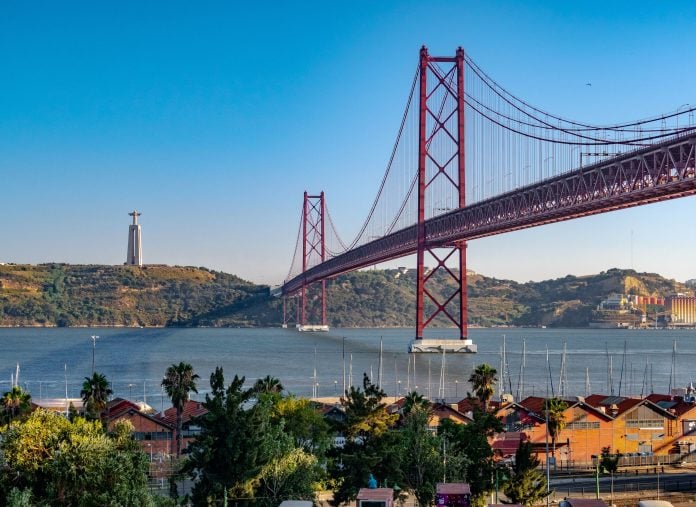
Millions of tourists travel to Portugal every year, but it can be hard to figure out where to go. Luckily, this 1-Week Portugal Itinerary guides you on where to spend 7 days in Portugal.
The itinerary starts in the Portuguese capital of Lisbon and then heads south. You can enjoy the journey fully through public transport, but when leaving Lisbon to head to the Algarve, we do recommend renting a car.
When renting your vehicle, you can select to pick up the car at Lisbon airport and return it at the end of your trip at Faro airport, where this itinerary ends.
While both Central Portugal and the north have a lot to offer, this 7-day itinerary is perfect for a first-timer who hasn’t yet visited the country.
For everything you need to know before traveling to Portugal, check out our Portugal Survival Guide.
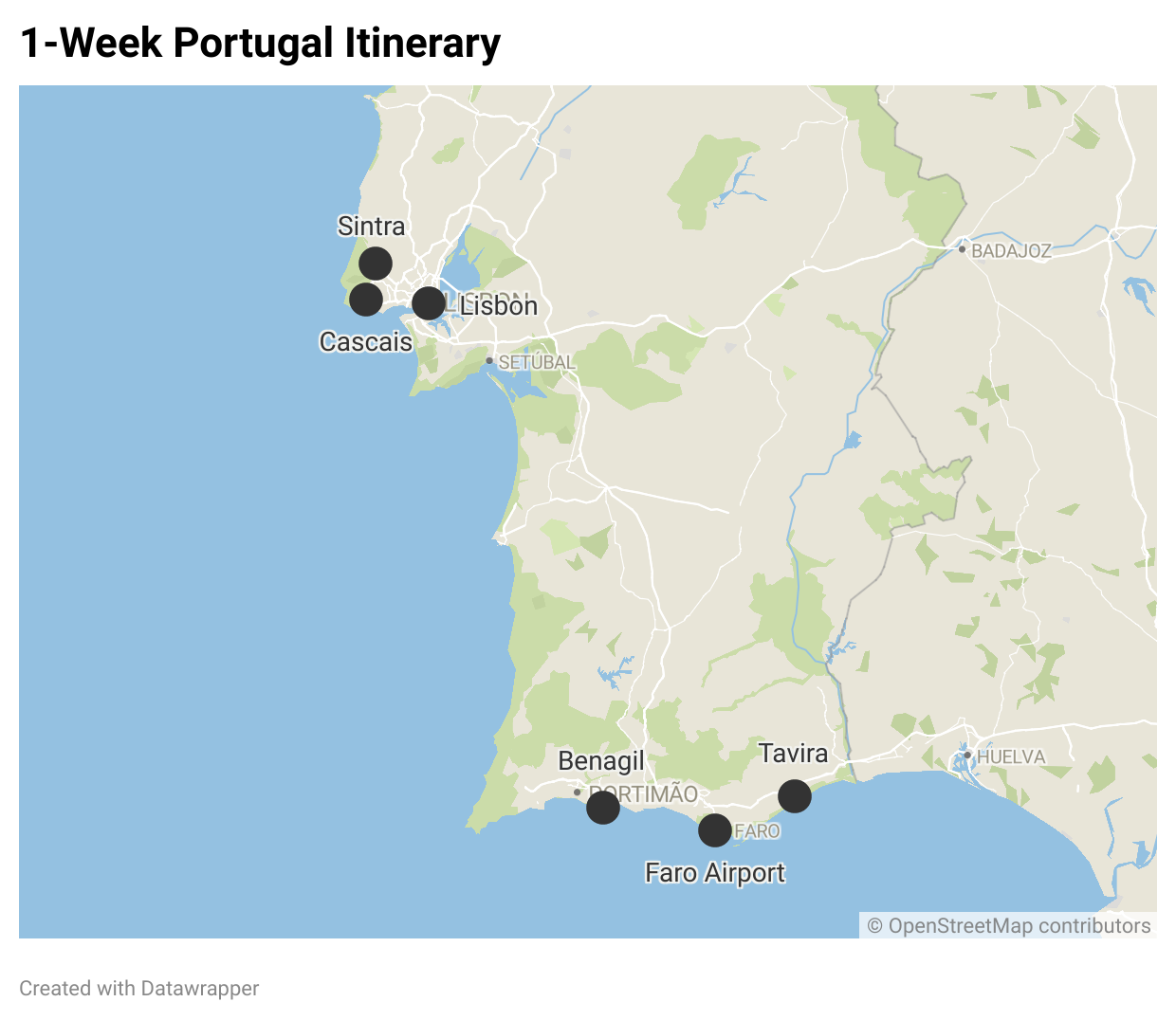
Day 1: Arrive in Lisbon
This 1-Week Itinerary in Portugal starts in the capital of Lisbon. Many cities around the world fly directly to Lisbon. You can fly directly to Lisbon from many US airports, including Miami, Boston, Washington, San Francisco, and New York.
One of the oldest cities in western Europe, Lisbon has seen a boom in tourism due to its unique beauty, historical attractions, and affordability.
The birthplace of Amália Rodrigues, the iconic Fado singer, Lisbon is rich in culture, history, and striking views.
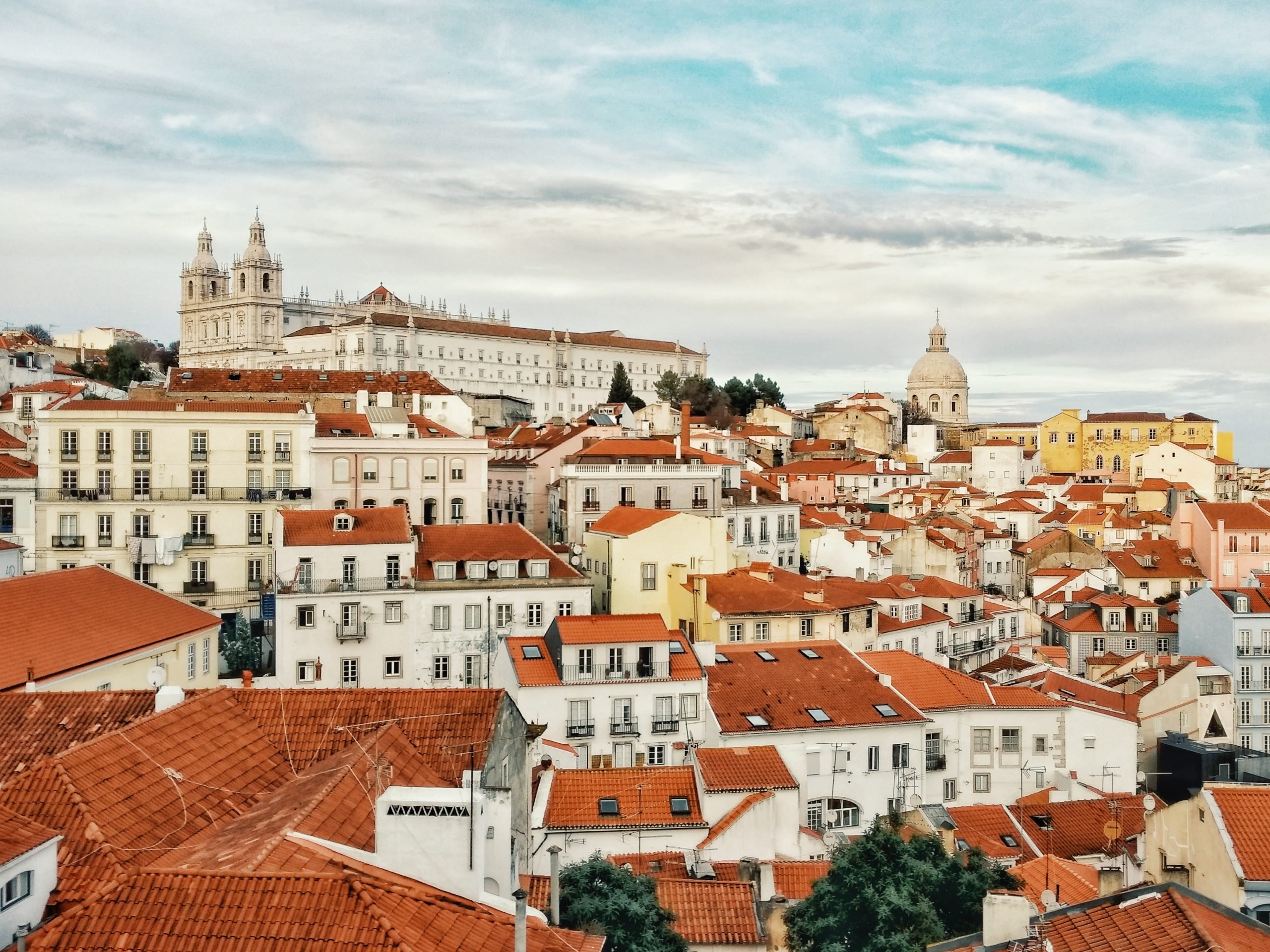
Guide to Lisbon
For your visit day in Lisbon, start your day off in Alfama. The oldest neighborhood in Lisbon and the home of fado. Explore the neighborhood and look out for Fado spots, as well as historical monuments such as the Lisbon Cathedral, the Convent of the Grace, and more.
For lunch, take a look at our favorite restaurants in Lisbon.
For a traditional Portuguese meal, we recommend Alfaia, one of the oldest restaurants in Lisbon that opened in 1880.
If you are vegan but still want to try Portuguese food, we definitely recommend Ao 26 Vegan Food Project.
For the best pizzas in Lisbon, head to Casanova in Santa Apolonia to take some pizzas cooked in a large wood-burning stove and enjoy views of the Tagus river.
Then head to Miradouro da Graca, one of the most iconic viewpoints in Lisbon. At the top of the seven hills of the city, you get to see historic neighborhoods and take photographs of the surroundings.
Then take the iconic 28 tram from Miradouro da Graca that passed by Praca do Comercio and other locations. Hop off in Chiado.
Chiado is well known for being home to the best stores a nd luxurious cafes, located in the heart of the city. The 1700s Bertrand book store is located here, as well as the emblematic cafe A Brasileira.
Take a 15-minute walk to Praca do Comercio, the city’s central waterpoint front. The large square used to be the site of the former royal palace that was destroyed in the Great Lisbon Earthquake in 1755.
There are multiple shops and restaurants in the square. You can also climb the Rua Augusta Arch for 360 views of the city and the square.
For dinner, head to 1 de Maio in Bairro Alto for an affordable Portuguese meal. This hidden restaurant offers delicious fresh seafood that you can see from the window and a variety of meats like lamb.
After dinner, head to Pink Street in Cais do Sodre. The street features pink pavement and was once Lisbon’s Red Light District. Today, it is a nightlife hotspot.
Many bars today still reflect the Red Light District such as the iconic bar Pensao Amor which has memorabilia from the time. Walk around to experience the nightlife which often fills the street, locals bringing their drinks outside.
Best Hotels in Lisbon
- Inspira Liberdade Boutique Hotel: Awarded the Best Luxury Green Hotel in 2019, Inspira Liberdade provides a relaxing Feng-Shui vibe for its guests. The hotel has a SPA, fitness room, bar, and a restaurant with Portuguese food called Pen Brasserie Mediterrânica.
- Selena Secret Garden : The hostel also has a rooftop deck, CoWork space for professionals, and a movie room. In the heart of Cais do Sodre, you are close to contemporary art galleries, bars with riverfront views, and within walking distance to Chiado.
- Bairro Alto Hotel: This hotel is situated in the best location in Lisbon, between Bairro Alto and Chiado in an 18th-century building in central Lisbon. The hotel features a restaurant with award-winning Chef Nuno Mendes and Executive Chef Bruno Rocha.
Day 2: Lisbon
For your second day in Lisbon, we recommend exploring Belem. Belem lies along the Tejo Estuary and is home to two UNESCO sites, Torre de Belem and Mosteiro dos Jeronimos.
Mosteiro dos Jerónimos is a former monastery in Belém constructed in Portuguese Late Gothic Manueline style and you can visit the church for free.
Torre de Belem is a 16th-century fortification that once served as an embarkation spot for Portugal explorers. It features a Manueline style and has been a World Heritage Site since 1983.
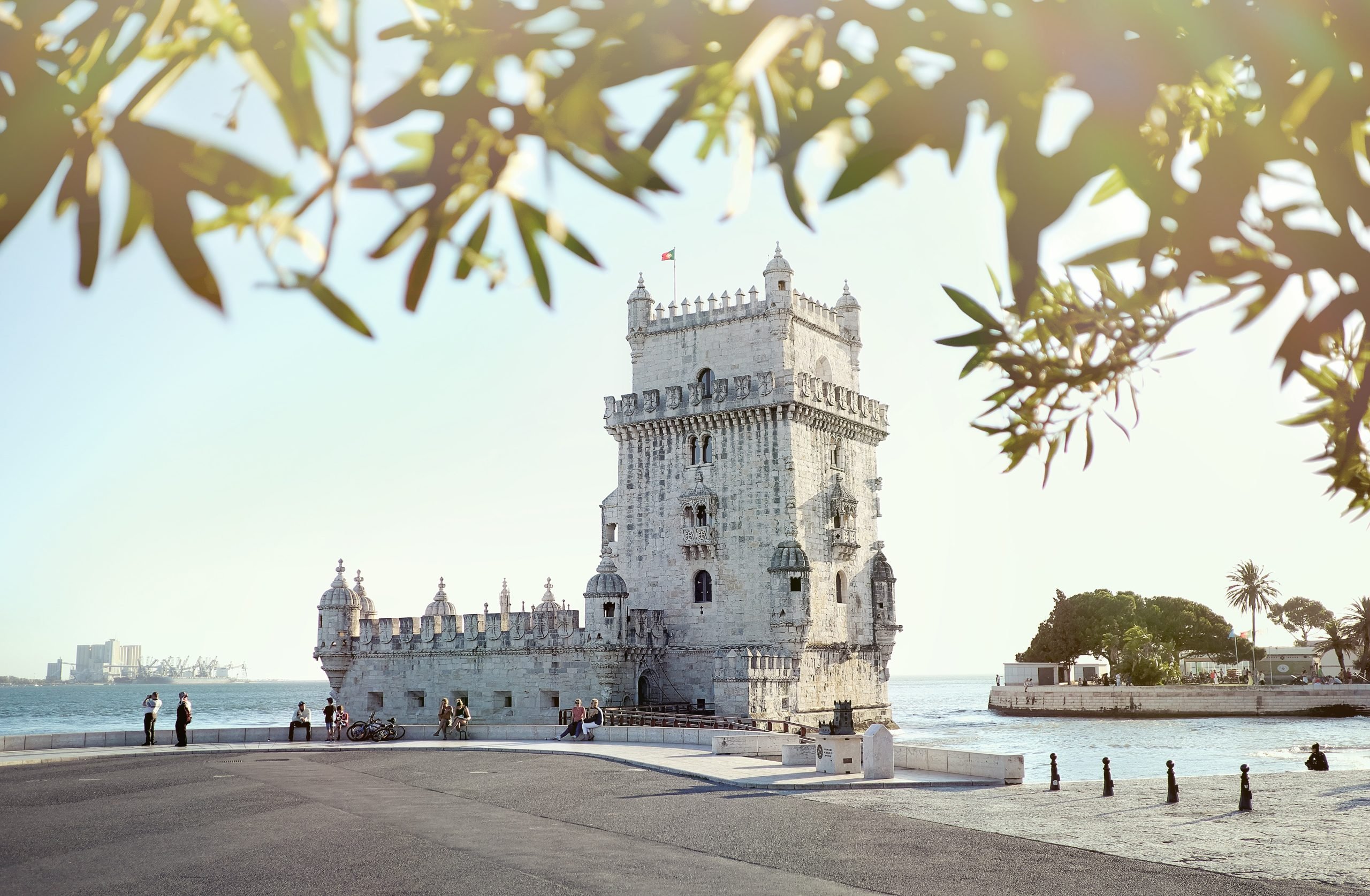
A 2-minute walk from the monastery, head to Pasteis de Belem where the traditional Portuguese custard tart was first invented.
In the afternoon, we recommend booking a sightseeing tour. Since you only have 2 days in Lisbon, this is a great way to see as much of the city as possible. Here are our favorite guided tours of Lisbon:
- Lisbon 3-Hour Sightseeing Tour by Tuk Tuk : This tuk-tuk tour rides up and down the hills of Lisbon, going through the city’s oldest neighborhoods and main attractions.
- Lisbon Hop-On Hop-Off Bus Tour: Book a 24-hour ticket which includes an audio guide. This affordable ticket allows you to visit different routes and hop in as you would like.
- Lisbon 3-Hour Tour by E-Bike: This tour allows you to cycle through Lisbon on comfortable e-bikes with a guided tour. You will get to visit different viewpoints and historical attractions.
At night, walk to Bairro Alto, the most popular area for drinking outdoors. Tons of locals and tourists line the streets of Bairro Alto with a beer in hand. We recommend Ze dos Bois Gallery, a musical center that has live music and serves tasty drinks.
Best Restaurants in Lisbon
- Ze dos Cornos: For a Portuguese person, this place is like arriving at your Avó’s (grandma´s) house for dinner. Everything off the menu hits the spot, but try their codfish with potatoes or their rabbit. You can have a large full meal here with wine for under €15.
- The Green Affair: Open since 2018, the Green Affair serves Portuguese and international dishes. The restaurant offers lunch menus for less than €11 including a starter, main, and drink. For dinner, you’ll pay around €30 for two people.
- Alma: Henrique Sá Pessoa’s, Alma also has two Michelin stars. The menu includes Portuguese dishes with influences from his worldwide travels. The menus start at €145 per person and do not include drinks. The wine tasting menu costs €80 per person.
Day 3: Day Trip to Cascais & Sintra from Lisbon
Book Sintra & Cascais Tour
The great thing about Lisbon is its proximity to quaint coastal towns. Our favorites: Sintra and Cascais. We recommend either driving to these locations (both around 30 minutes from Lisbon), booking a guided tour , or taking a 30-minute train to each town.
In Sintra, we recommend heading to Piriquita for the staple deserted called a “travesseiro”. After this energy boost, head to the Castle of the Moors. This is a medieval castle that sits on a hilltop and was built by the Moors in the 8th century.
Then, head to Pena Palace, one of the most iconic palaces in all of Portugal. The palace has a Disney-like feel, painted in beautiful colors in a romanticist style. You can also wander around the castle and see the beautiful green area that surrounds it. Tickets cost around €15.
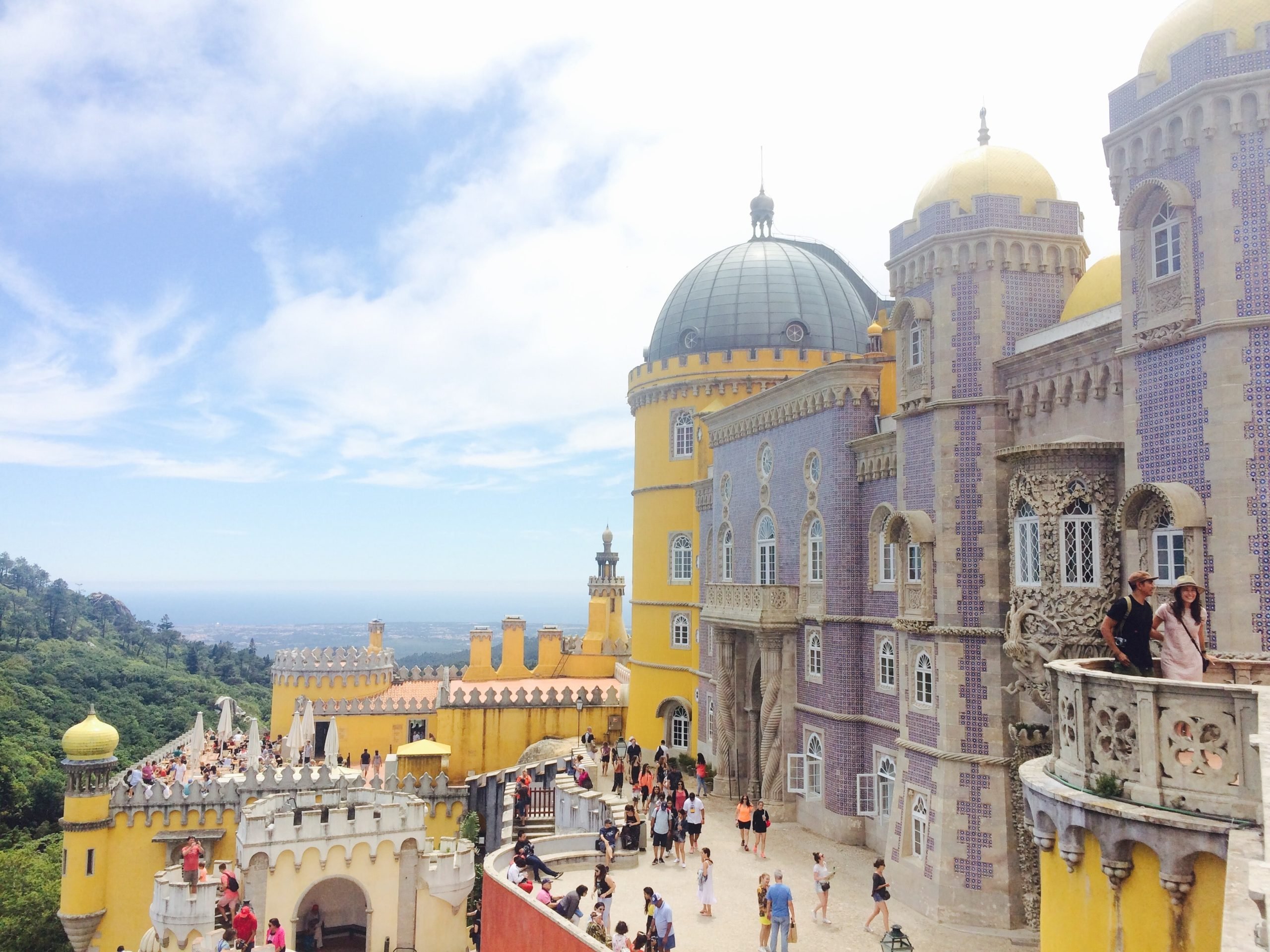
Guide to Sintra
We recommend having lunch at a seafood restaurant in Cascais. Our favorites are Furnas do Guincho and Baia do Peixe, the latter being a more affordable alternative.
Then it’s time to explore Cascais, the richest municipality in the country! Head to “Praia da Rainha”, a secluded beach with a wonderful view, perfect for a family photograph.
Find Frederico Arouca street, a high street with major stores selling Portuguese souvenirs. Then walk to the City Hall in Praca 5 de Outubro, a beautiful building surrounded by cobblestoned streets.
To wrap up your day, head to Guincho beach, a 10-minute drive from the center of Cascais, to watch the sunset. If the weather is nice, take a dip! But be careful with the waves as they can get quite high.
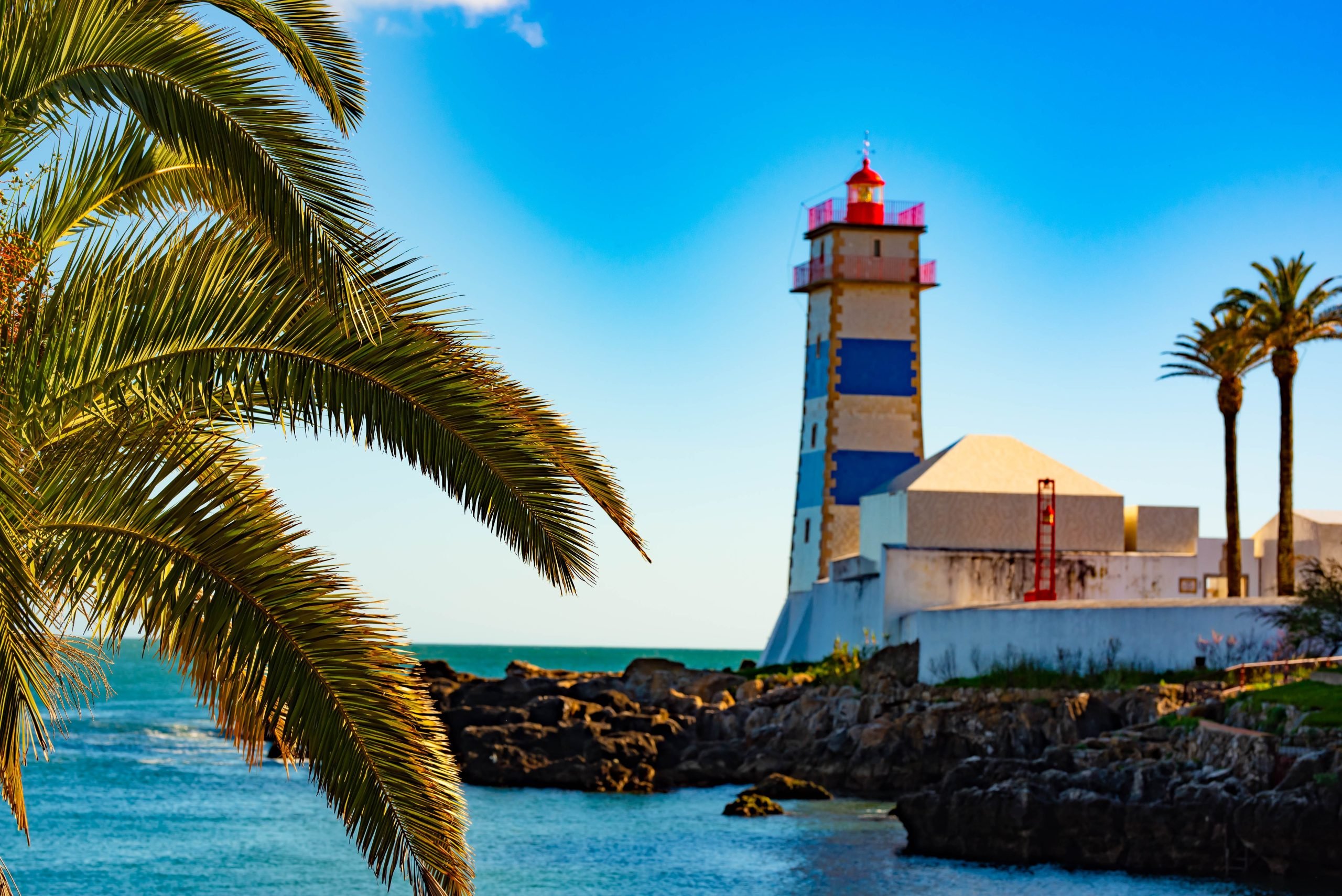
Guide to Cascais
Day 4 & 5: Tavira
A 3-hour drive from Lisbon, drive south to Tavira, in the beautiful region of the Algarve. Alternatively, you can catch a train to Faro or a bus directly to Tavira.
Tavira was built alongside River Gilão and features some of the best beaches in the Algarve, as well as picturesque narrow streets with traditional houses. Along with the stunning beaches, the town has multiple attractions such as shops and historical buildings.
Your two days will be more slow-paced than the past days in Lisbon. You will be spending most of your time at the beach.
Our favorite beach is Praia do Barril. The beach features a wooden path over golden sand which provides a gorgeous contrast with the dark blue waters. Due to the large size of the beach, you will rarely feel like it’s too busy, despite its popularity.
Praia de Tavira and Praia da Terra Estreita are also great alternatives in Tavira. If you want to discover multiple beaches this affordable 4-hour boat tour takes you on an octopus tour and stops at multiple beaches.
In between resting at the beach, we recommend exploring Tavira. Take a walk through the city and explore the Chapel of Sao Bras, castle, and convent. Book this 100% electric 1-hour tuk-tuk tour if you want a guided tour of the city from a local’s perspective.
Tours in Tavira
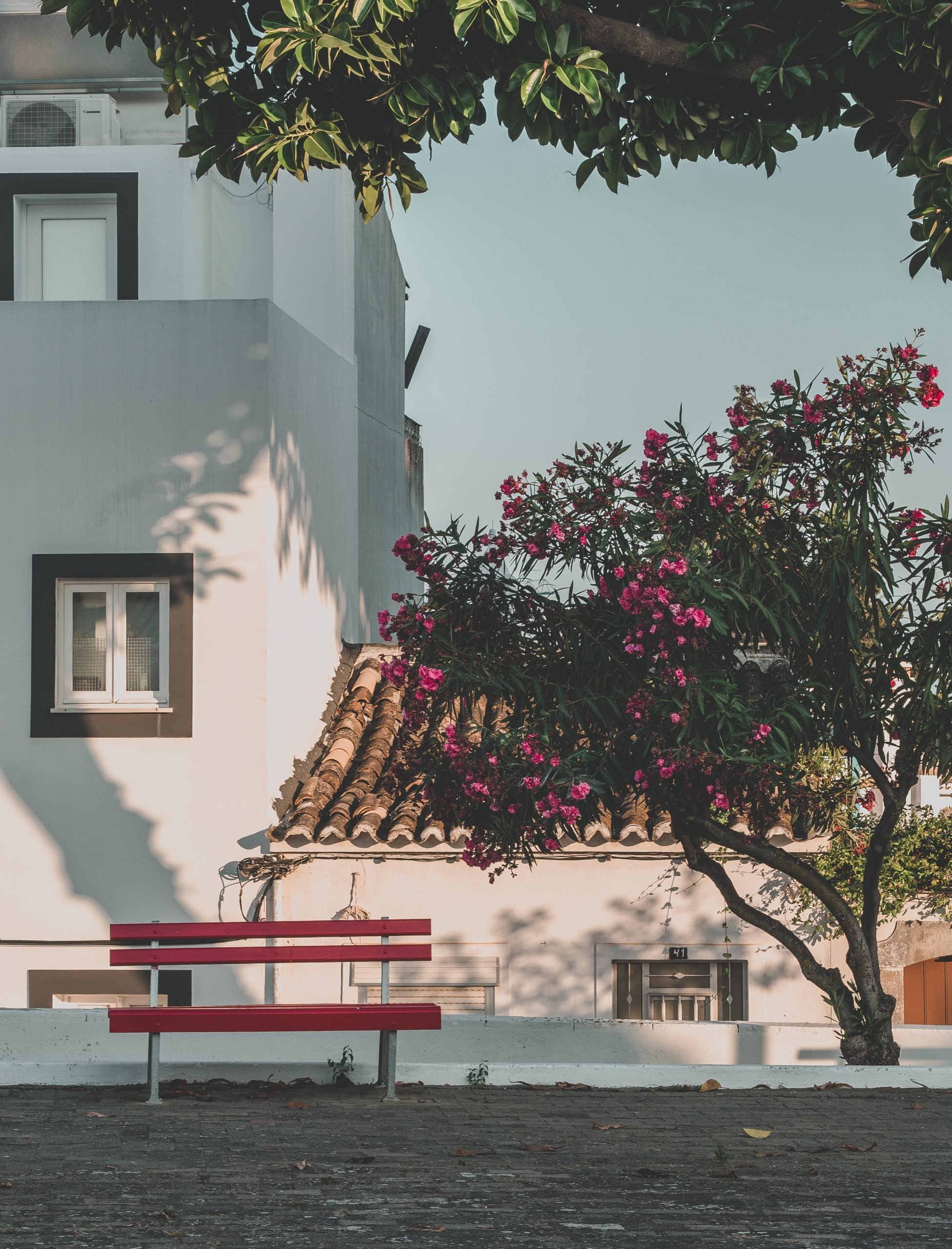
Best Hotels in Tavira
- São Paulo Boutique Hotel: São Paulo Boutique Hotel is located less than 5 kilometers from the beach and features an outdoor swimming pool, bar, shared lounge, and large garden for guests to enjoy.
- OZADI Tavira Hotel: A 4-star hotel AZADI Tavira Hotel is 3 kilometers away from the beach and features a large outdoor pool, a fitness center, and two restaurants.
- Quinta Dos Perfumes: An 8-minute walk from the beach, Quinta dos Perfumes is an 88-acre farmhouse that features beautiful orange groves and a salt-water outdoor pool.
Guide to Tavira
Day 6: Day trip to Benagil Caves
Benagil is a fishing village known for its stunning beaches and sea caves. The Benagil caves are a must-see if you head to the Algarve. We recommend booking a guided tour, many of which start in Albufeira. Here are the best day tours to Benagil Caves.
- Dolphins and Benagil Caves from Albufeira : This boat tour allows you to discover dolphins, marine life, and Benagil caves in an inflatable boat. A stop for a swim is included!
- Caves and Coastline Cruise from Albufeira to Benagil : This catamaran cruise takes you on a scenic route between Albufeira to Benagil. You will get to explore the sea caves and go for a swim.
- Boat Tour to Benagil Caves from Armacao de Pera : A boat cruise from Armacao de Pera that takes you to see the Benagil Caves with a crew that will tell you about the region.
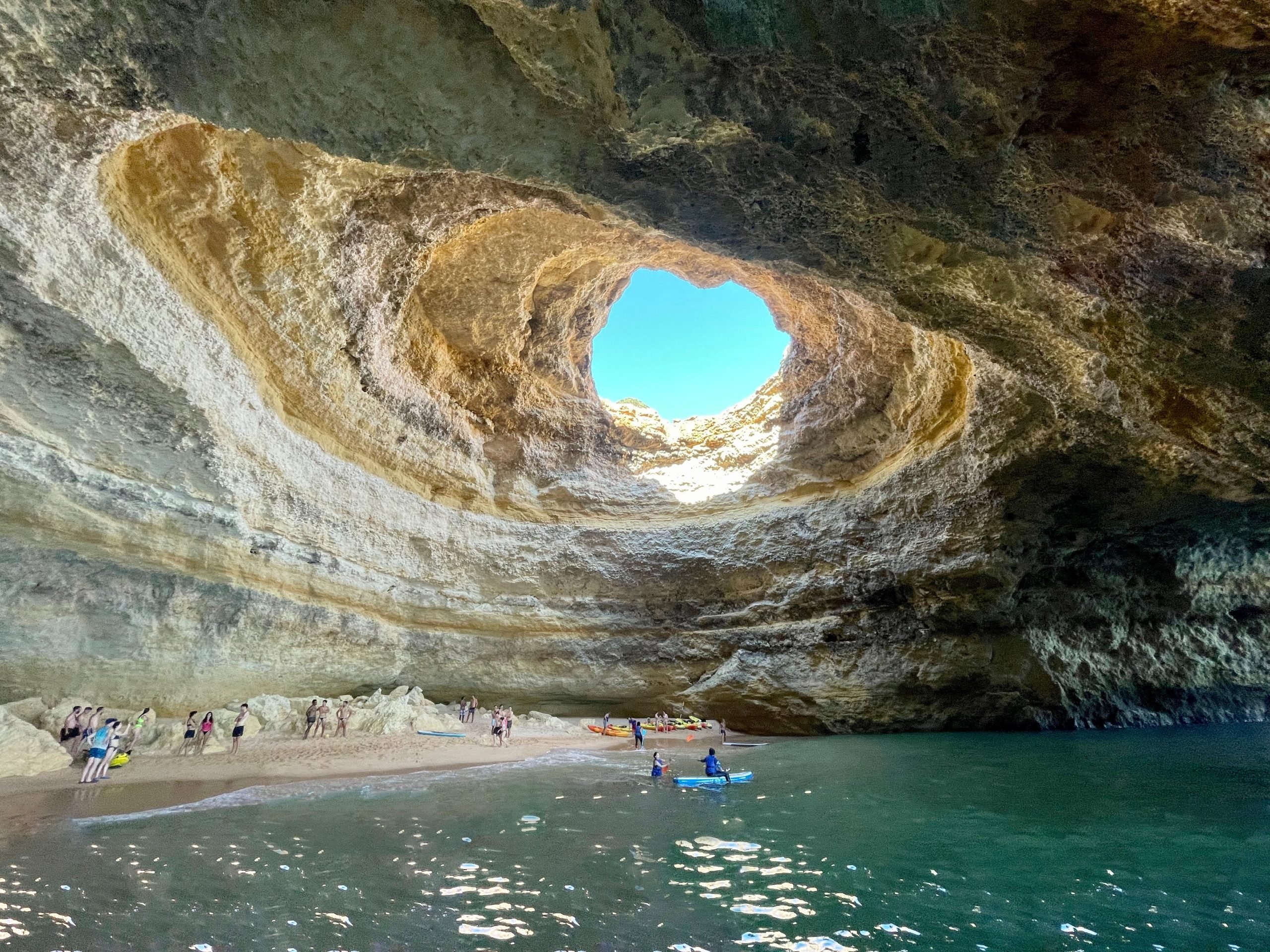
Benagil Tours
Day 7: Morning at the beach and travel home
Enjoy your last day at your favorite beach in Tavira. Again, we recommend Praia do Barril. Then travel back home from Faro Airport, only a 30-minute drive away from Tavira.

Receive the latest news, travel information, stories, offers and more!
Join our FB group Portugal Travel & Living for all things Portugal and news updates
Related articles, government reduces taxes for portugal golden visa, guide to renting in portugal, leave a reply cancel reply.
Save my name, email, and website in this browser for the next time I comment.
Most Popular
Latest articles, portugal’s new capital gains tax rules on property: what you need to know, what to watch out for when buying property in portugal, the top 10 news stories in portugal – september 7-september 14, 2024.
Portugal.com is an independently owned and operated tourism portal about Portugal. All information should be considered informational and for entertainment purposes. Some content may be promotional and/or have affiliate relationships where Portugal.com earns revenue promoting the content.
Want to advertise on Portugal.com? Would you like to write for us? Something else? Please feel free to Contact Us!
© Portugal.com
- Privacy Policy

Subscribe to our newsletter below to get the latest news, reviews, info and more!
Thanks, I’m not interested

HELPING YOU PLAN YOUR PERFECT TRIP TO PORTUGAL
25 essential tips for your first trip to portugal.
This post may contain affiliate links, which means I may receive a commission, at no extra cost to you, if you make a purchase through a link. Please see my full disclosure policy for further information.

If you’ve never been to Portugal, you’re in for a treat. You might even fall a little bit in love, especially if you know what to expect. My insider Portugal travel tips can help you prepare and make your first trip go as smoothly as possible.
Knowing a little about local customs, especially in restaurants, will help you feel more confident and avoid that nasty suspicion that you’ve been ripped off.
If you’re still trying to decide if Portugal is the place you want to visit then read my Portugal: 15 Reasons To Make It Your Next Destination post.
Read on for my insider advice on planning a trip to Portugal including what to bring, what to expect when eating out and how you can save money on accommodation, transport, food, shopping and activities. This practical travel guide is based on my 16+ years of travelling around Portugal, and helping other people plan their ideal Portugal vacation.
👉ALL THESE TIPS AND MORE IN ONE HANDY EBOOK 👈
I’ve combined these 25 tips with a wealth of other insider insights and practical information to help you avoid costly mistakes and plan your ideal Portugal trip.

Before you book your first trip to Portugal
1 . Try to avoid the hottest, busiest and most expensive months of July and August if possible. You’ll find great deals, good weather (most of the time) and fewer crowds if you travel to Portugal off-season .
Weather-wise, May, June and September are usually hot but not unbearably so and although the risk of rain increases from October to April, and it does get cold at night, it’s possible to get lovely sunny days any time of year. If you’re travelling with young children, these slightly cooler months would make life a little easier – see my practical tips for family travel in Portugal .
Get the full low down on the best time to visit Portugal in this post .
2. Check travel times and distances between places if you’re considering visiting more than one region. It makes far more sense to take your time exploring one area properly and come back later to see another place than to spend half your holiday travelling between destinations.
If you feel you must cram as much as possible into one trip, you can save a few hours by flying between Faro and Porto. There are flights between Lisbon and Porto but when you factor in getting to and from the airport and security checks, I don’t think you save much time compared to train or road transport and it’s not great for the environment.
See my fully-managed Portugal itineraries if you don’t have the time or confidence to plan your own trip to Portugal.
3. If you’re making your own travel arrangements for touring Portugal, find out how to get from the airport to your accommodation before you book your flights. If you’re relying on public transport for transfers, especially between cities, you could get caught out if services finish earlier than you expected or don’t run at weekends.
You can pre-book an airport transfer if you’d rather keep things simple.
You may also want to get a SIM card on arrival so that you’re connected as soon as you arrive and can order an Uber/Bolt. You can buy data and normal SIM cards from the Vodafone shop at Lisbon and Porto airports or, if you intend to a lot of data-heavy work while travelling, an international SIM card may be a better option.
For more useful insights check out my How To Get Internet And Phone Service During Your Trip To Portugal post.
Read my post on why I believe it’s important to consult a travel expert when planning your trip .
Discounts on Portugal travel
4. More and more destinations in Portugal offer a tourist card, such as the Lisbon Card and Porto Card , which give free or discounted public transport and discounts on all manner of typical holiday expenditures.
That said, you need to make sure it’s actually going to save you money so find out which of the places you want to visit offer reduced entrance fees with the cards. If you are over 65, most museums give you 50% discount anyway.
Tip: Check the local tourist information website before you travel to see what’s available and start saving money from the moment you step off the plane.
My favourite sites for saving money on accommodation and car hire are here: Where To Find The Best Portugal Travel Deals .
See my Portugal accommodation guides to help you find a great place to stay
Note that major destinations in Portugal have introduced a tourist tax of €1-2 per person per night to cover the increased pressure on the local infrastructure. You pay this at your accommodation so budget accordingly.
Keep in mind that if you’re a non-EU resident you may be able to claim back the tax you’ve spent when shopping. For details check out my Tax free shopping in Portugal for Non-EU Residents post.
Documents to bring on your Portugal trip
5. Double check that your passport is in date – you may need it to be valid for at least 6 months beyond the date of travel if coming from outside the EU – and bring a couple of photocopies with you.
By law, you have to carry photo ID when in Portugal but won’t want to risk losing your precious passport so leave that in your hotel safe and keep a photocopy with you and carry some alternative form of photographic ID like a driving licence.
6. If you live in the EU, apply for and bring your European Health Insurance Card . It doesn’t substitute full travel insurance but will reduce the costs of emergency treatment. If you’re coming from elsewhere, you should make sure you have insurance to cover health emergencies as the costs can quickly soar. Get a quote from Yonder
7. The good news is that you don’t need any special vaccinations for visiting Portugal unless you’re coming from a Yellow Fever zone.
8. If you have an EU passport, you don’t need a visa to enter Portugal. Other passport holders should check Visit Portugal’s Entry Formalities although American, Canadian and Australian citizens can travel visa-free for 90 days (total) within the Schengen area.
9. If you plan on renting a car, don’t forget your driving licence – if you’re coming from certain countries, you may need an International Drivers’ Permit so check with the rental company and, if necessary, get one before your trip. Drivers with licenses issued in the UK, USA and Canada don’t need an IDP.
You need to have your licence with you when driving in Portugal plus the paperwork for the car and your ID.
See these essential tips for renting a car in Portugal

Money matters when visiting Portugal
10. I always like to have some local currency on me when I arrive in a foreign country but if you do land in Portugal without euros, there are ATMs (look for Multibanco signs) in all international airports and towns so you can withdraw euros directly from your bank account or top up your cash if you run out. Avoid Euronet machines as their charges can be extortionate.
11. Although credit cards are accepted in many places, smaller outlets, including some restaurants, only take cash. Note that if you pay by credit or debit card you will probably be charged for each transaction so check with your bank before deciding how you want to pay for purchases.
12. If you exchange money before travelling to Portugal, try to avoid bringing large bills, i.e. bigger than 50 euros. If your currency exchange provider has given you a stack of 100, 200 or worse, 500 euro notes, take them into a local bank when you arrive to get a stash of smaller notes.
Packing tips for a trip to Portugal
13. Clothes-wise, several thin layers are a good idea as they allow you to adapt to changeable temperatures. Loose, lightweight natural fibres will help you cope with the summer heat but you’ll need jeans/heavier trousers and sweaters in winter.
Bring comfy shoes or sandals, depending on the season, preferably with fairly thick non-slip soles. When you see the uneven cobbled pavements , you’ll understand why. Don’t wear spiky heels unless you want to ruin them or break your ankle.
For detailed advice about what to bring, read my guide to packing for Portugal .
If you’re coming to do a walking holiday, this article about what to pack for long distance hikes may be more relevant.
14. If you’re venturing deep into rural Portugal, you’ll need to be better equipped as local shops stock a more limited range of products. In the natural parks, shops of any description are few and far between.
15. It’s not standard practice for Portuguese accommodations to have tea-making facilities in guest rooms even if they do have a fridge. If you can’t live without your cuppa, pack a travel kettle and a few decent tea bags. Be warned that fresh milk is much harder to find than UHT in Portugal so you might prefer black or herbal teas.
16. Even if you’re travelling to Portugal in winter , you should bring sunglasses and use factor 30 sun cream as minimum if you have fair skin. Bring a fold-up umbrella too, just in case. You’ll need a hat in summer and insect repellent if, like me, you attract mosquitoes and other biting insects.
17. When visiting a major tourist destination like the Algarve, Porto or Lisbon, or basically any large town or city, don’t worry if you forget to pack something or are hampered by hand luggage restrictions. With the exception of obscure prescription medication, you can buy pretty much anything you’re likely to need in Portugal although some things, like sun cream and bug repellent, may be a little pricier.
Learn a little Portuguese
18. While it’s perfectly possible to get by in English in the major tourist areas, learning a few simple phrases in Portuguese will go a long way.
No one expects foreigners on holiday to be proficient in the language but just saying thank you in Portuguese is appreciated. It’s obrigado if you’re a man and obrigada if you’re a woman, by the way.
There are plenty of free and affordable resources to help you learn European Portuguese .
As for Portuguese phrasebooks , the best of the bunch is probably the Lonely Planet Portuguese Phrasebook & Dictionary , which has sections on eating and drinking as well as all the functional language you’d expect and help with pronunciation.

Eating out in Portugal – tips for travellers
The most common complaint I see on TripAdvisor is from people who think they’ve been ripped off by Portuguese restaurants. Most of the time, it’s simply a case of not knowing the local customs.
19. It’s standard practice for waiters to bring you little dishes of olives, bread, cheese and cold meats but they are not freebies unless they are part of a set menu.
If you don’t want them, just politely send them back untouched and you won’t be charged. Strictly speaking, you shouldn’t be charged for items you didn’t order but it avoids confrontation if you know how to deal with this in advance.
If you are tempted but worried about the creeping cost of your final bill, check the price before tucking in. The bread and olives are usually very cheap.
20. Super-fresh fish and seafood are among Portugal’s gastronomic highlights.
Seafood restaurants often have a selection of the catch of the day displayed on a bed of ice. You choose the fish and they grill it to perfection. In such cases, it’s hard to know how much it will end up costing as the fish is charged by weight. To get an idea of the price and avoid a nasty surprise at the end of a lovely meal, ask the waiter for an estimate during the selection phase.
Alternatively, order a Cataplana de Marisco (seafood casserole) or Arroz de Marisco (seafood rice) which are usually stuffed with ocean goodies for a fixed price.

21. Don’t be surprised if your main course seems lacking in vegetables. Many Portuguese people get their greens and other vegetables by starting a meal with a soup. Ask what the main dish is served with and order a side salad or vegetables if you feel the need.
22. Unlike in the UK where a waiter will usually take your drinks order while you’re contemplating the menu, food gets priority in Portugal. The waiter may bring some unsolicited (but not free – see above) appetisers to your table before taking your order but will often not ask about drinks until the food has been dealt with. If you’re parched and need a drink while deciding, you’ll need to initiate the drinks order when the waiter brings the menu.
23. A great way of economising on eating out is to do what the locals do and have a main meal at lunchtime with a menu do dia (set menu of 2-3 courses) or prato do dia (dish of the day). Check what is and isn’t included before saying yes to everything the waiter offers you but generally speaking, you can get a 3-course meal with wine for under 10 euros.
See this post about Portuguese food you should try
Read about wonderful Portuguese drinks, beyond wine.
More information in How To Order Like A Local At Restaurants, Cafés & Bars In Portugal
The first two of these books about Portuguese food have lots of practical information to help you be more adventurous when trying local dishes.
Festivals and sightseeing in Portugal
24. It’s well worth checking out some of the local events while you’re here. Every town, village and city has at least one food or saint-related festival at some point during the year, especially during the summer months.
My guide to Portuguese festivals and celebrations gives you a seasonal sense of what’s on.
The Visit Portugal website has details of major events including music festivals, sports championships and film festivals.
For smaller events, look out for somewhat garish posters on lamp posts and bus stops or check with the local tourist information office or regional tourism websites such as Visit Algarve to find out what’s on during your stay but don’t expect the information to be published more than a few weeks in advance.
25. If you intend to visit museums and monuments, there are two important things to consider. One is that some offer free admission on Sunday mornings or discounts with the local tourist card.
The other is that most are closed on Mondays so you’ll need to check and plan around this if you have your heart set on seeing something specific.
If you need help with your Portugal itinerary, I can get you on the right track with a range of trip planning services .
Bonus tip: Getting through customs in Lisbon airport
Sometimes there is a very long queue at customs when you arrive in Lisbon airport, often early in the morning when international flights arrive (don’t ask me why they haven’t organised staffing to deal with this!).
If you have an EU passport you can use the EU passport line to avoid the longer “All passports” queue.
If you don’t have that option, the Priority Passport Line, which is mainly for crew, is also an option for anyone who is disabled, pregnant, elderly or traveling with children under two.
If none of those apply, you could be in for a long wait so go to the bathroom before joining the queue.
When it’s time to leave Portugal, you may be able to claim tax back on shopping you’ve bought. To find out what you need to do check out my Tax free shopping in Portugal for Non-EU Residents post.
Looking for a Portugal travel guide book?
Click on the links below to see my top picks via Amazon
My first choice would be a DK Eyewitness Travel Guide to Portugal , partly because I’ve contributed to them in the past and partly because I like the pictures, maps and layout.
The Frommer’s Portugal Guide is written by two well-respected journalists who live in the Lisbon area, one Portuguese and the other British. Having met them both, I would certainly trust their recommendations.
I also like Rough Guides’ approach to travel guides and their Portugal travel guide is no exception.
You may also be interested in:
15 Fantastic day trips from Porto
How and when to explore the Douro Valley
25 things to do in Coimbra
Pin me for later!

First trip to Portugal? Here are 25 essential tips.
104 Comments
We are a family of 5 traveling in June to Lisbon to spend 4 days then 3 days in Porto, than back to Lisbon for 1 more day before we leave. Wondering if public transportation is the way to go to get around- WE are a family of 5 and not if that is the most cost efficient. Our kids are older teenagers’ and will want to indulge in food and wine and culture. Any recommendations would great be appreciated- Your site is great too
Thanks Ricardo, that means a lot to me.
Over to you. Please share your thoughts in a comment. Cancel reply
Content copyright © Julie Dawn Fox, 2010-2024 | Privacy Policy | Disclaimer & Disclosure | Advertising & Media | Terms & Conditions | Shipping, Refund & Returns Policy | Contact | Camino Português | Sustainability Policy
Portugal Road Trip: The Best Travel Itinerary for 2 to 3 Weeks
Incredible rock formations, breathtaking beaches, and some of the most beautiful cities in Europe – you’ll find all this and more waiting for you in Portugal.
In our opinion, Portugal is the perfect road trip destination ! The distances are not too great, the roads are in great condition, and the costs are quite reasonable. Plus, you get to explore a truly stunning and diverse country.
To make your road trip planning in Portugal easier, we’re sharing our travel itinerary in this blog post. We’ve visited Portugal three times, and our itinerary is essentially a ‘best of’ with plenty of alternatives , so you can customize your trip to be either shorter or longer, just the way you like it.
1. Road trip through Portugal: The best itinerary for 2 to 3 weeks
2. map: our portugal travel itinerary at a glance, 3. transport & car rental for your portugal road trip.
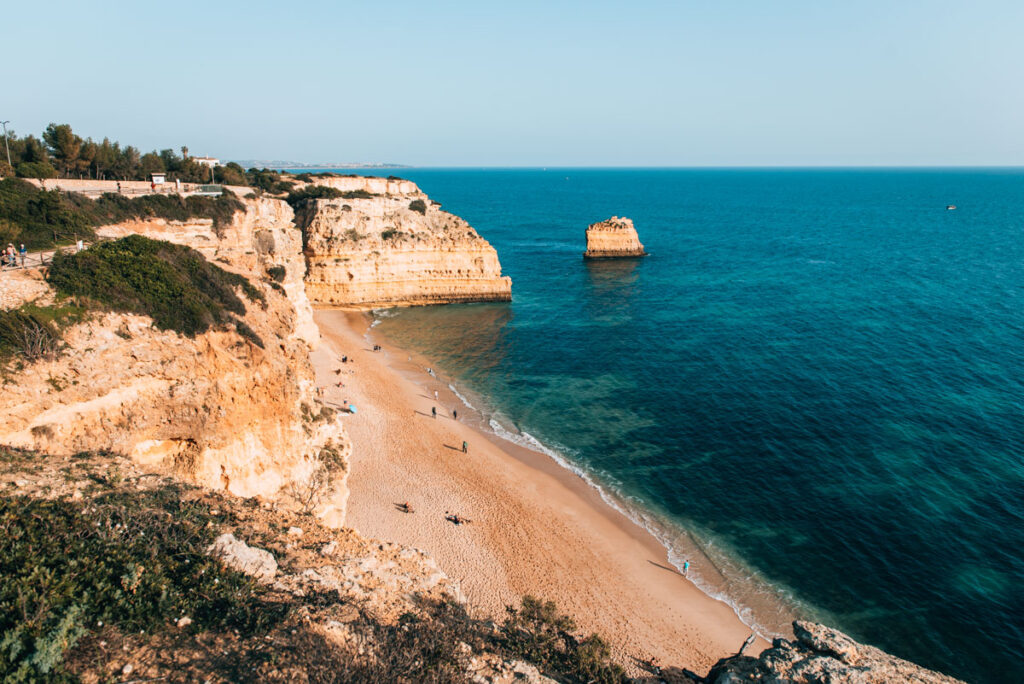
We chose to do a multi-city flight for our road trip, kicking off in Porto and wrapping up in Lisbon. That means our travel plan is tailored accordingly. If you’re heading back from the same city (like Porto or Lisbon), stick around till the end of this chapter for a handy tip on how to extend your adventure.
Our journey kicks off in the stunning city of Porto . Even though it’s often in the shadow of its big sister Lisbon, we think Porto really stands out. From its vibrant Azulejos to its iconic landmarks, Porto had us falling in love from the get-go.
What’s there to do in Porto? Well, you’ve got the famous train station decked out in artistic tile work, the majestic Ponte Dom Luís I, and the Torre dos Clérigos, which offers an incredible view over Porto.
We reckon Porto is the perfect starting point for a road trip . It’s small enough to stroll through all the key spots on foot, but still packs a punch with its stunning scenes.
Our detailed travel guide : Porto Travel Guide Recommended stay : 2 to 3 nights
Our accommodation in Porto: Village by BOA

Stopover: Aveiro & Costa Nova
Continuing south on our Portugal road trip, we recommend making a quick detour to Aveiro, which you can reach from Porto in about an hour’s drive. Often dubbed the “Venice of Portugal” , Aveiro is crisscrossed by several canals that truly give it a Venetian vibe.
If you’re feeling peckish and want to experience Portuguese cuisine at its best, we have a special recommendation for you: Salpoente Restaurant . Located in a traditional fisherman’s house, you can expect excellent food.
After a stroll through Aveiro, you might consider another stop and head towards the sea: Just about 20 minutes by car is the coastal town of Costa Nova. It’s known for its brightly striped houses along the promenade.

The next leg of our itinerary takes you to the university city of Coimbra . Coimbra is a compact town that you can comfortably explore on foot in a day.
The city is home to the oldest university in Portugal , which is also its main attraction. The old town of Coimbra is situated on a hill, with narrow and steep alleys. So, make sure you have some comfy shoes!
Lastly, make sure to catch the view of Coimbra from afar (like from the bridge) – especially during sunset. From this perspective, you won’t see the many areas of Coimbra’s old town that are actually in need of renovation.
Our detailed blog post: Coimbra Travel Guide Recommended stay : 1 to 2 nights
Our hotel in Coimbra: Hotel Quinta das Lagrimas

Bonus Side Trips: The UNESCO Monasteries of Tomar, Batalha & Alcobaça and/or the Surf Spot Nazaré
From Coimbra, you have a couple of options. You can either head straight to Óbidos, which is just under 1.5 hours away, or you can take a scenic detour to visit the renowned Convent of Christ in Tomar, followed by the monasteries in Batalha and Alcobaça, in that exact order. Opting for the detour will add about an hour to your drive time.
Visiting all three monasteries in one travel day is certainly a challenge, but it’s doable (we did it too). It’s definitely worth it for those interested in culture. It’s no coincidence that all three monasteries are UNESCO World Heritage Sites and are truly impressive.
Another possible stop is the surf spot Nazaré . This coastal town is known for its “Big waves.” With the right weather conditions, the waves here can get crazy gigantic in the winter months (between November and February)!

The tiny medieval town of Óbidos is the next stop on our Portugal Trip. With its white, flower-decked houses and cobbled streets, Óbidos is definitely one of the prettiest towns in all of Portugal.
The absolute highlight in Óbidos is its medieval city wall , which you can climb. Stretching 1.5 kilometres, it encircles the town centre. Those who aren’t afraid of heights can enjoy splendid views of Óbidos from up there.
Many visit Óbidos on a day trip (Lisbon is about an hour’s drive away). However, we’d recommend planning an overnight stop on your route here. This way, you can comfortably explore Óbidos in the quieter evening hours, away from the tourist crowds.
Our detailed travel guide : Óbidos Travel Tips Recommended stay : 1 to 2 nights
Our accommodation in Óbidos: Cavalo di Madeira

Our rod trip now continues further inland to the city of Évora. From Óbidos, it’s just over a two-hour drive to reach Évora. This city turned out to be one of the biggest surprises of our road trip—and pleasantly so. Here, you’ll discover a delightful, well-maintained town.
The unique charm of Évora is enhanced by the Roman Temple —a major highlight. Right beside it, you’ll see the impressive Cathedral of Évora , the biggest cathedral in Portugal. A visit to the cathedral is a must; the Gothic cloisters are stunning, and the atmosphere on the cathedral’s roof is unlike any other.
Including Évora in your Portugal itinerary comes highly recommended. We absolutely adored it here. Given that the town is fairly compact, you can explore all its main sights on foot in just one day.
Our detailed travel guide: Évora Travel Guide Recommended stay: 1 to 2 nights
Our hotel in Évora: Moura Suites Hotel

No itinerary through Portugal would be complete without visiting the Algarve! The southernmost region of Portugal has a magnetic pull for travellers and serves as the country’s tourist hub. And for good reason: the rugged coastal landscape here is spectacular – we’ve never seen anything quite like it.
The Algarve covers a relatively large area. If you have time, consider dividing your stay between the quieter east and the more touristy west, spending a few nights in each area to fully experience the diversity of the region.
A great place to explore the Algarve is Lagos . Not only is Lagos a quaintly beautiful town; it also offers easy access to many incredible beaches nearby.
Our detailed travel guide: Algarve Road Trip Itinerary Recommended stay : 4 to 7 nights
Our accommodation in the east of the Algarve : Âmago Guesthouse
Our accommodation in the west of the Algarve (Lagos): Casa Margô

Last but not least, our Portugal road trip concludes in the capital , Lisbon. Widely considered one of Europe’s most stunning cities, we wholeheartedly agree. With Azulejos at every turn, and its narrow, hilly streets, Lisbon’s charm is absolutely one of a kind.
Though Lisbon’s beauty is well-known, it has become quite touristy (even in the off-season). Still, we reckon that no Portugal itinerary is complete without a visit to Lisbon.
During your stay in Lisbon, consider taking a day trip to the nearby town of Sintra . This quaint town is home to the colorful Palácio Nacional da Pena, one of Portugal’s most iconic photo spots.
Our detailed travel guide : Lisbon Highlights Recommended stay : 3 to 5 nights
Our hotel in Lisbon: Memmo Alfama

Extended Tip: A Round trip Tour of Portugal Instead of a One-way
If you’re flying return to Lisbon or Porto (instead of flying in and out from different locations), here’s a tip for you. You could travel around Portugal in a circle by incorporating the mountainous inland, such as the Serra da Estrela (the highest mountain range in Portugal), into your itinerary. A stop in the picturesque town of Viseu would also be possible. You can find more tips on these places in this blog article: Roadtrip Centro de Portugal.
In this case, the route might go as follows: Lisbon – Algarve – Évora – Serra da Estrela – Viseu (stopover) – Porto – Aveiro (stopover) – Coimbra – Tomar, Batalha & Alcobaça (stopover) – Óbidos – Lisbon.

To help you visualize the route better, we have marked all the stops of our road trip on this map. You can find out how to turn a one-way road trip into a circular tour (starting and ending at the same place) in the previous chapter.
Renting a Car in Portugal
If you’re not traveling with your own car to Portugal, then renting a car is essential for your road trip. We almost always book our rental car through Sunny Cars. Sunny Cars is a platform that compares offers from various car rental companies. You book via Sunny Cars, but pick up your car locally from the rental agency (e.g., Hertz).
Adequate insurance coverage is crucial! Good news for those who book through Sunny Cars: comprehensive insurance (including deductible reimbursement) is already included.
For more general tips on renting a car, check out our detailed blog post: Renting a Car (coming soon).
Here you can search for affordable rental cars : Sunny Cars
Driving & Toll Roads on a Road Trip Through Portugal
Don’t worry if you have concerns about driving in Portugal: the roads are well-maintained, and the traffic is manageable. We find driving in other countries (e.g., Italy) to be much more stressful.
Things are a bit different in the cities: the closer you get to the old town, the narrower the streets become. (It’s a good thing that rental cars are usually equipped with distance sensors.) Overall, if you’re reasonably practiced in driving, you shouldn’t worry too much.
In Portugal, some highways are toll roads. It’s best to get information when picking up your rental car about how the toll system works. In our case, we didn’t have to pay at the toll booths; the tolls were recorded thanks to a Via Verde transponder and then conveniently charged to our credit card. In this case, you can use the Via Verde lane and drive through without stopping.

Disclaimer: Affiliate Links
This travel guide contains our personal recommendations in the form of affiliate links. If you book or buy something through these links, we receive a small commission. This does not change the price for you at all. A massive thank you from us both!
Have you ever done a road trip through Portugal? How was your itinerary? What stops would you like to add to the itinerary? We’d love to hear from you in the comments below!
More Portugal Travel Guides

Best of Lisbon: The Ultimate Travel Guide and Tips

Best of Lagos (Portugal): Travel Guide, Beaches & Our Tips

Algarve Road Trip: The Complete Travel Guide & Our Tips
Leave a reply cancel reply.
Your email address will not be published. Required fields are marked *
- Privacy Policy
- How to get to Portugal
Book your individual trip , stress-free with local travel experts
Select Month
- roughguides.com
- getting-there
- Travel guide
- Itineraries
- Local Experts
- Travel Advice
- Accommodation
Plan your tailor-made trip with a local expert
Book securely with money-back guarantee
Travel stress-free with local assistance and 24/7 support
Just wanted to express my thanks to Joel and Rough Guides for a wonderful trip! Everything was well-chosen and we just loved all of the hotels, sightseeing...
Whether you're planning a transatlantic flight from North America, a scenic train journey from Western Europe, or an adventurous road trip from neighbouring Spain, here’s how to get to Portugal .
Where to fly into Portugal?
How to get to portugal from the us, how to get to portugal from the uk and ireland, how to get to portugal from canada, how to get to portugal from europe, flying to portugal from australia and new zealand, do you need a visa.
There are regular direct flights to Lisbon , Faro and Porto from all over Europe and some US cities, though travellers from outside Europe may find it cheaper to fly via London and arrange onward travel from there.
If you're keen on exploring parts of France or Spain along the way, or if you're travelling with a vehicle, you can opt for a combination of ferry, rail, and road. However, it's worth noting that these options tend to be more expensive than flying.

Typical Alentejo houses in the Castle of Monsaraz © Joao Custodio/Shutterstock
When you're heading to Portugal, you'll likely land at one of the main international airports: Lisbon Airport (LIS), Porto Airport (OPO), or Faro Airport (FAO). Lisbon Airport is the largest and busiest, located in the capital city, and it offers a wide range of international flights. Several airlines offer flights to Portugal:
- TAP Air Portugal
- British Airways
- United Airlines
- American Airlines
- Delta Air Lines
The cheapest time to travel to Portugal typically falls during the shoulder seasons, which are spring ( April to June ) and autumn ( September to October ). If you’re still deciding when to plan your trip, see our guide to the best time to go to Portugal .

Capo Da Roca, the most western point of Europe, Sintra, near Azoia © Tsuguliev/Shutterstock
Flying from the US to Portugal usually involves a connecting flight, often through Frankfurt. Major airlines like TAP Air Portugal, Delta, and United offer both direct and indirect flights to Lisbon and Porto from various US cities.
- A direct flight from New York to Lisbon takes about 7-8 hours , while a direct flight from Los Angeles to Lisbon takes 11-12 hours .
- Ticket prices for a round trip can range from $600 to $1200 , depending on the airline and when you book.
From the UK and Ireland, you can fly directly to Portugal from airports like London Heathrow, Gatwick, Manchester, and Dublin. Airlines such as TAP Air Portugal, British Airways, and easyJet frequently fly to Lisbon, Porto, and Faro.
- A direct flight from London to Lisbon takes around 2-3 hours .
- Round-trip prices start at £50 to £200 .

25th of April Bridge and Lisbon skyline © Richie Chan/Shutterstock
Driving to Portugal from the UK or Ireland
If you're up for a road trip , you can drive from the UK or Ireland to Portugal. Use the Eurotunnel or ferry to get to mainland Europe, then drive through Spain to reach Portugal.
The drive from London to Lisbon is about 1,450 miles (2,330 km) and takes roughly 24-30 hours.
Costs for fuel, tolls, and ferry crossings can add up to between £200 and £400 each way.
Portugal by train
Travelling from London to Lisbon by train takes about 24 hours. Start by taking the Eurostar from London St Pancras to Paris. From Paris, hop on a high-speed TGV train to Irun on the Spanish border. Finally, board the overnight Sud-Express "train-hotel" for the last leg of the journey to Lisbon.

Building with azulejos tiles is Igreja dos Congregados. Porto, Portugal © AdobeStock
Travelling from Canada to Portugal involves connecting flights through major European cities like London, Paris, or Amsterdam. Airlines such as Air Canada, TAP Air Portugal, and Lufthansa offer routes to Lisbon and Porto.
- Flights from Toronto to Lisbon typically take 8-10 hours with layovers
- Flights from Vancouver to Lisbon typically take 12-14 hours with layovers
- Round-trip tickets range from CAD 800 to CAD 1500 .
Getting to Portugal from Europe is a pretty easy, thanks to its well-connected transportation networks encompassing air, rail, and road routes. Whether you're travelling from Western, Eastern, or Southern Europe, reaching Portugal is straightforward.
- Western Europe : Direct flights to Portugal are available from major cities like Paris, Frankfurt, and Amsterdam. Airlines like Air France, Lufthansa, and KLM fly to Lisbon, Porto, and Faro.
- Eastern Europe: Travellers often need to take indirect flights with layovers in major European hubs.
- Southern Europe: Countries like Spain and Italy offer direct flights and convenient train connections through Spain. Driving is also an option often.

Old town in Albufeira, Algarve, Portugal © Shutterstock
There are no direct flights to Portugal from Australia or New Zealand, but many airlines offer through-tickets with their partners via their European or Asian hubs. Flights via Asia are generally the cheaper option.
If you’re seeing Portugal as part of a wider European trip, you might want to aim first for the UK, since there’s a wide choice of cheap flights to Portugal once there.
- Australia: The total travel time is about 20-30 hours , and round-trip fares start from AUD 1,500 , going up to AUD 3,000 or more.
- New Zealand: Flights from Auckland, Wellington, and Christchurch take around 25-35 hours . Round-trip tickets range from NZD 2,000 to NZD 4,000 .
If you hold a US, UK, or Canadian passport, you don't need a visa for stays up to 90 days within a 180-day period. Just make sure your passport is valid for at least six months beyond your planned departure from Portugal. For longer stays or specific travel purposes like work or study, you'll need to apply for the appropriate visa.
The Rough Guides to Portugal and related travel guides
In-depth, easy-to-use travel guides filled with expert advice.
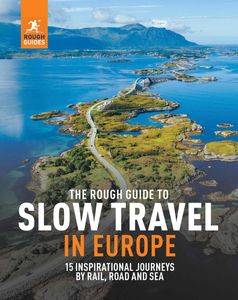
Travel advice for Portugal
From travel safety to visa requirements, discover the best tips for visiting Portugal
- Eating and drinking in Portugal
- Getting around Portugal: Transportation Tips
- Shopping tips for Portugal
- Travel Tips Portugal for planning and on the go
- Best time to visit Portugal
- 7 days in Portugal — 5 travel itineraries
Find even more inspiration for Portugal here

- Travel Tips

written by Mani Ramaswamy
updated 23.05.2024
Ready to travel and discover Portugal?
Get support from our local experts for stress-free planning & worry-free travels.
- Where to stay
- Travel advice

IMAGES
VIDEO
COMMENTS
Day 3: Lisbon (sleep in Lisbon) Day 4: Lisbon, or side-trip to Sintra by train (sleep in Lisbon) Day 5: Morning in Lisbon; in the afternoon, pick up car and drive 3 hours to the Algarve (sleep in Salema) Day 6: Beach day in Salema (sleep in Salema) Day 7: Side trip to Cape Sagres and more beach time (sleep in Salema) Day 8: Drive 30 minutes to ...
1. Go beyond the most famous Portuguese destinations. We'll start with the basics: when planning your trip to Portugal, remember that there's a lot to see beyond the coastal hotspots of Lisbon, Porto, and the Algarve.. Portugal is a (satisfyingly rectangular) country composed of 18 districts and two autonomous regions, with a myriad of places to visit beyond the most frequented, from its ...
7. Get a rechargeable Metro card if in Lisbon or Porto. If you're visiting Lisbon or Porto, which happen to be the only two cities in Portugal with a Metro system, we highly advise that you to use local public transport to move around the city rather than driving a car, as traffic can get pretty intense and finding parking may turn into an Odyssey.
Renting a car in Portugal is relatively straightforward, with rental outfits found in major towns, cities, and larger airports like Lisbon, Porto, and Faro. Scooters can be rented in larger cities and all over the coastal Algarve. Prices run around €40 per day, though you can get big discounts for multi-day rentals.
It's the cheapest way to get from Portugal and into the rest of Europe. A bus to Madrid, Spain costs around 30 EUR. Flying - Flying is the best way to get to the Azores, though it's likely not worth it for getting around the mainland. A flight from Lisbon to the Azores costs as little as 50 EUR, while Lisbon to Madeira starts at about 40 EUR.
Many years ago, as a young backpacker, I made plenty of mistakes when traveling around Portugal - from trying to see everything on one trip to indulging in free appetizers that weren't really free.. Since becoming both an honorary Lisboeta (Lisbon resident) and Tripeiro (Porto dweller), I have learned some essentials about the country. From the best methods for getting around to wardrobe ...
Its wild, rugged coastline, imposing mountains, beautiful whitewashed villages, and enchanting cities make Portugal one of the best destinations to visit in Europe.Dive deep into the Portuguese history in Porto, surf the great waters of the southern Algarve, or lazily stroll through the pretty streets of Obidos.There are lots of amazing things to do in Portugal - make your way around the ...
Photograph: Shutterstock. Catch a coach to the Algarve. There's just one coach a day from Sines to the Algarve beach town of Lagos - it costs €14.50 and departs at 10am. That gives you ...
Following is a list of the best things to do in Portugal, arranged so you have a ready-made Portugal travel itinerary. All you have to do is follow it to be taken on a fantastic vacation right across the country. Along the way, you'll get to visit Portugal's two largest cities, various smaller cities and towns, and the country's epic coast.
Sublime Comporta, for the best overall hotel; Travel Tip: The best way to explore Portugal is by driving yourself. We use Discover Cars for our rental cars in Europe, choose full coverage insurance, and opt for trusted companies like Alamo, Hertz, or Sixt. Renting a car and driving in Portugal is quite easy. Book your car with Discover Cars here.
Getting around in Portugal is easy, and the country's small size offers a variety of ways to explore its cities and countryside. Whether you're planning a family vacation, a solo adventure, or you've just moved to the country, understanding the portugal transportation system can help you make the most of your journey.This article will provide a comprehensive guide on the best ways to ...
Rental should include helmet and locks along with third-party insurance. Helmet use is obligatory. Taxis. Travelling by taxi in Portugal is relatively cheap by European standards, and meters are used in towns and cities - an average journey across Lisbon or Porto costs around €10-13.
Travelling by plane. There are three main airports in Portugal: the Porto airport in the north, the Lisbon Portela airport for travel to the centre region, and the Faro airport in the Algarve. The Lisbon airport is the primary entrance when coming from another country, but sometimes deals can be found for flights landing in Porto.
Portugal occupies most of the western coast of the Iberian peninsula. Although it's quite a bit smaller than neighboring countries, like Spain or France, the distance from top to bottom is still significant—traveling from Porto in the north to Faro in the south takes about five hours by car.The ... The best way to travel to Alentejo is by ...
Fatima, a centrally-located city in Portugal, is about a two-hour drive from Evora. Nearly everyone who visits this destination is here to see the Sanctuary of Fatima, a famous pilgrimage site that honors the place where the Blessed Mother allegedly appeared to three young shepherd children in the early 1800s.
7. Porto. Best for urban exploring. It would be hard to dream up a more romantic city than Porto. Portugal's second-largest urban center is laced with narrow pedestrian lanes, baroque churches and cafe-dotted plazas, leading the eye down to the Douro River and its landmark bridges.
There's a huge exhibition hall that houses royal yachts and brigs, fishing vessels and Portuguese ships with lots of room to explore. The Galliot Pavilion at Museu de Marinha, Lisbon. (Photo by Dia Adams) Admission to the Museu de Marinha is $6 for adults and $3 for kids 4-12.
Alfa Pendular (AP) deluxe trains are the fastest way to get around Portugal with speeds of up to 220km per hour (137 miles per hour). It connects all of the major cities in Portugal. They offer a mini bar, meals, wifi, audio and video channels. It is also the priciest option you can choose.
Day 1: Arrive in Lisbon. This 1-Week Itinerary in Portugal starts in the capital of Lisbon. Many cities around the world fly directly to Lisbon. You can fly directly to Lisbon from many US airports, including Miami, Boston, Washington, San Francisco, and New York. One of the oldest cities in western Europe, Lisbon has seen a boom in tourism due ...
Even if you're travelling to Portugal in winter, you should bring sunglasses and use factor 30 sun cream as minimum if you have fair skin. Bring a fold-up umbrella too, just in case. You'll need a hat in summer and insect repellent if, like me, you attract mosquitoes and other biting insects. 17.
1. Road trip through Portugal: The best itinerary for 2 to 3 weeks. We chose to do a multi-city flight for our road trip, kicking off in Porto and wrapping up in Lisbon. That means our travel plan is tailored accordingly. If you're heading back from the same city (like Porto or Lisbon), stick around till the end of this chapter for a handy tip on how to extend your adventure.
If you're seeing Portugal as part of a wider European trip, you might want to aim first for the UK, since there's a wide choice of cheap flights to Portugal once there. Australia: The total travel time is about 20-30 hours , and round-trip fares start from AUD 1,500 , going up to AUD 3,000 or more.
A scary movie night is a quick, easy, and entertaining way to celebrate Halloween without much planning. There are thousands of movies to choose from across various platforms and streaming services. We recommend Netflix, Prime Video, and Disney+ for the best horror movies. These platforms offer horror movies in abundance.